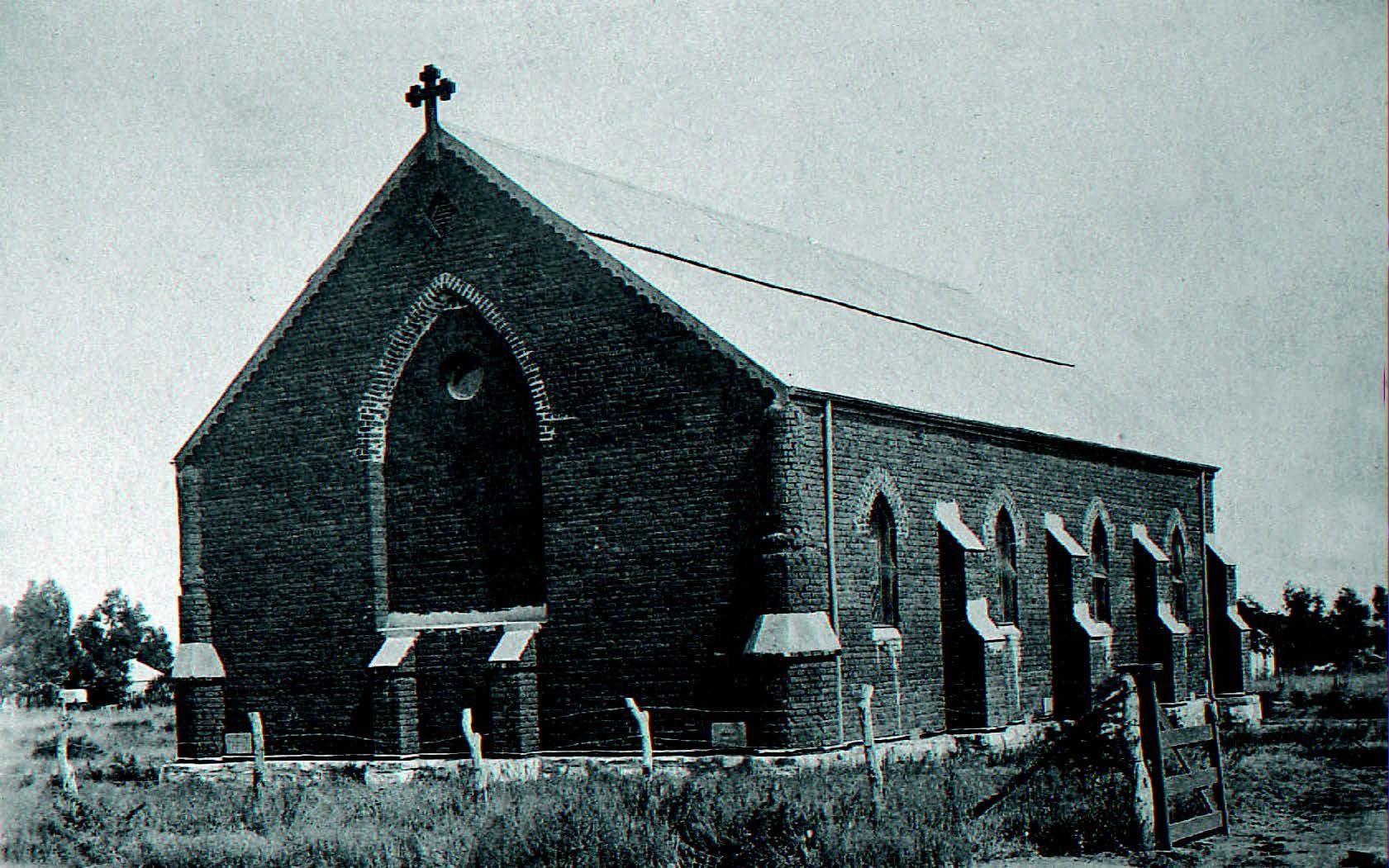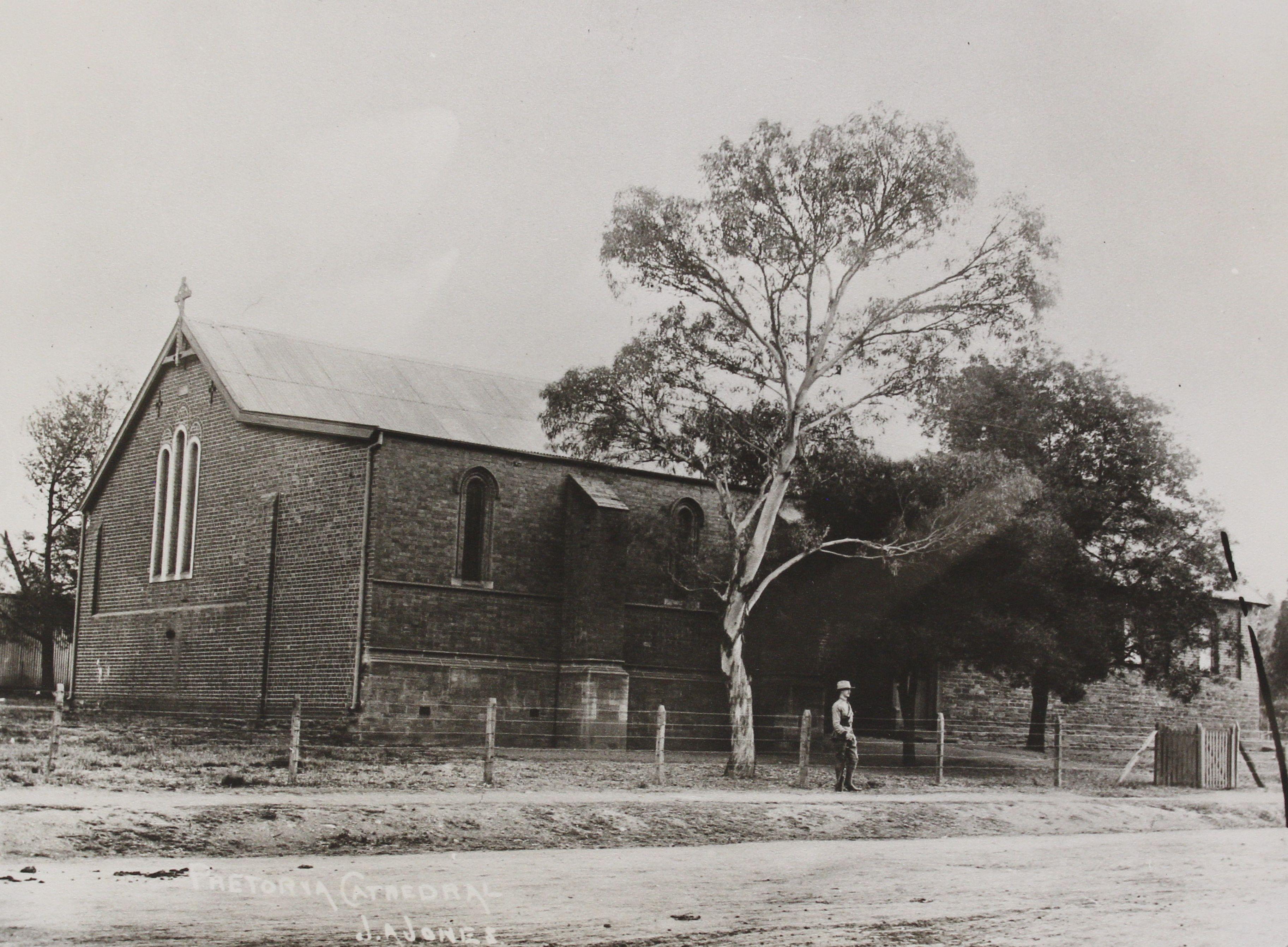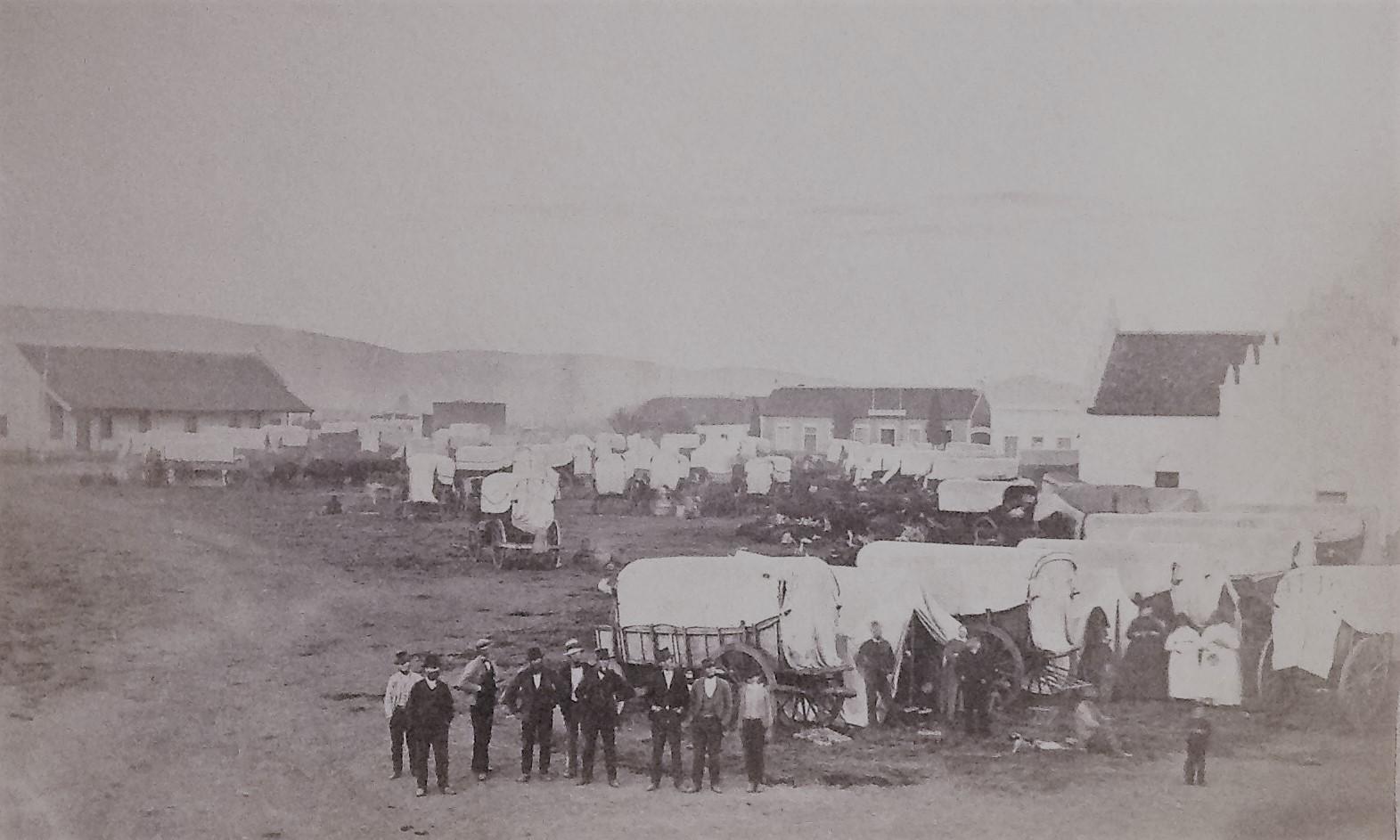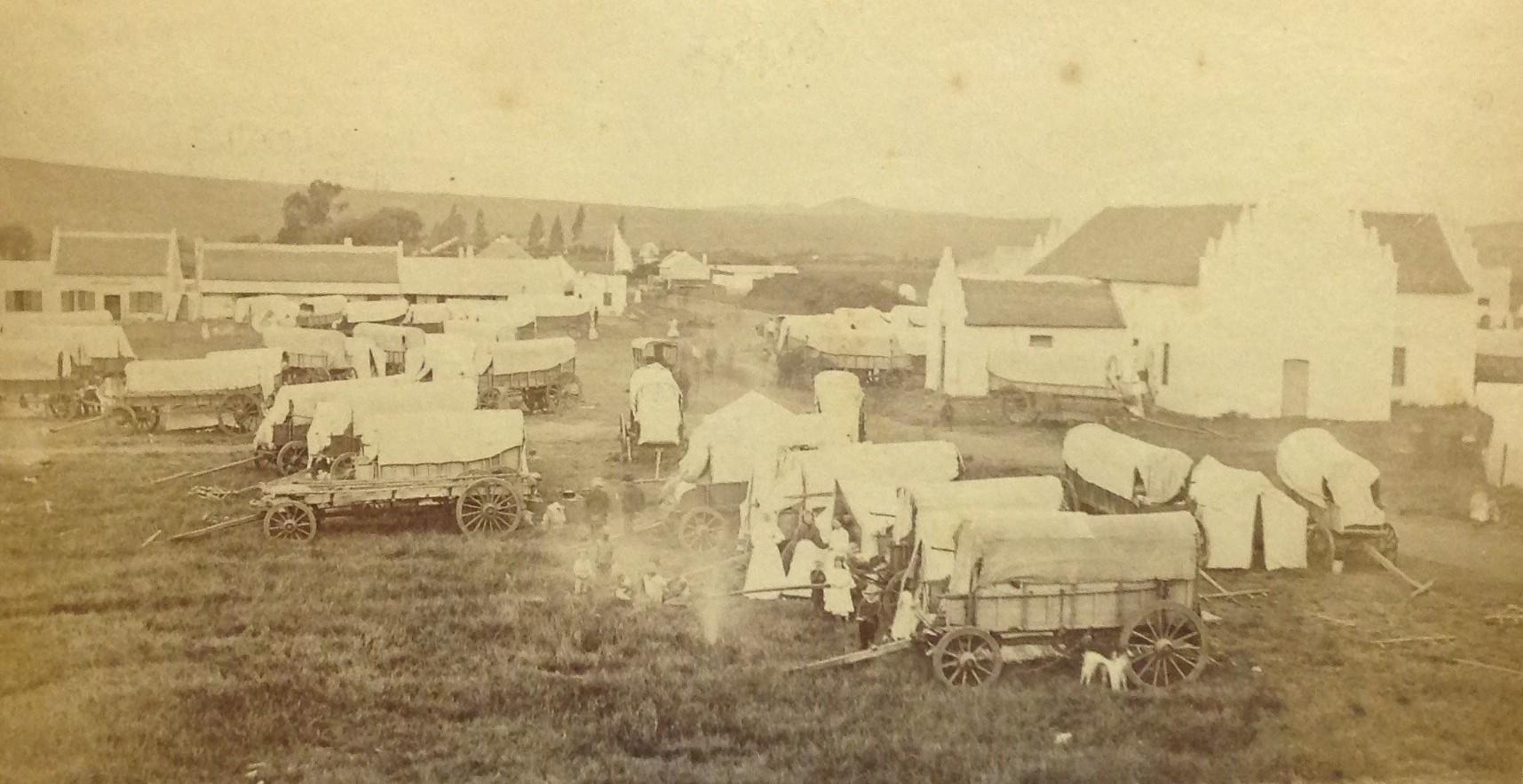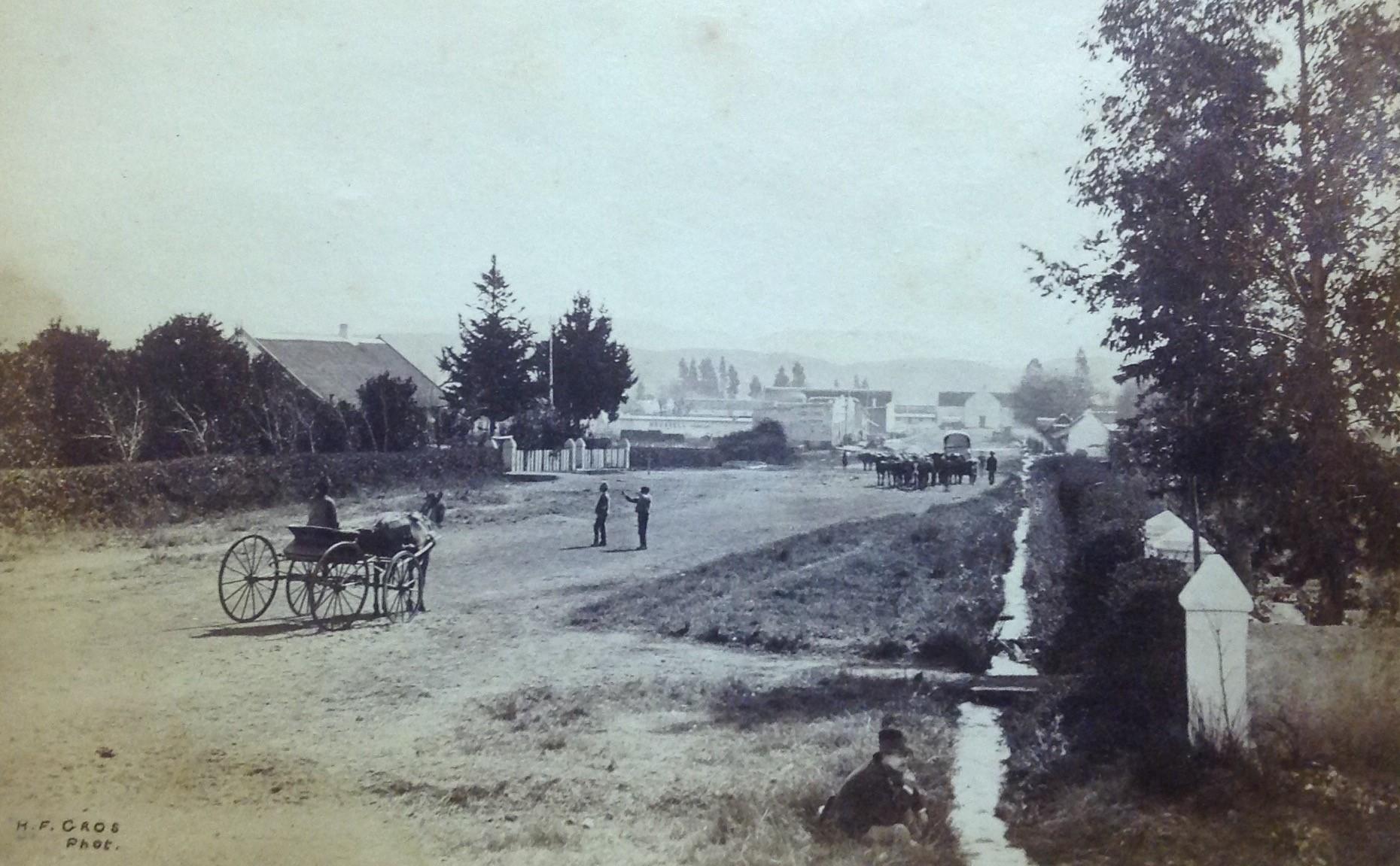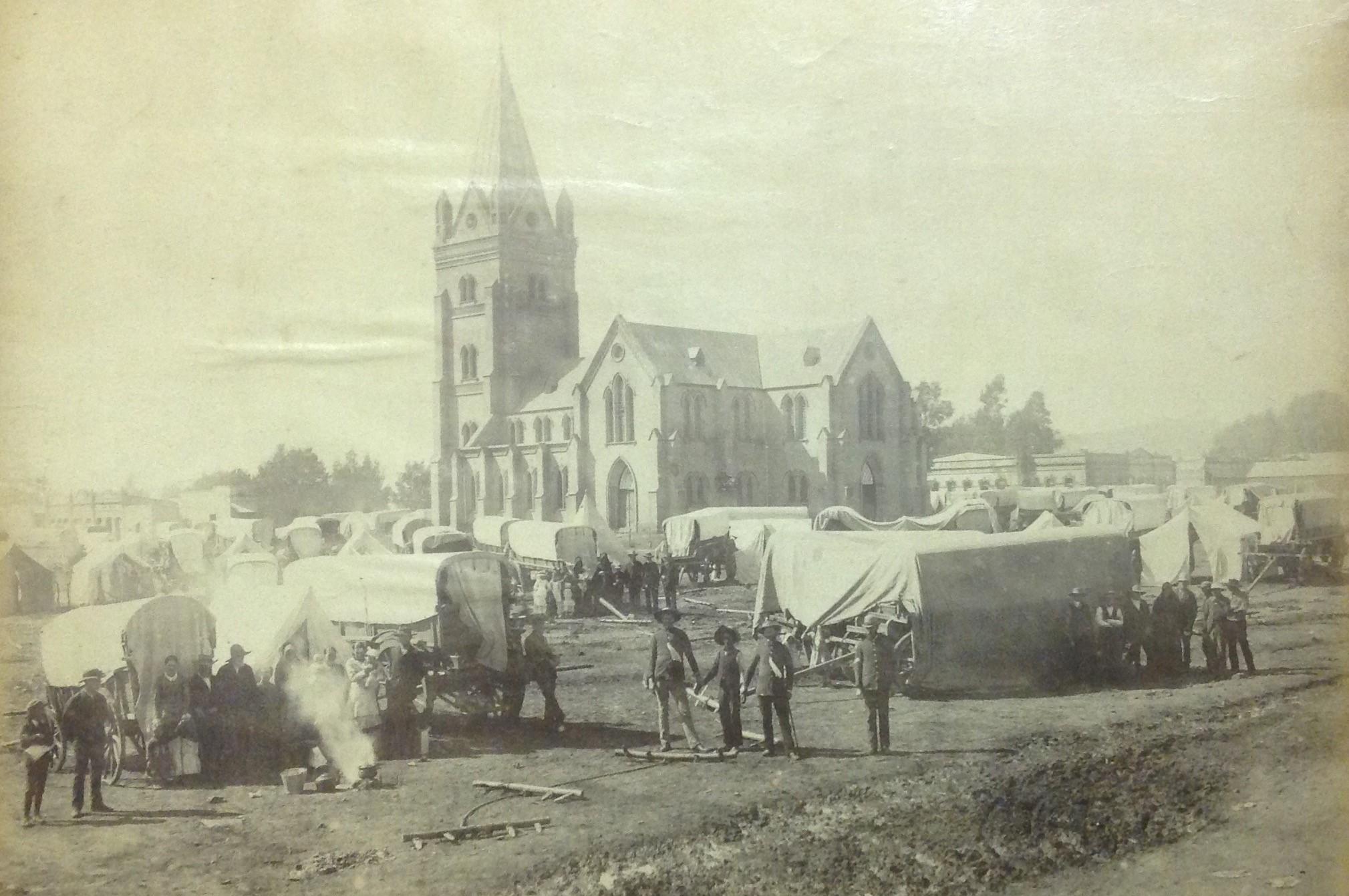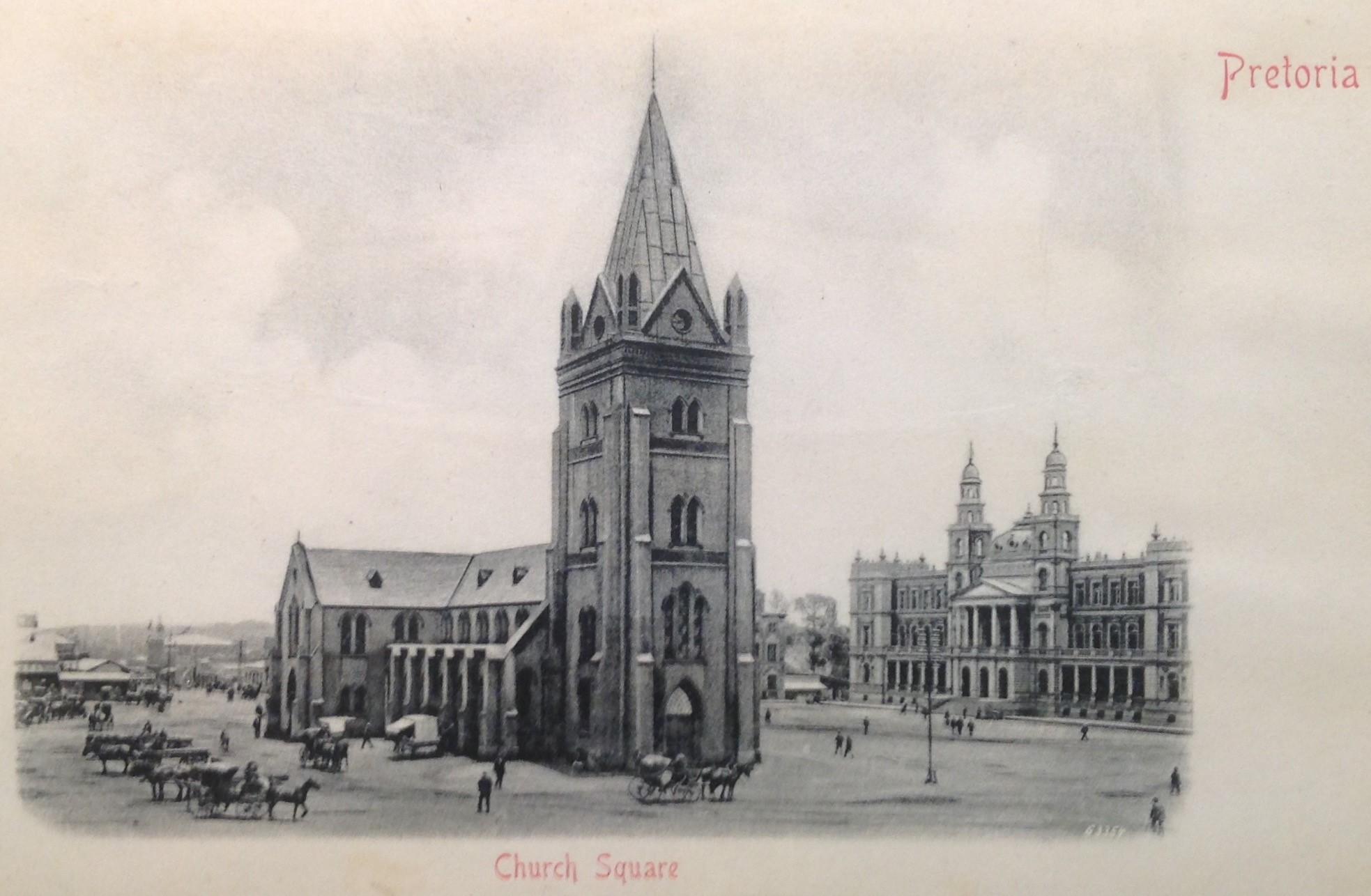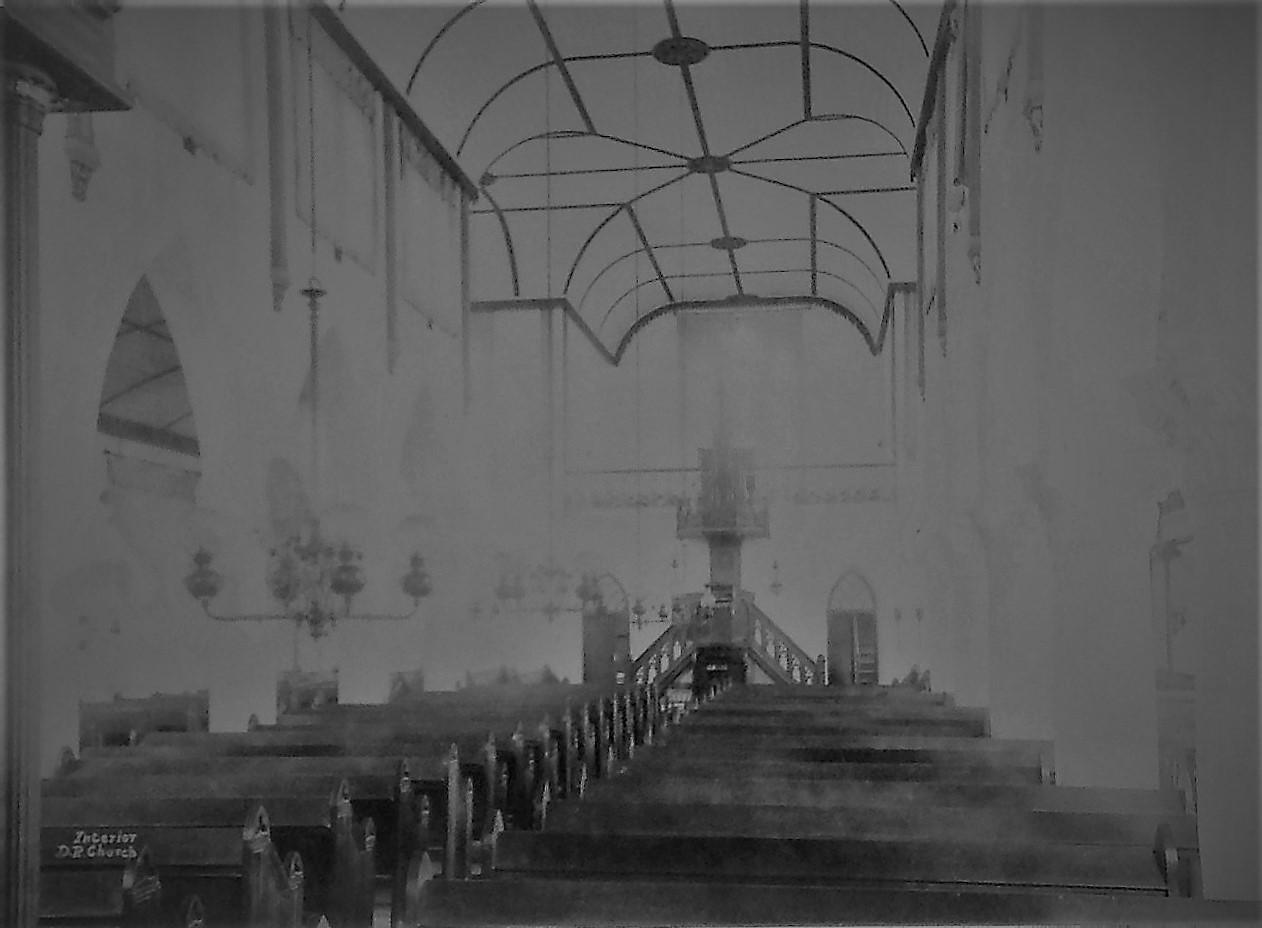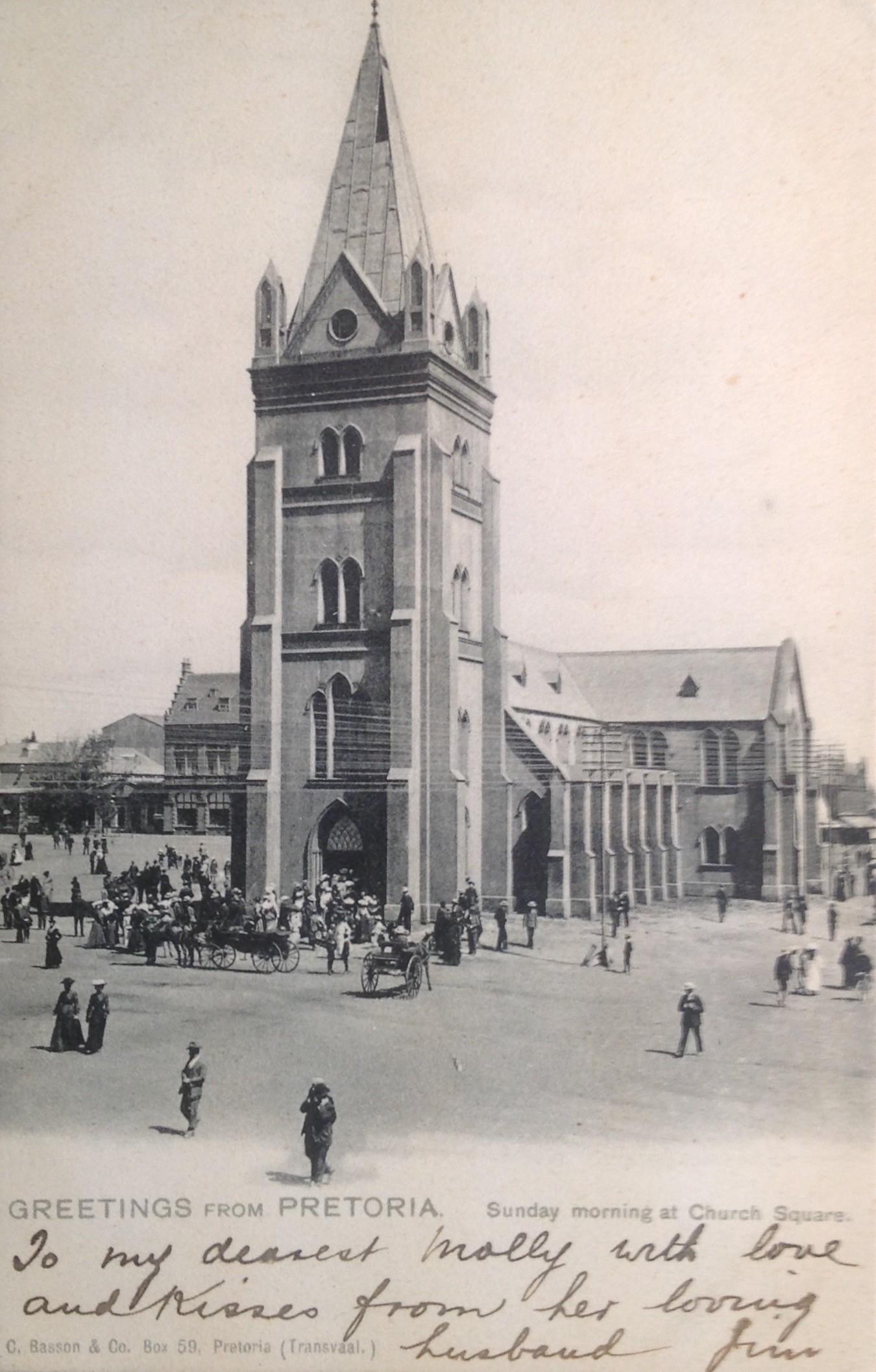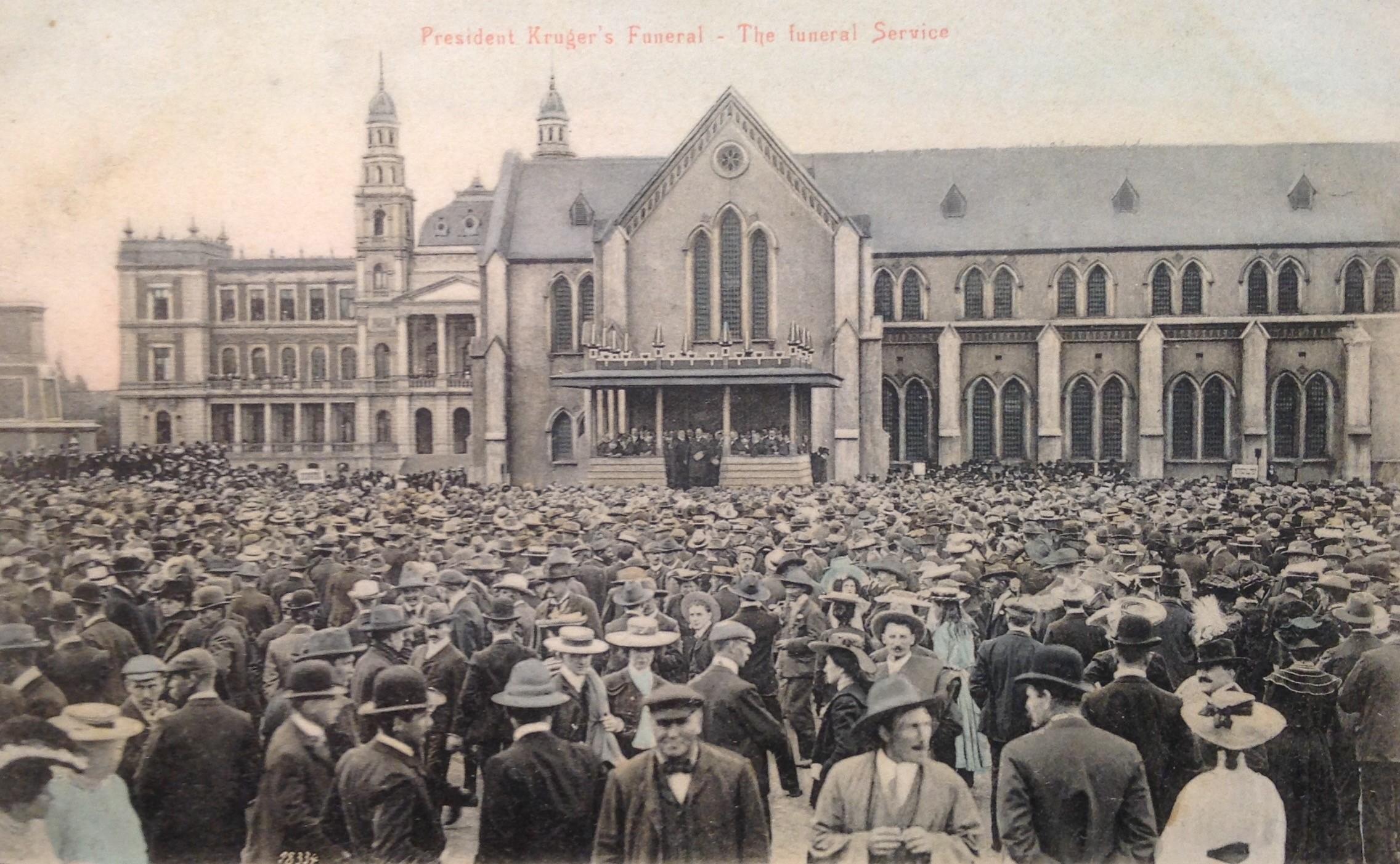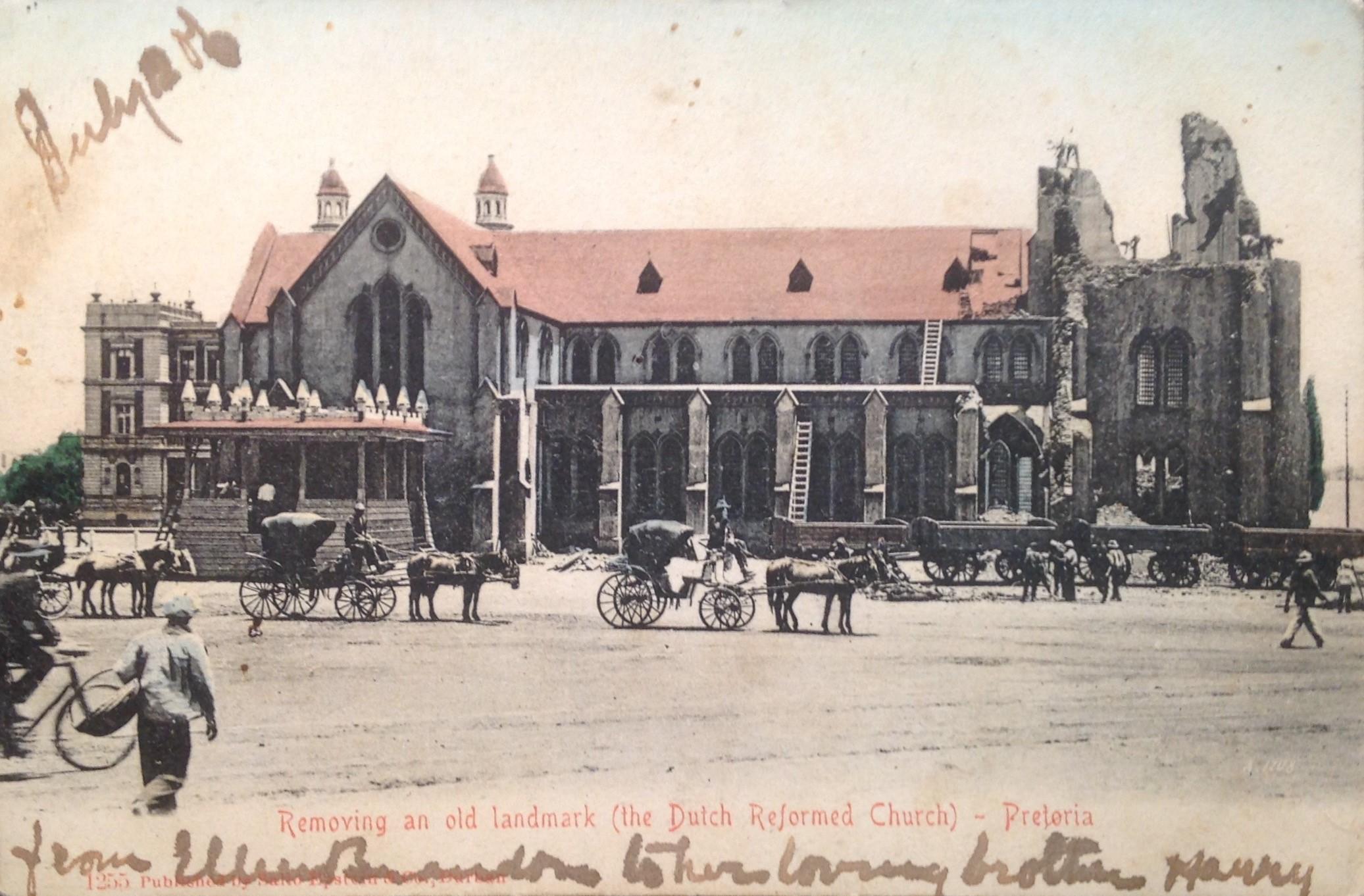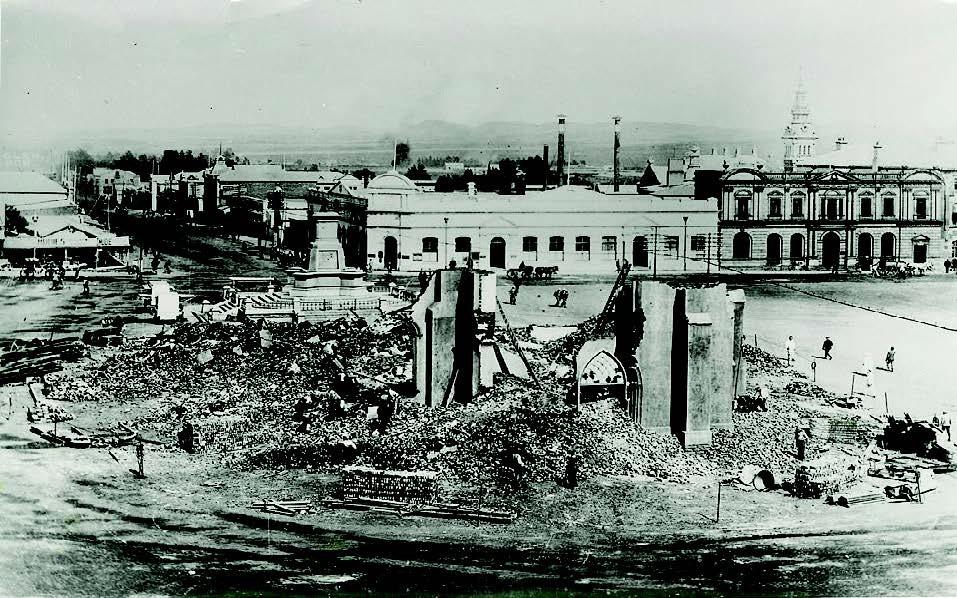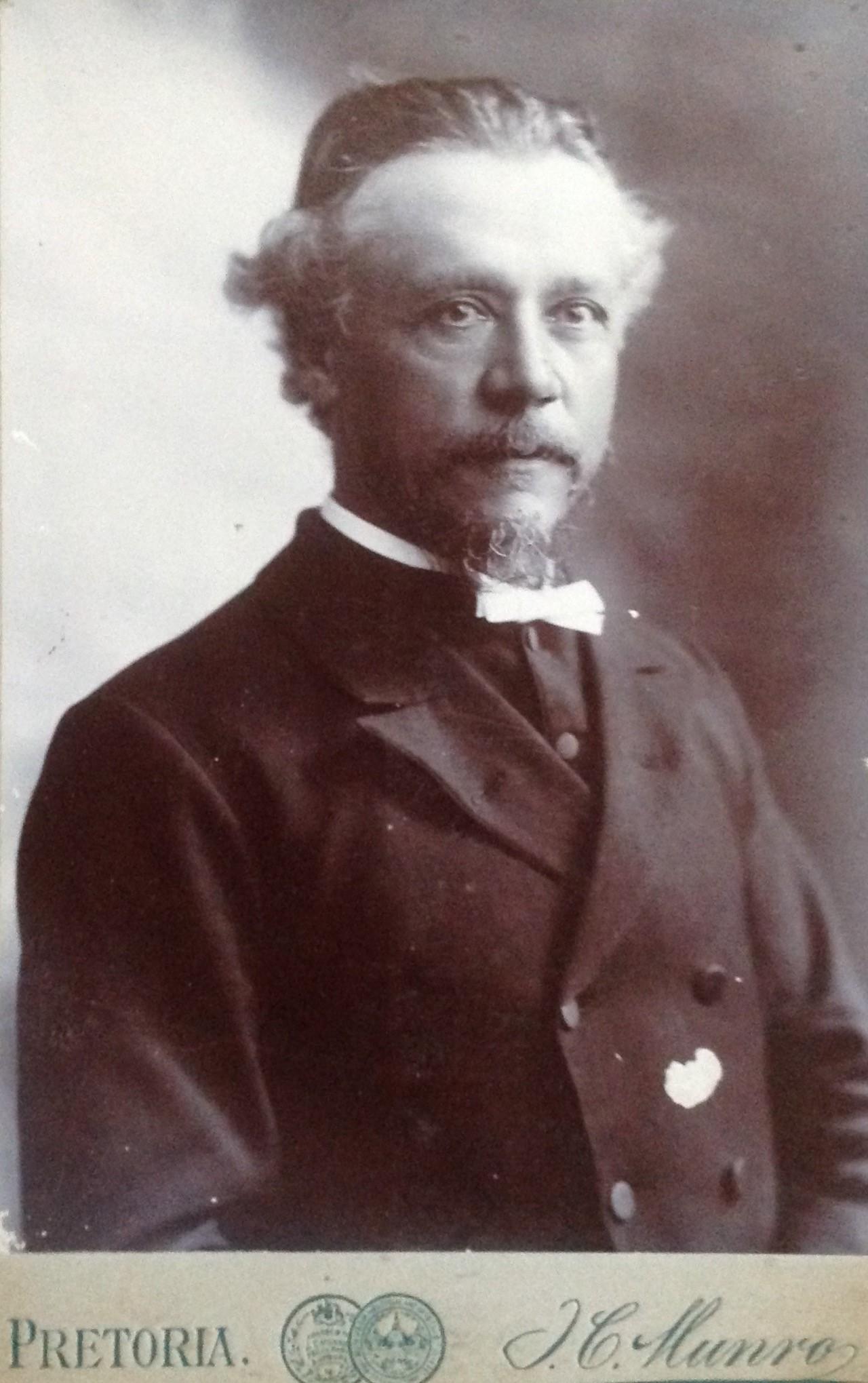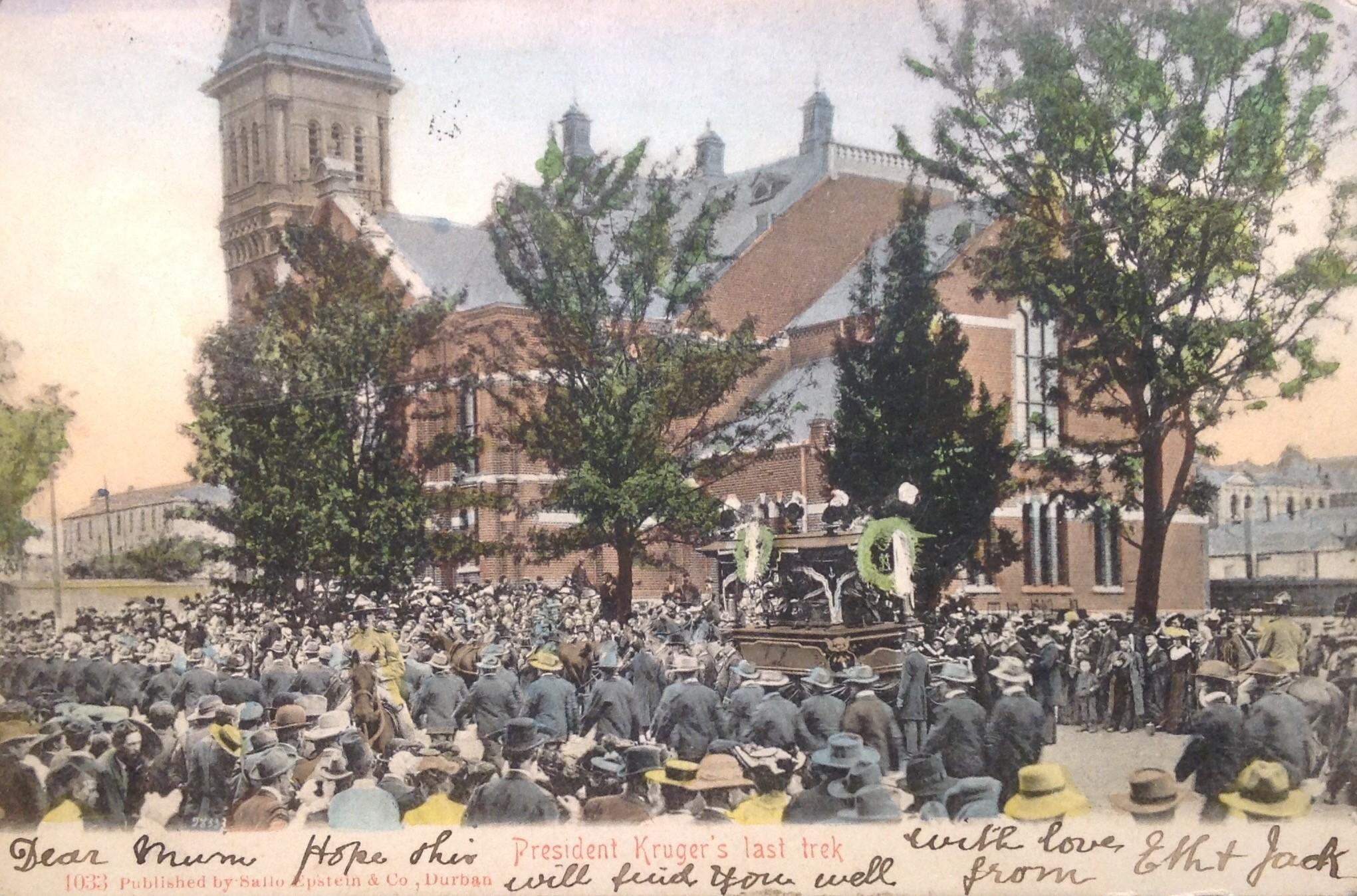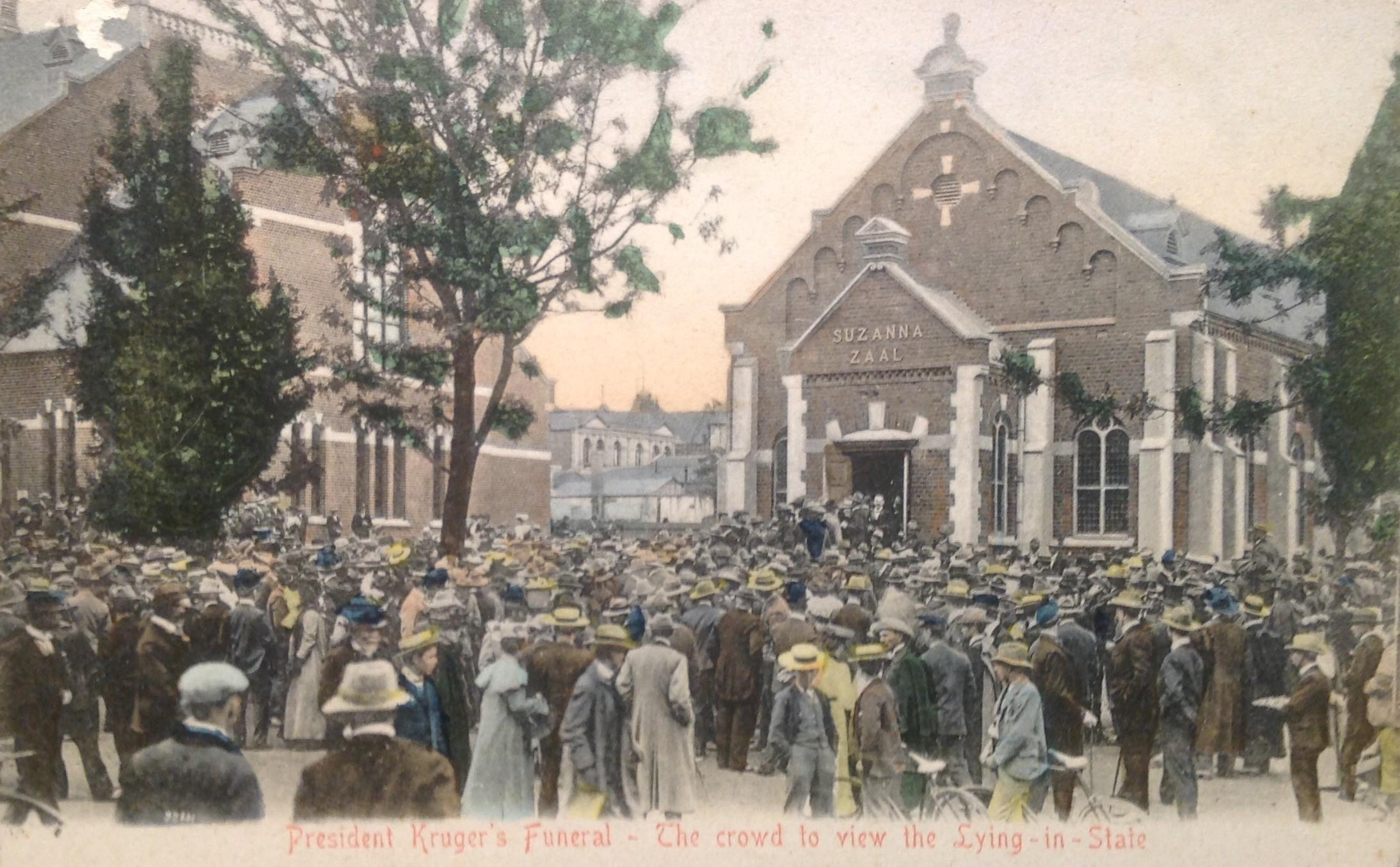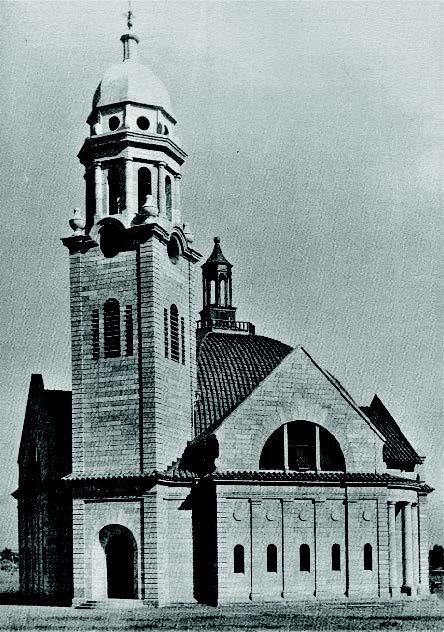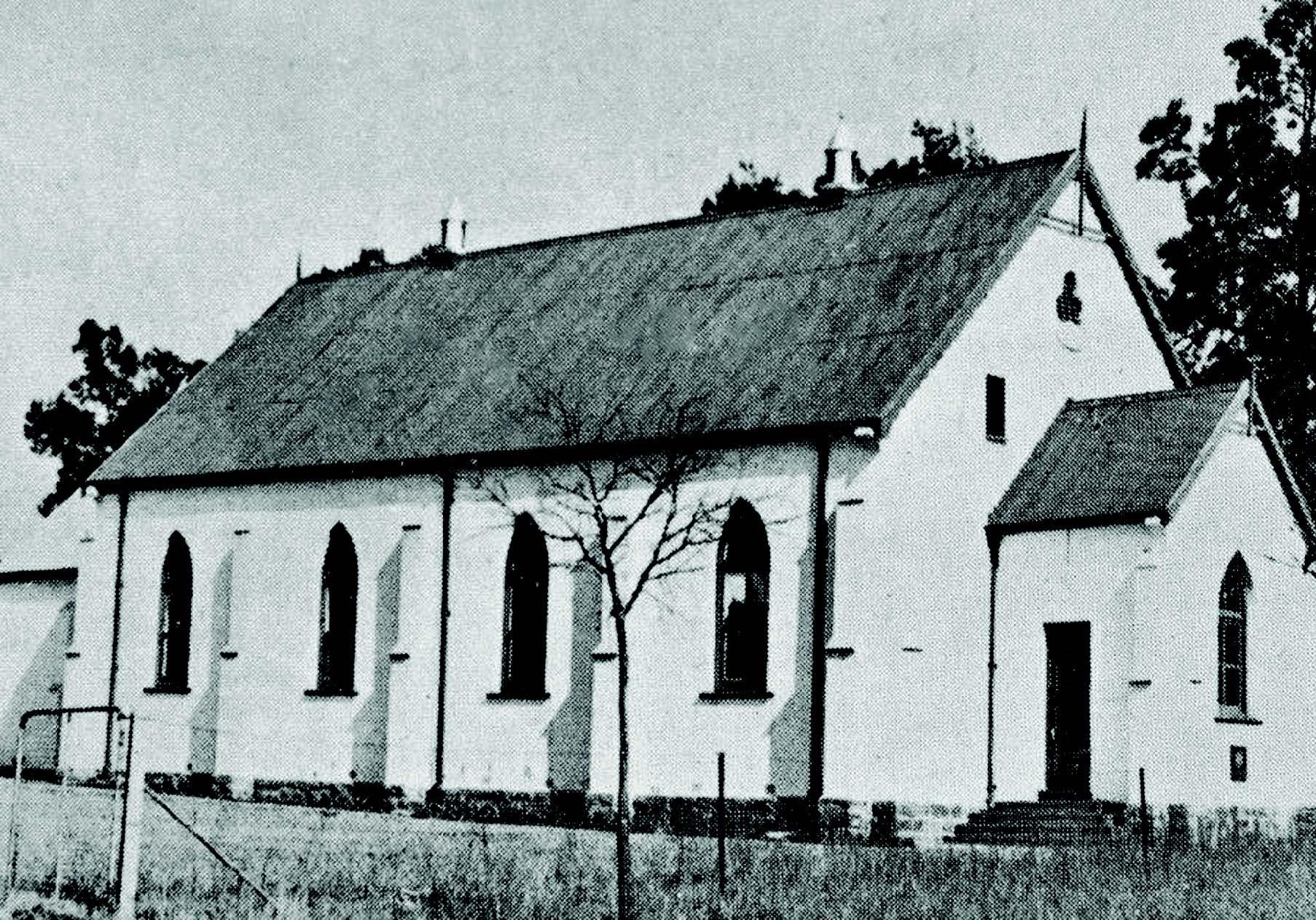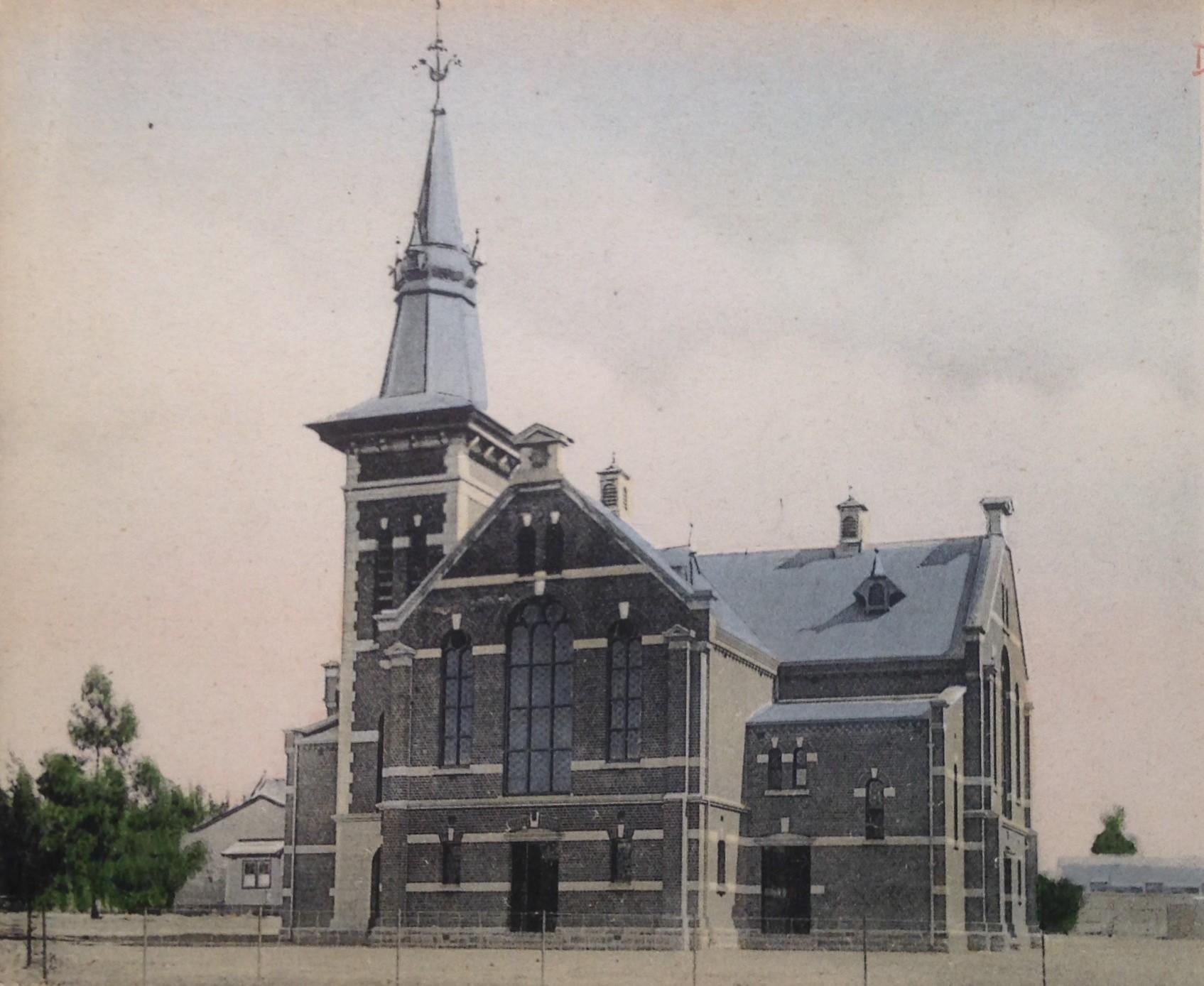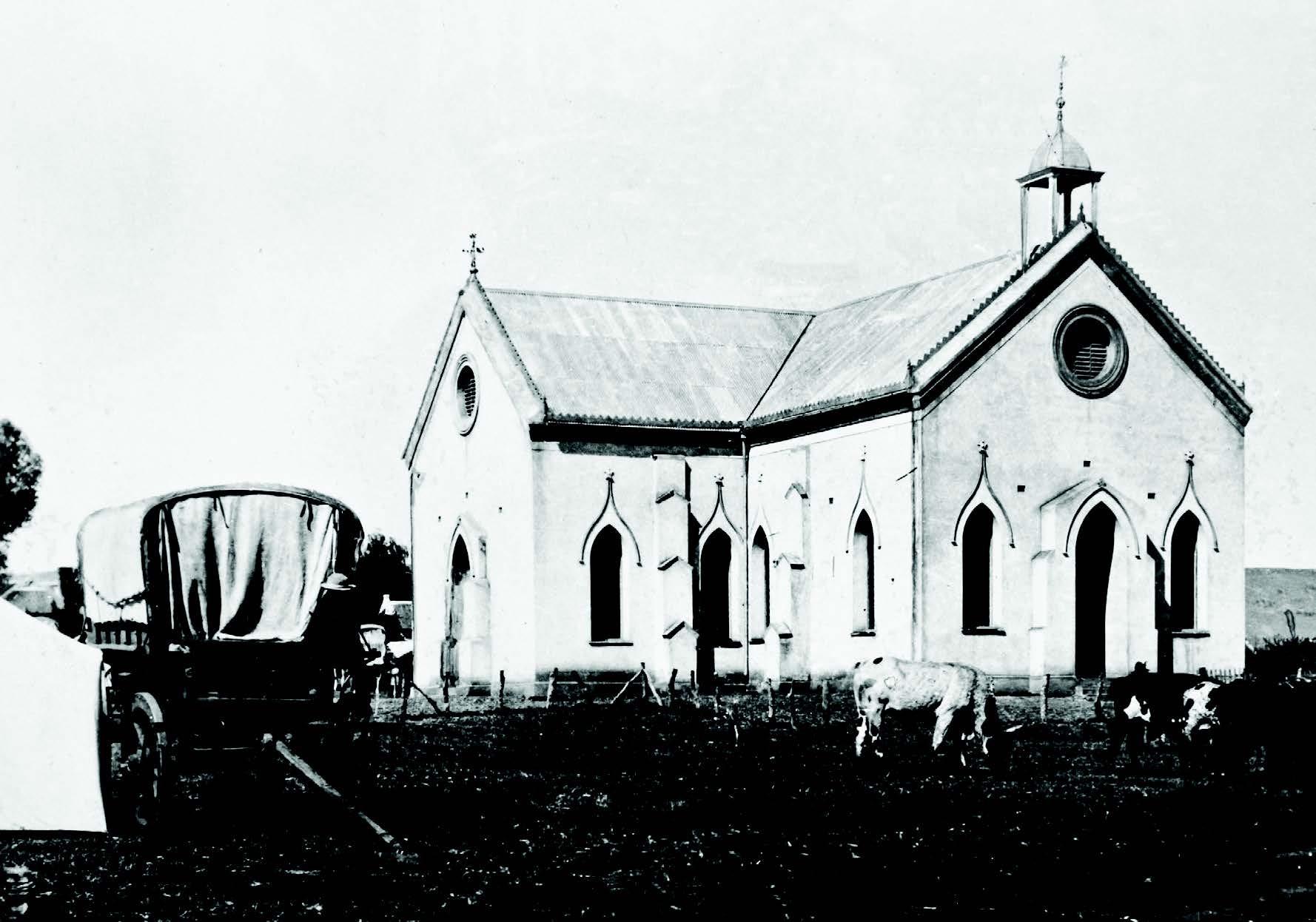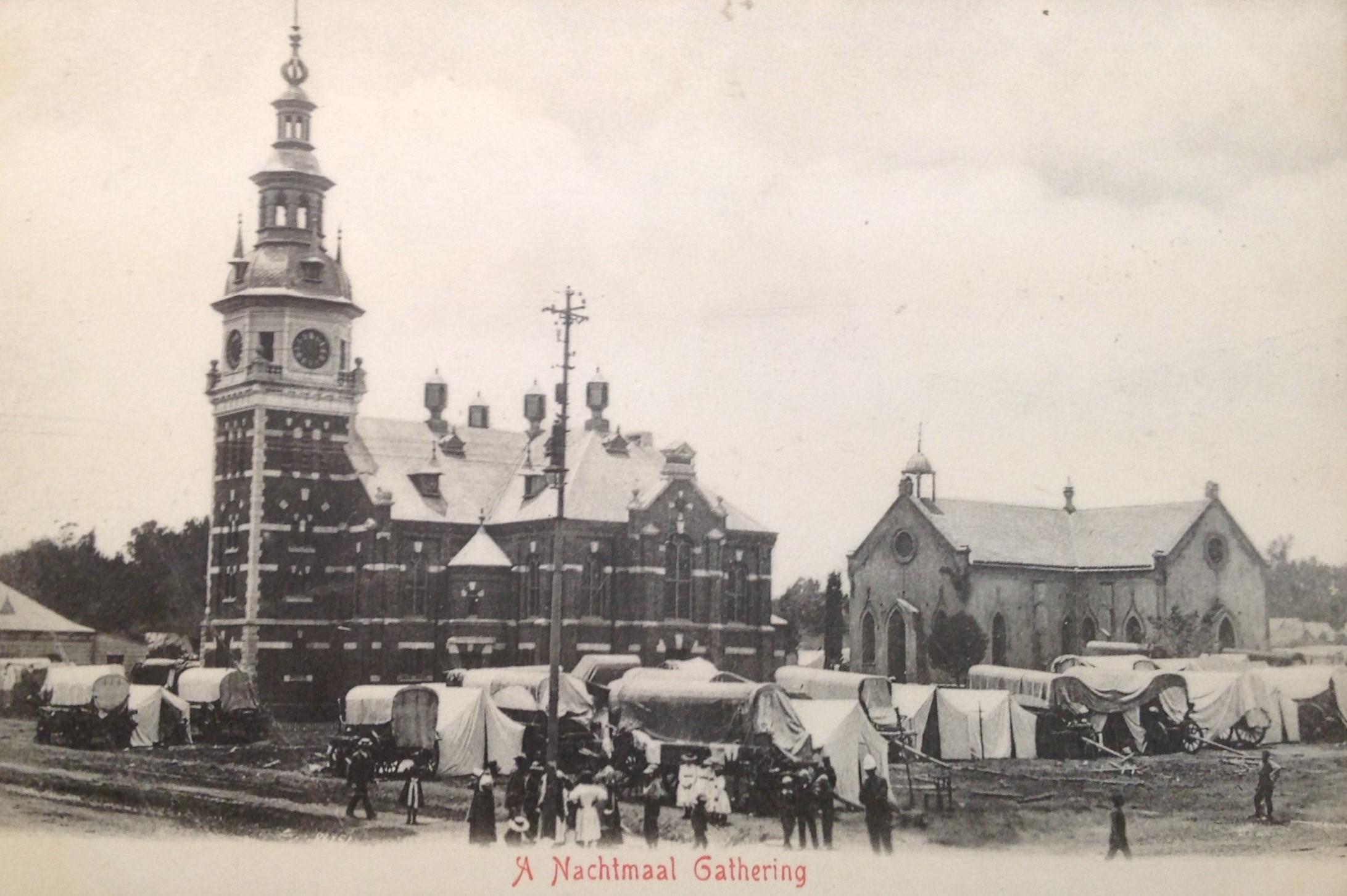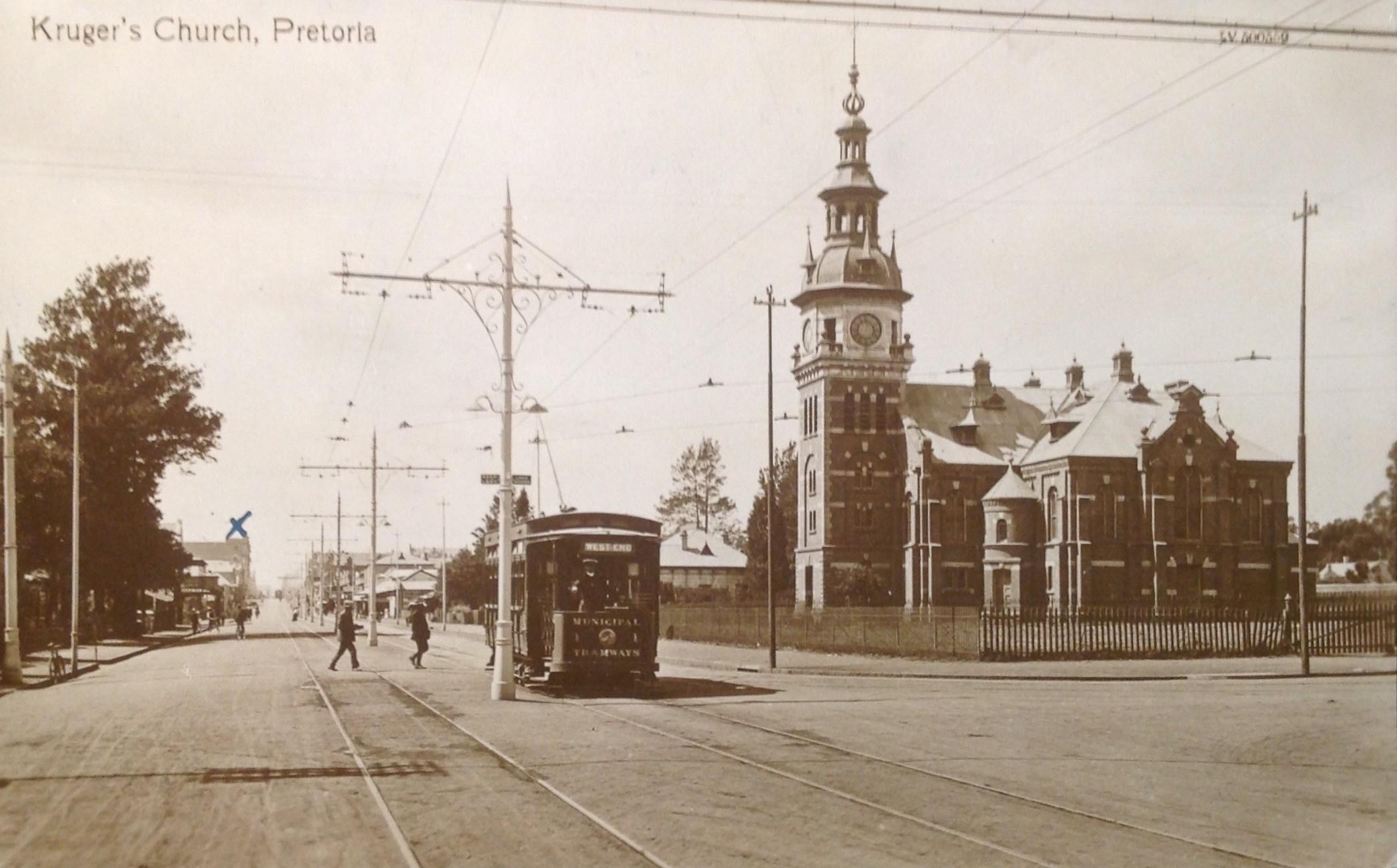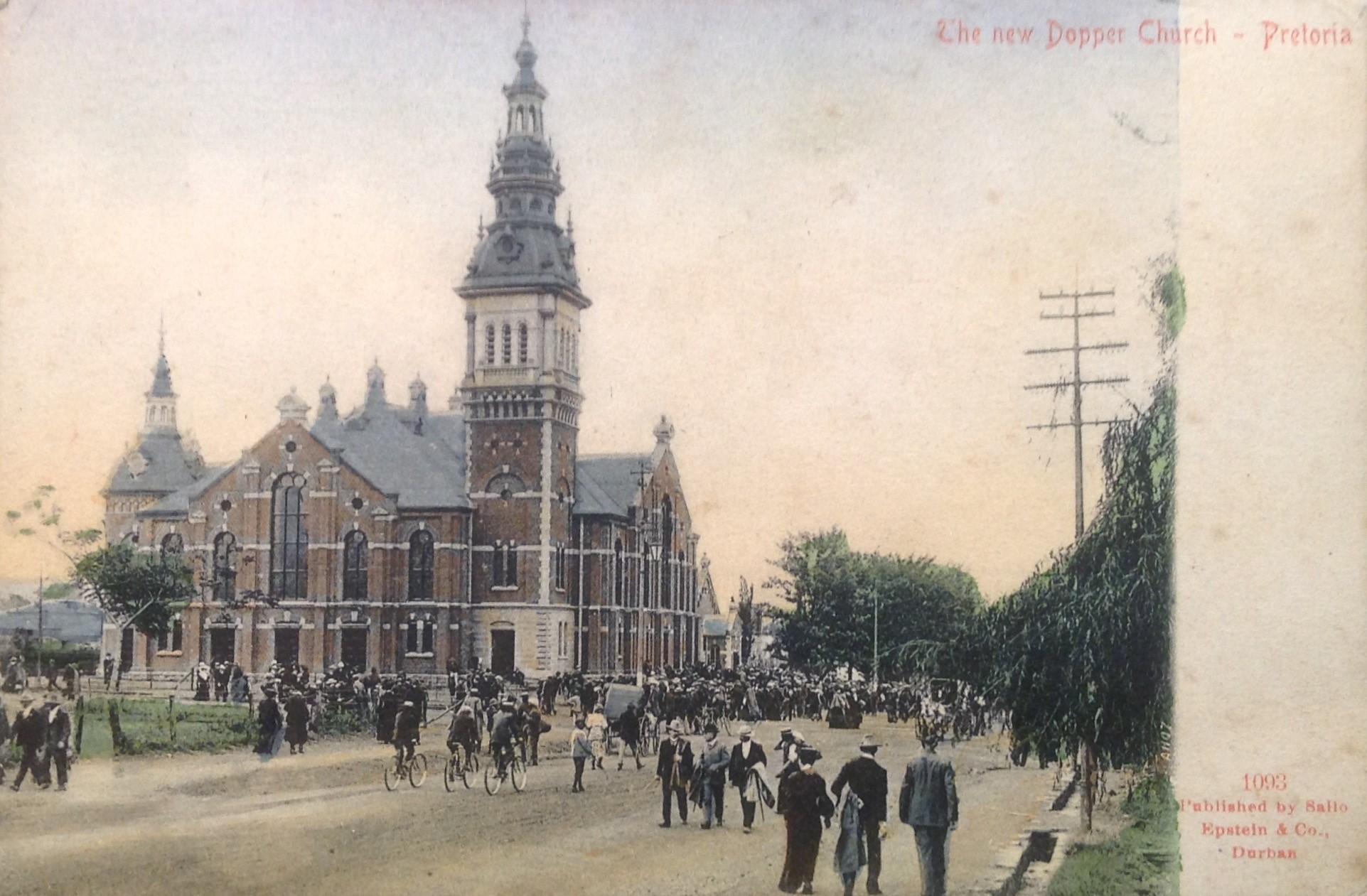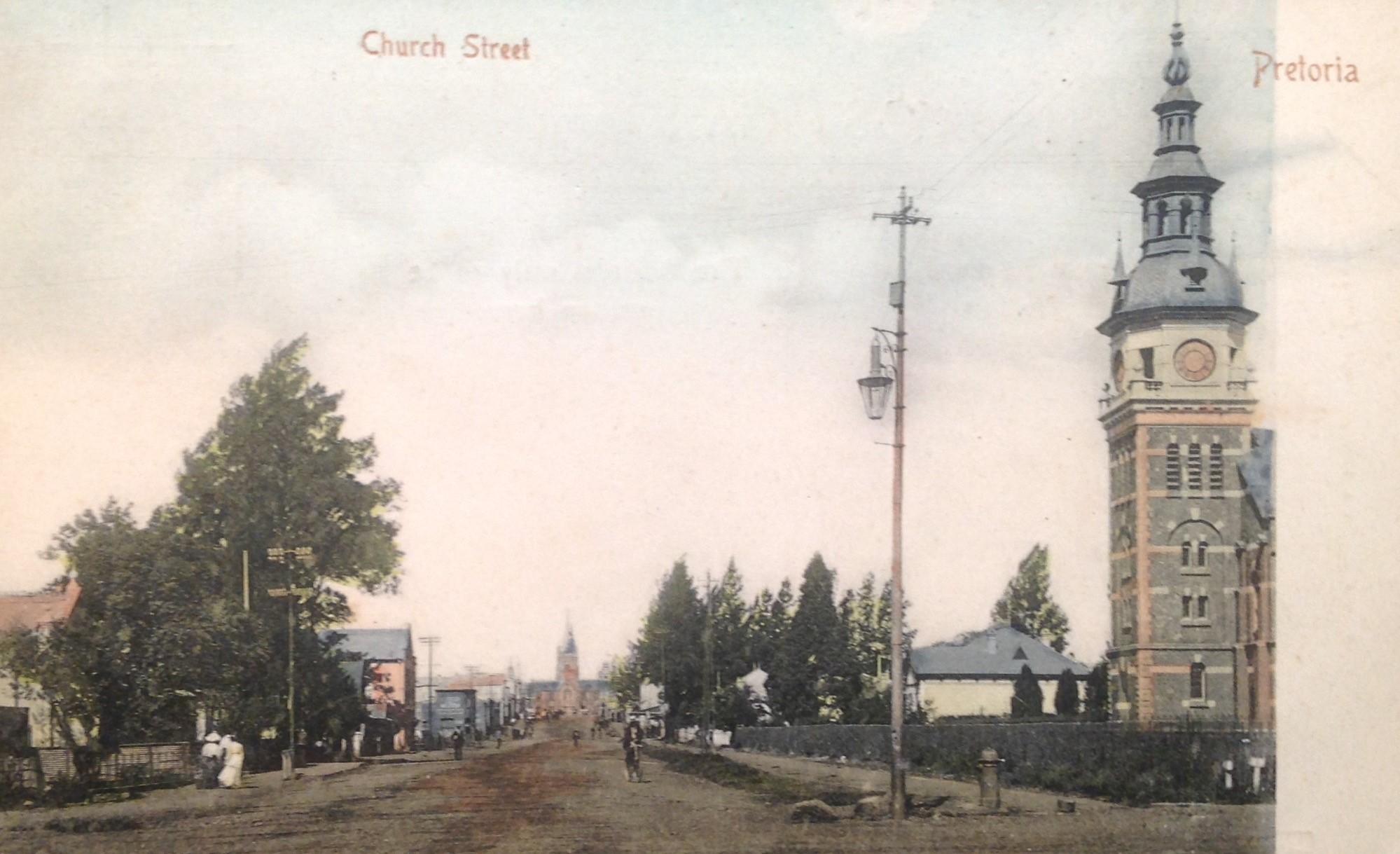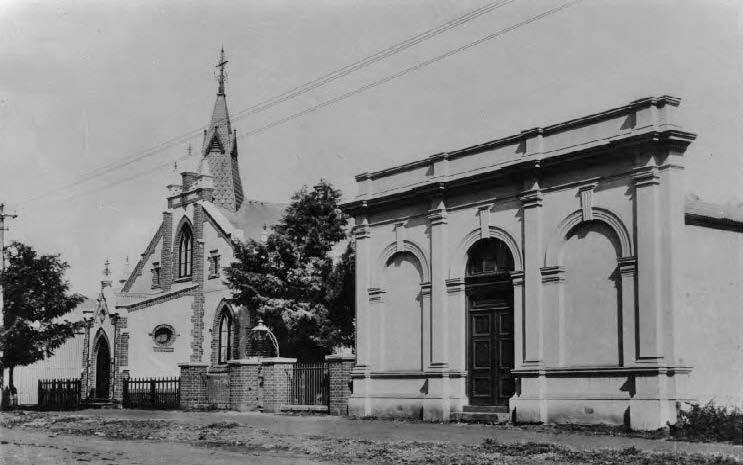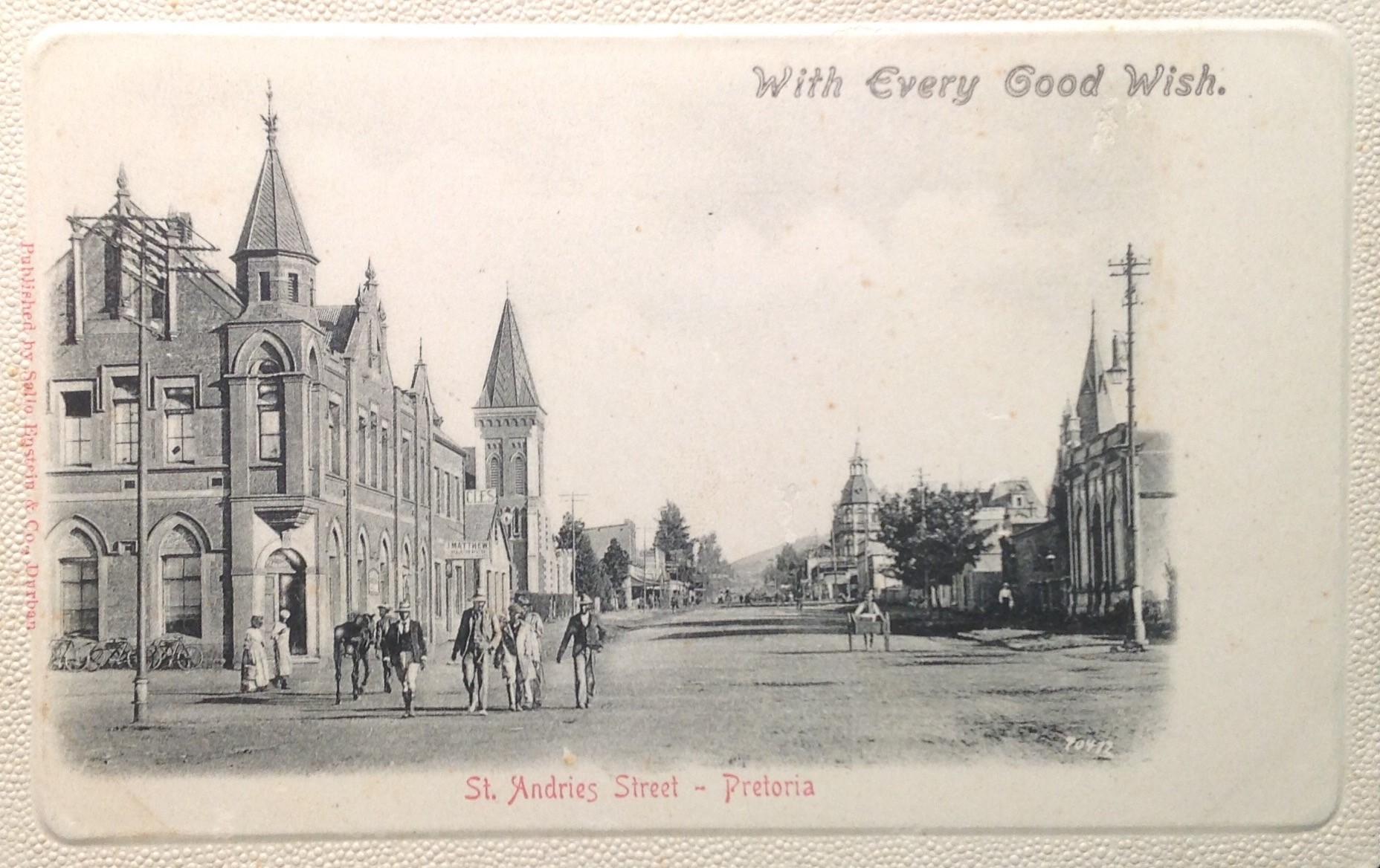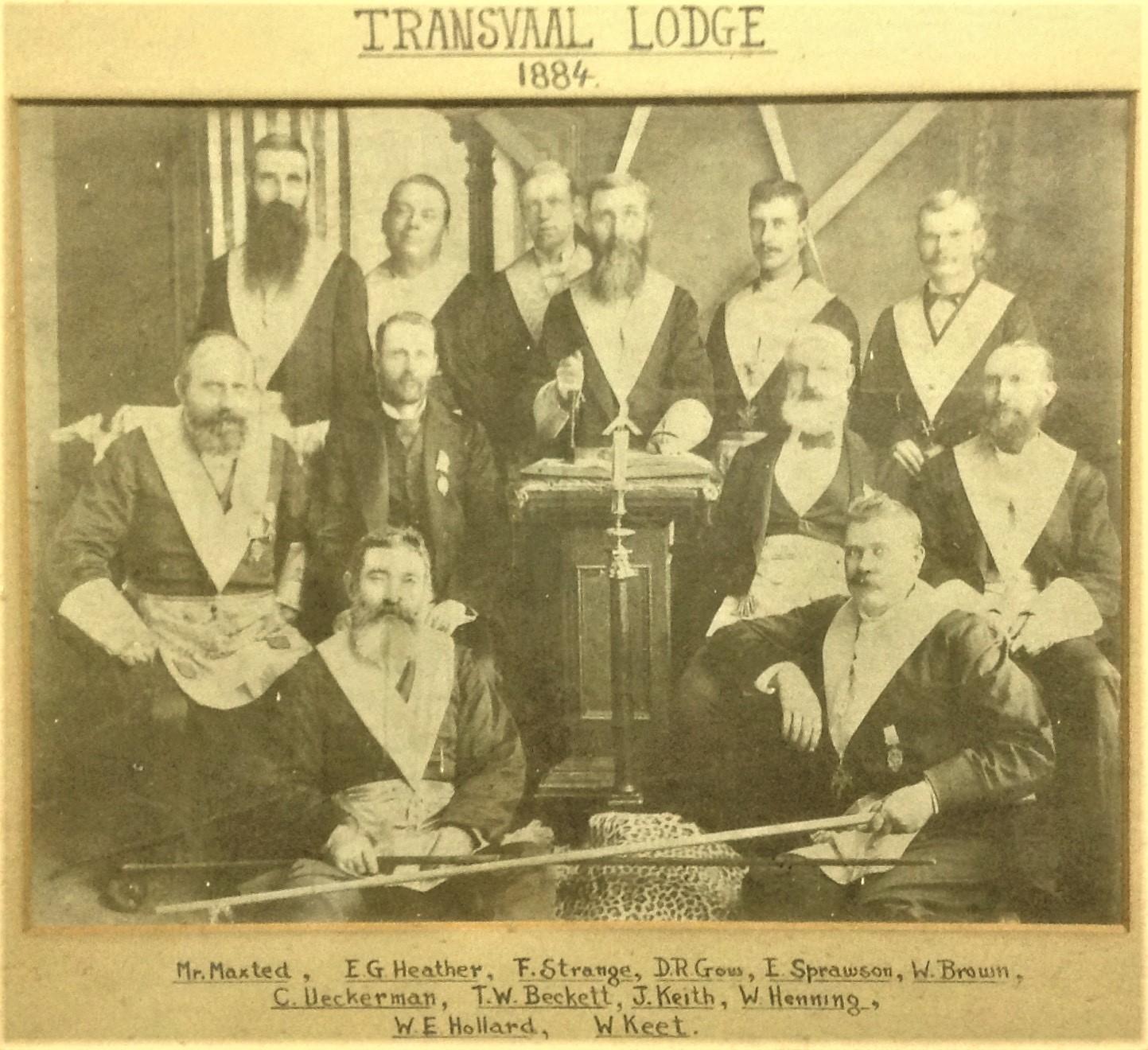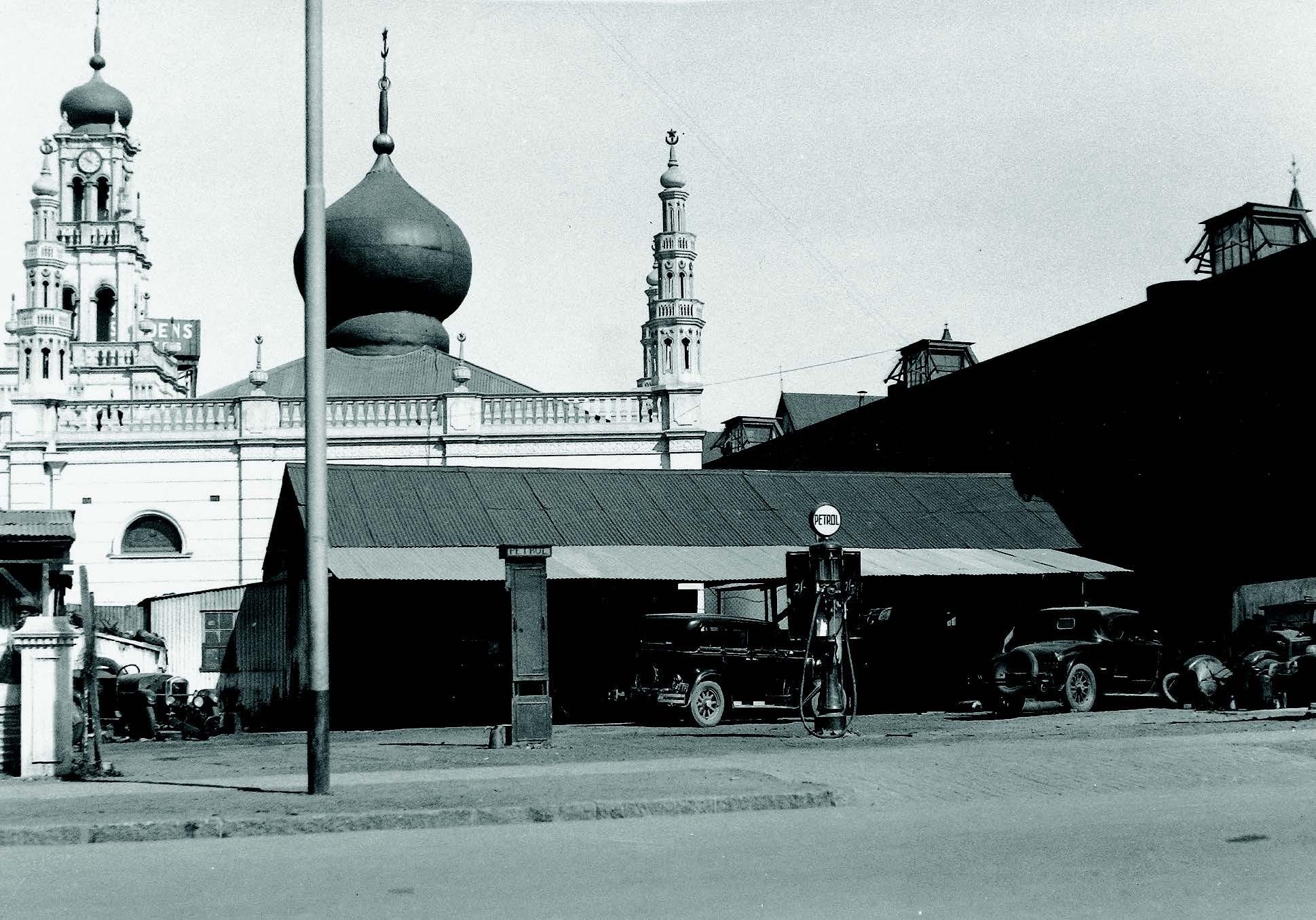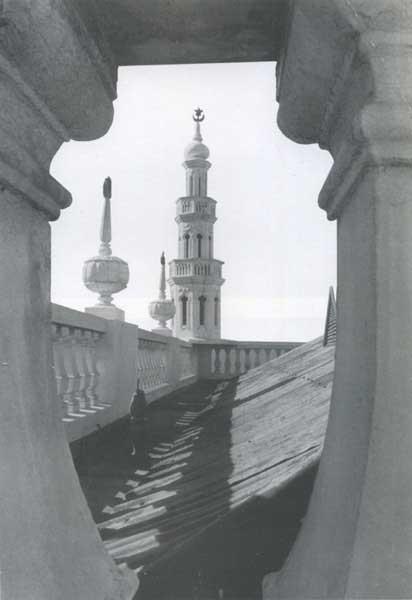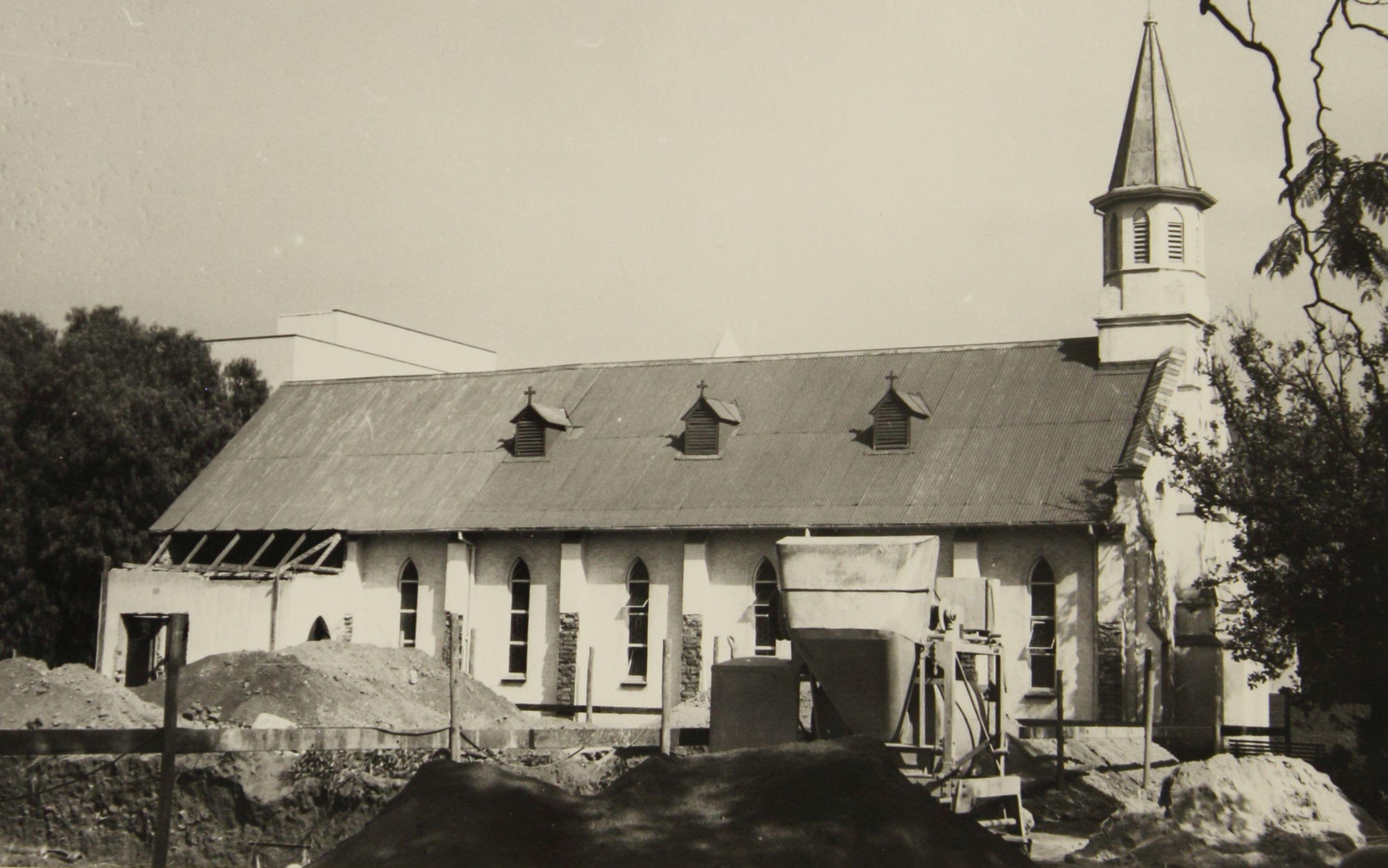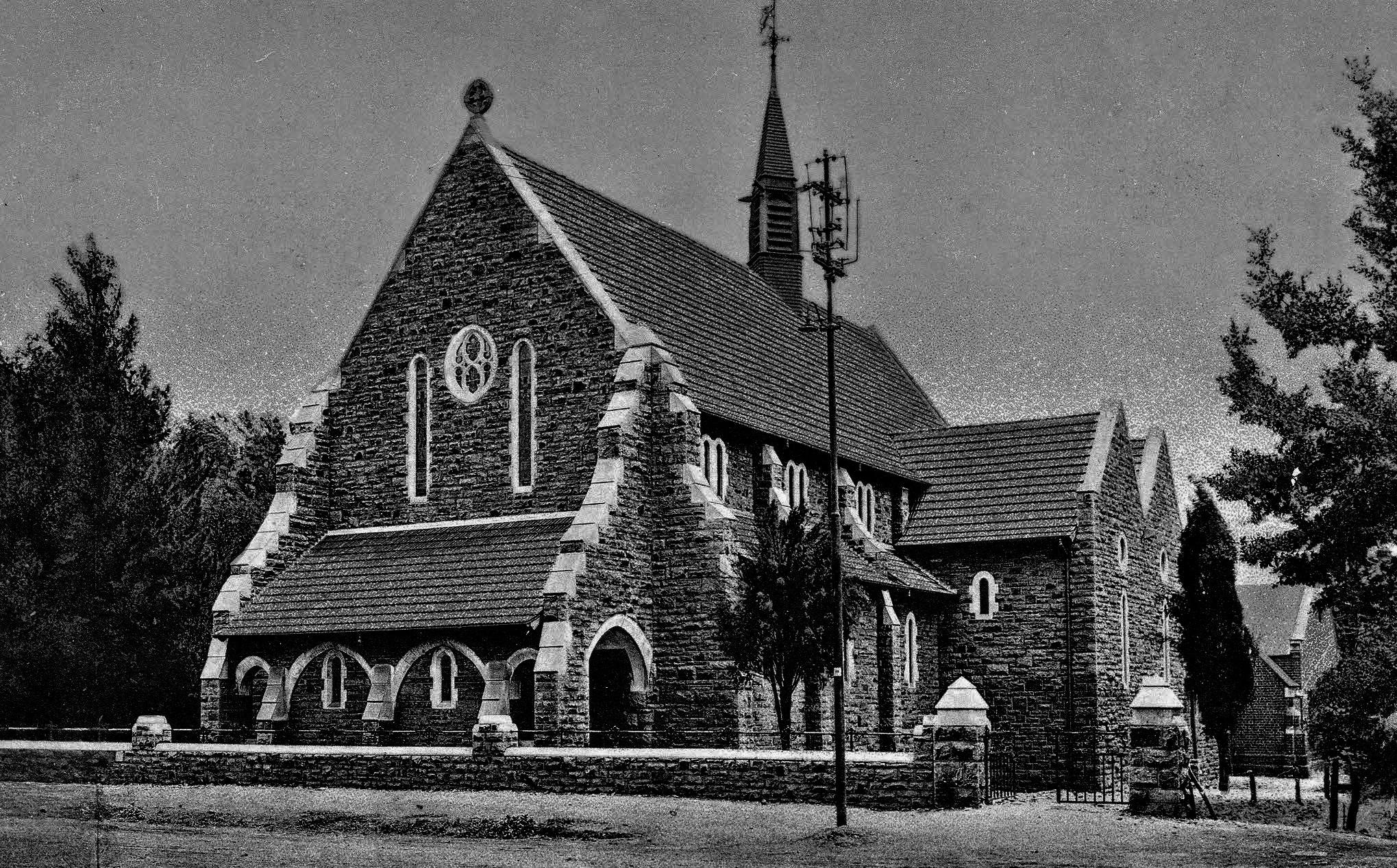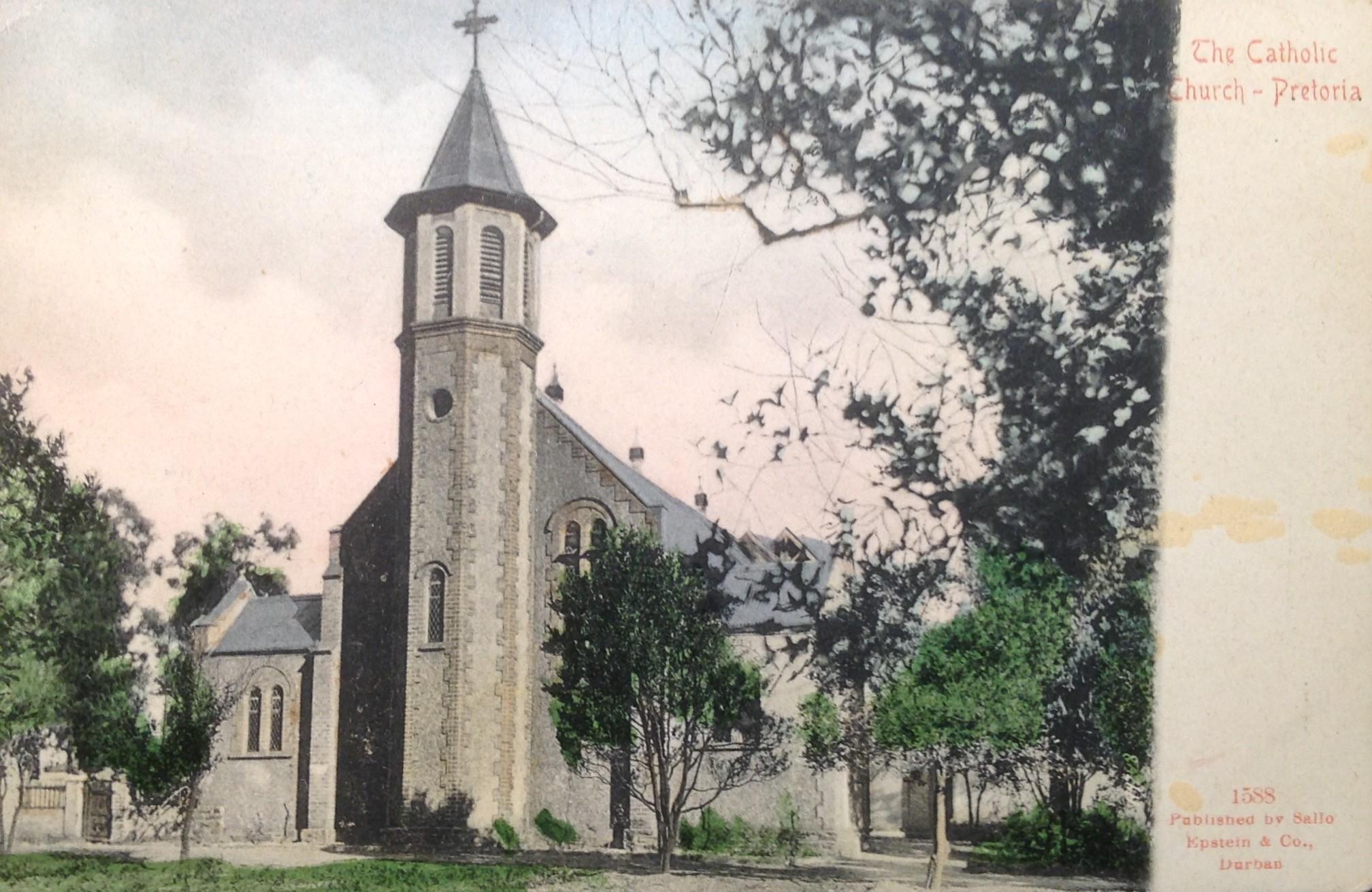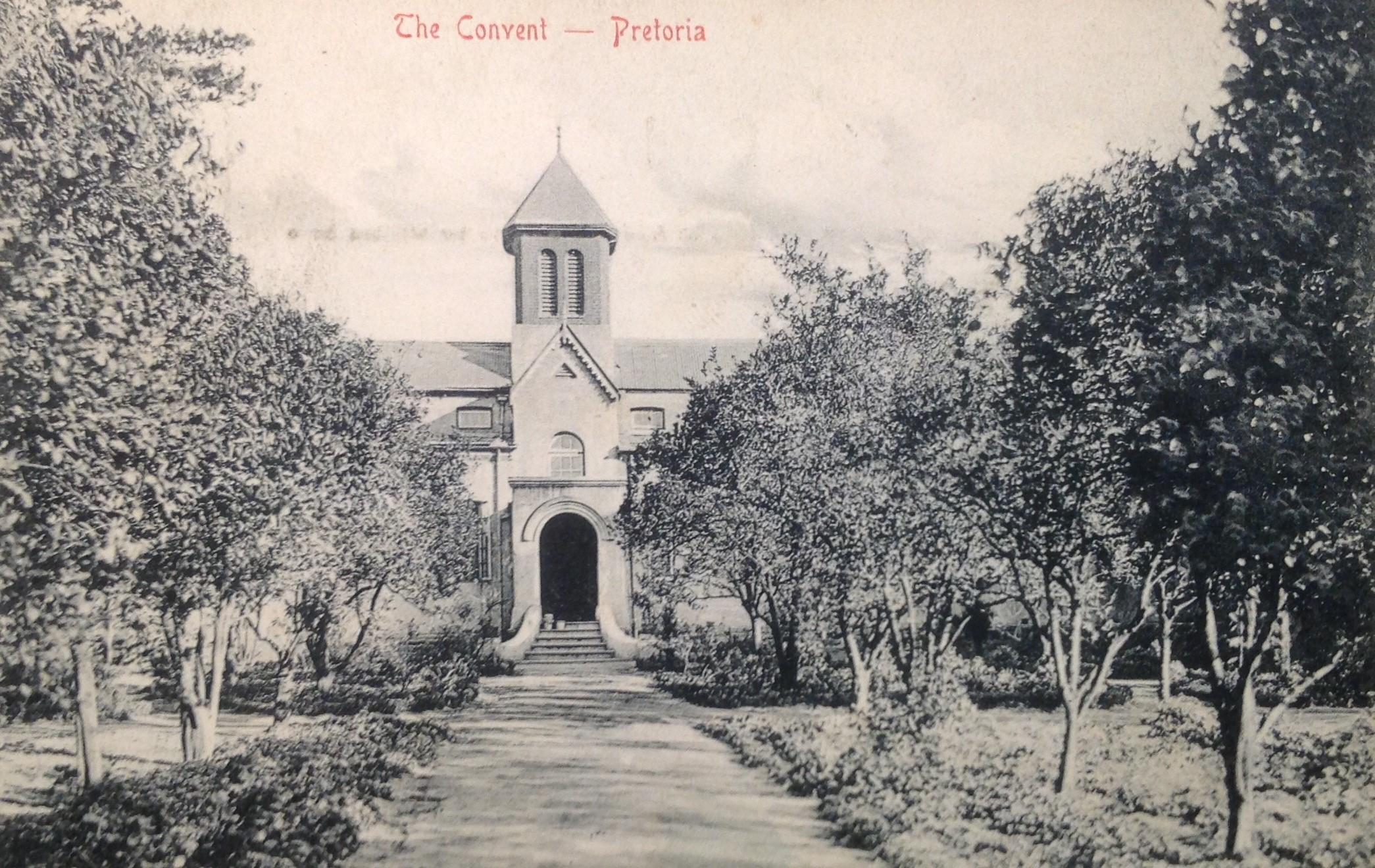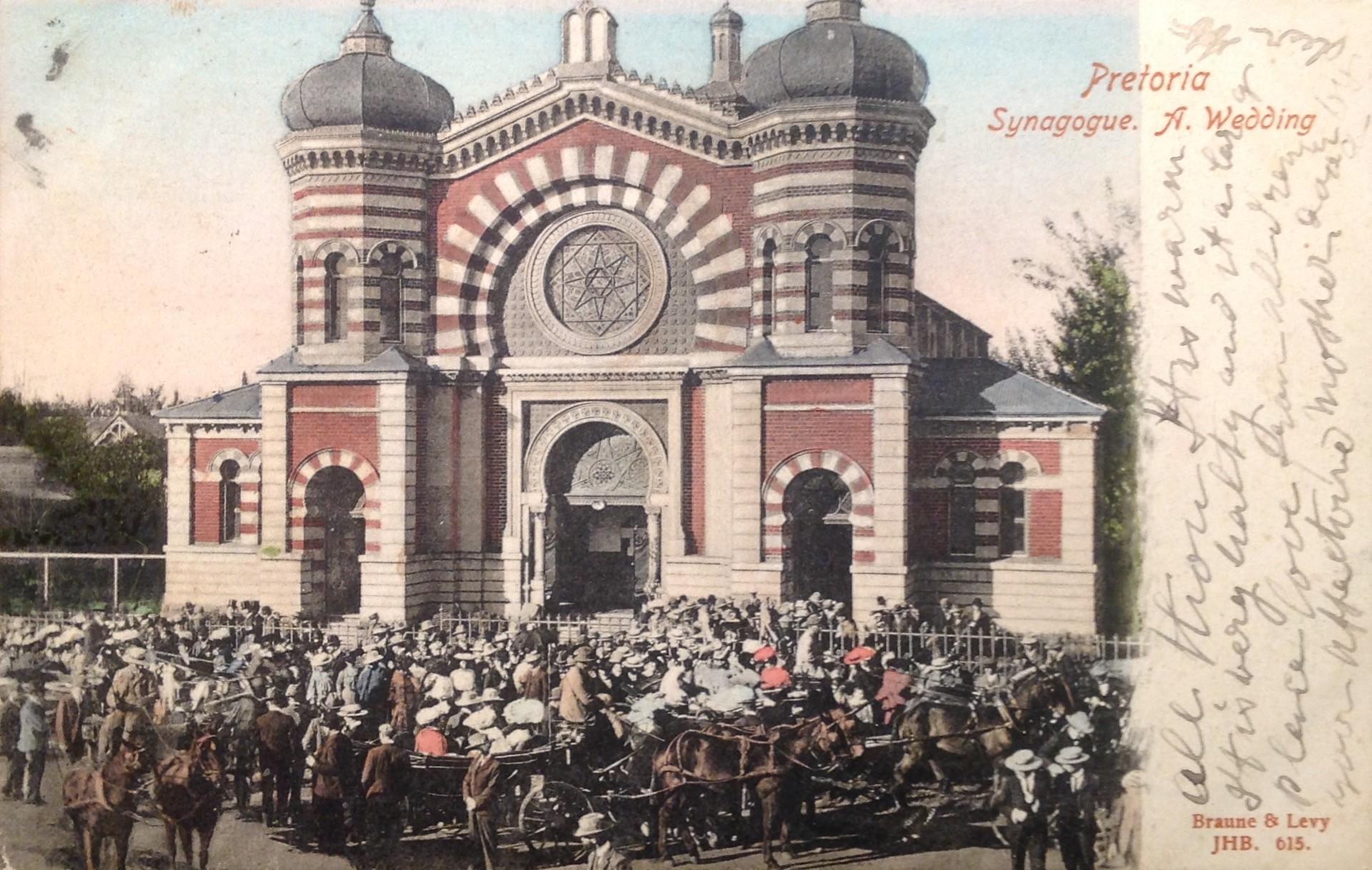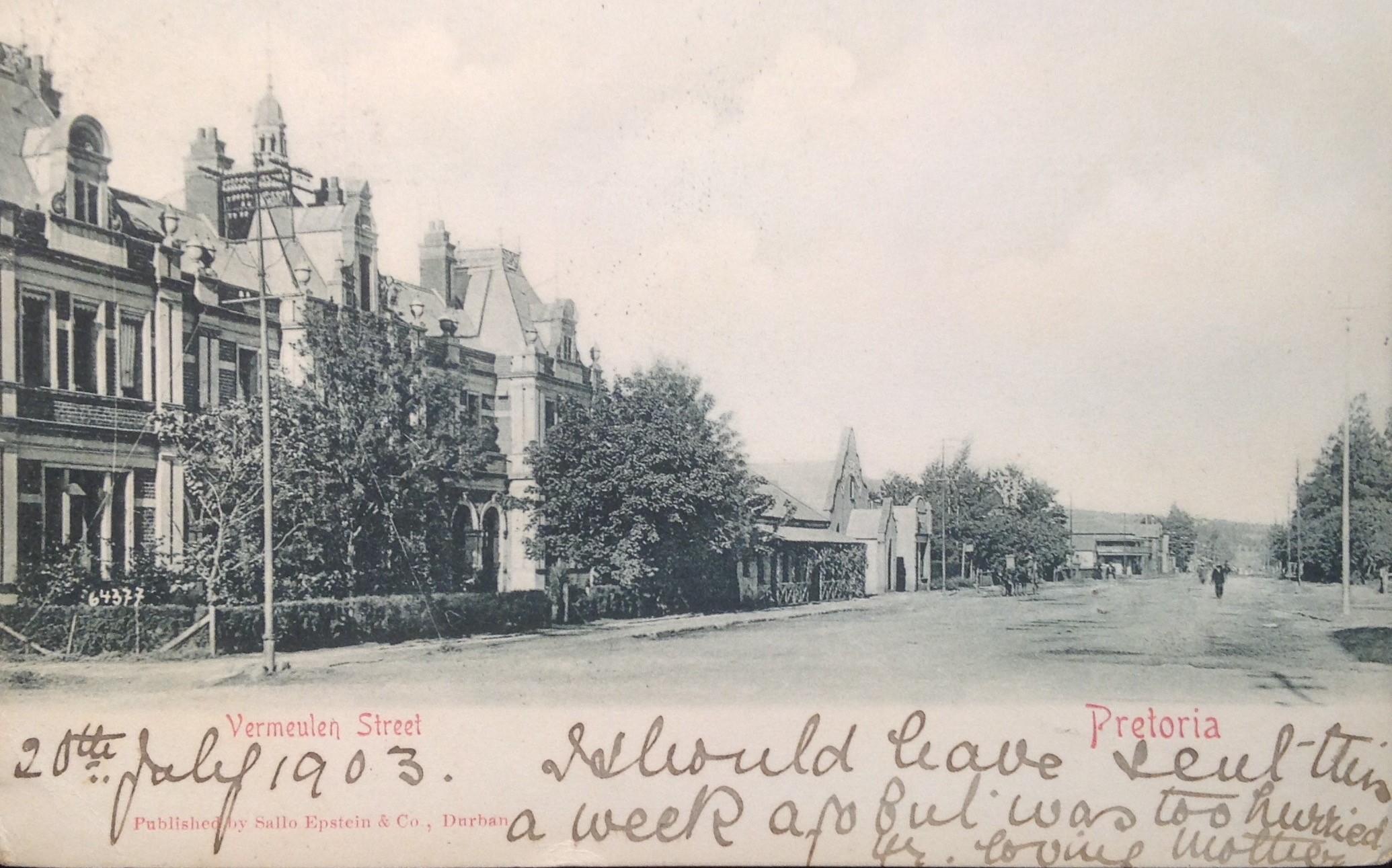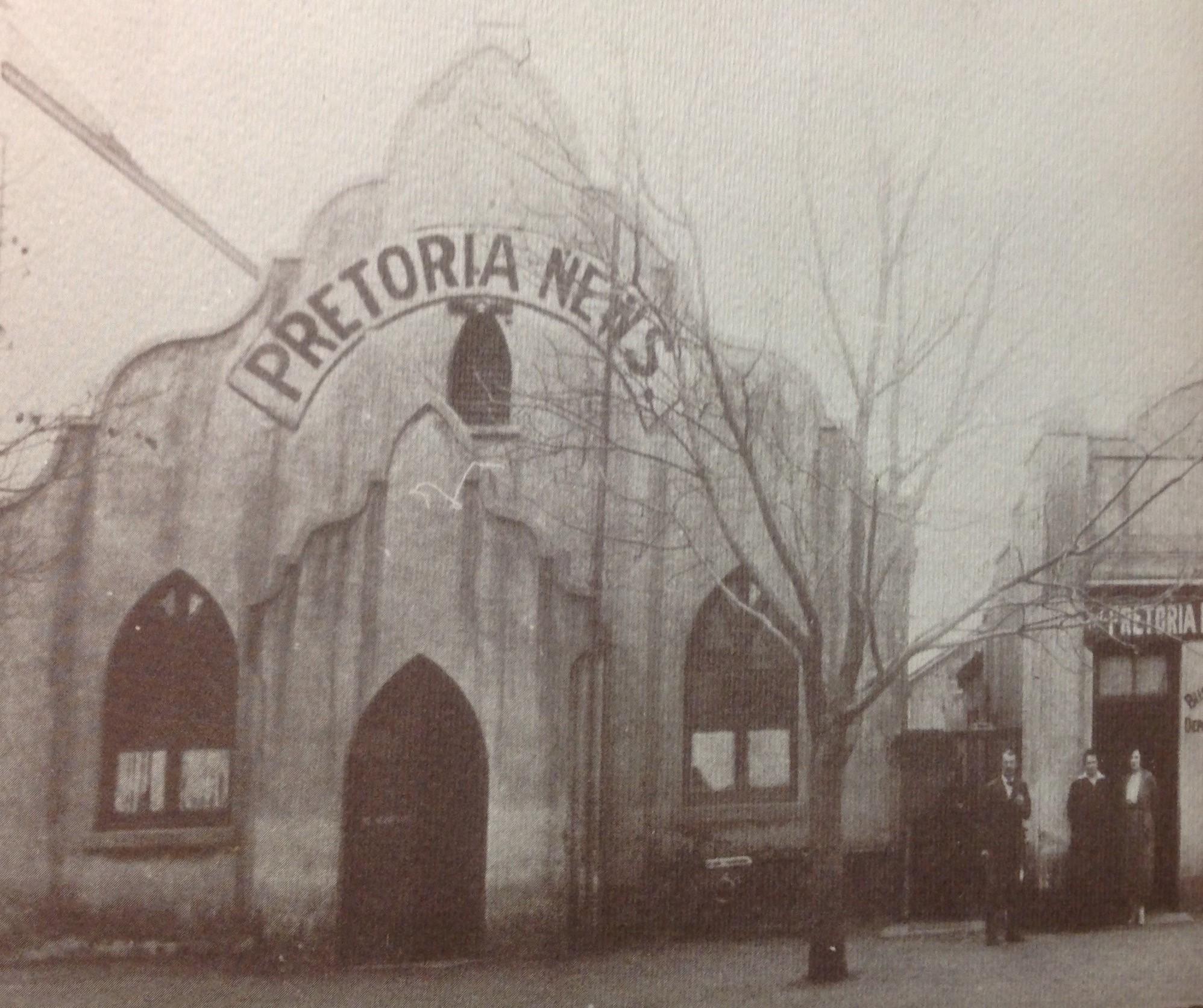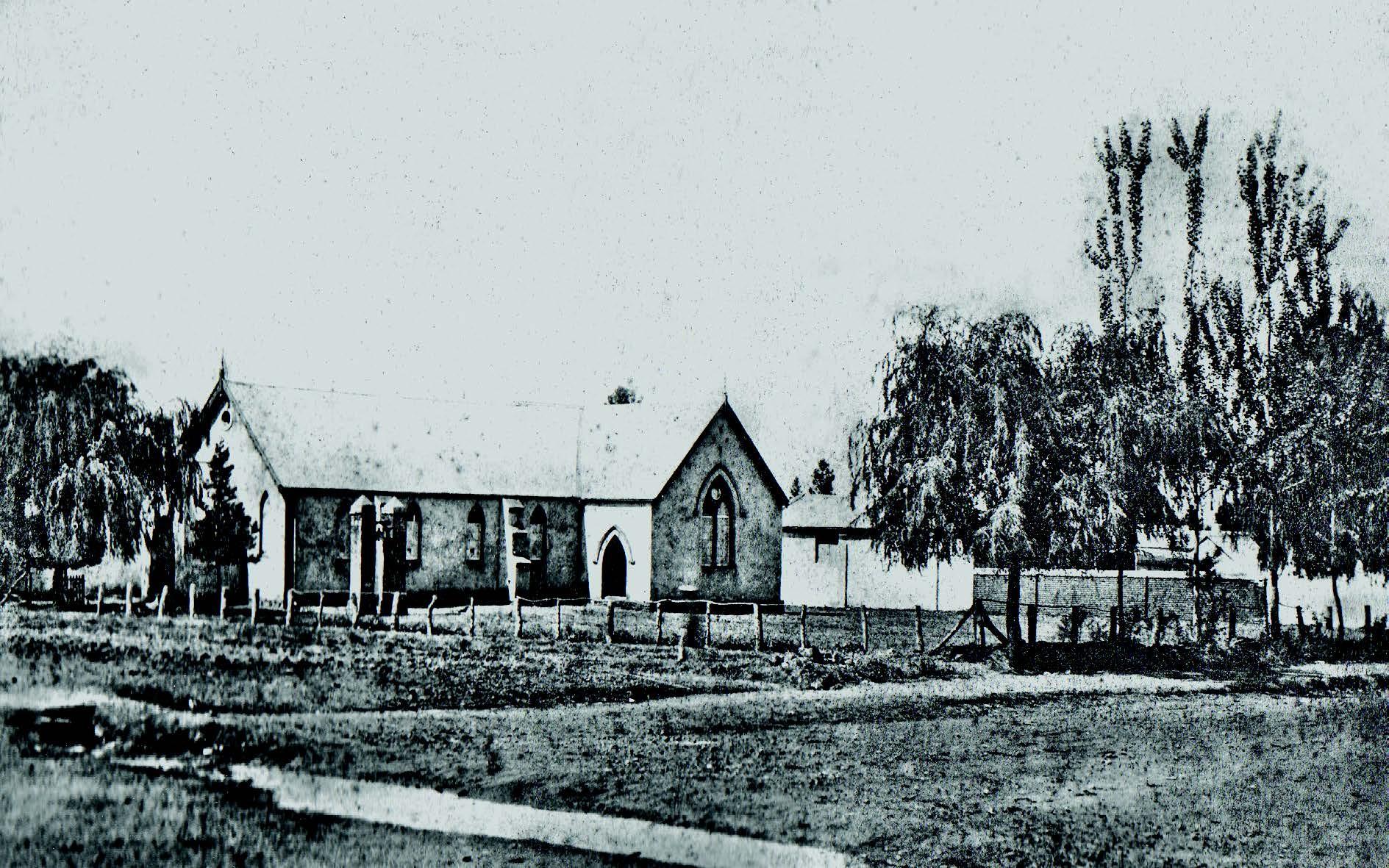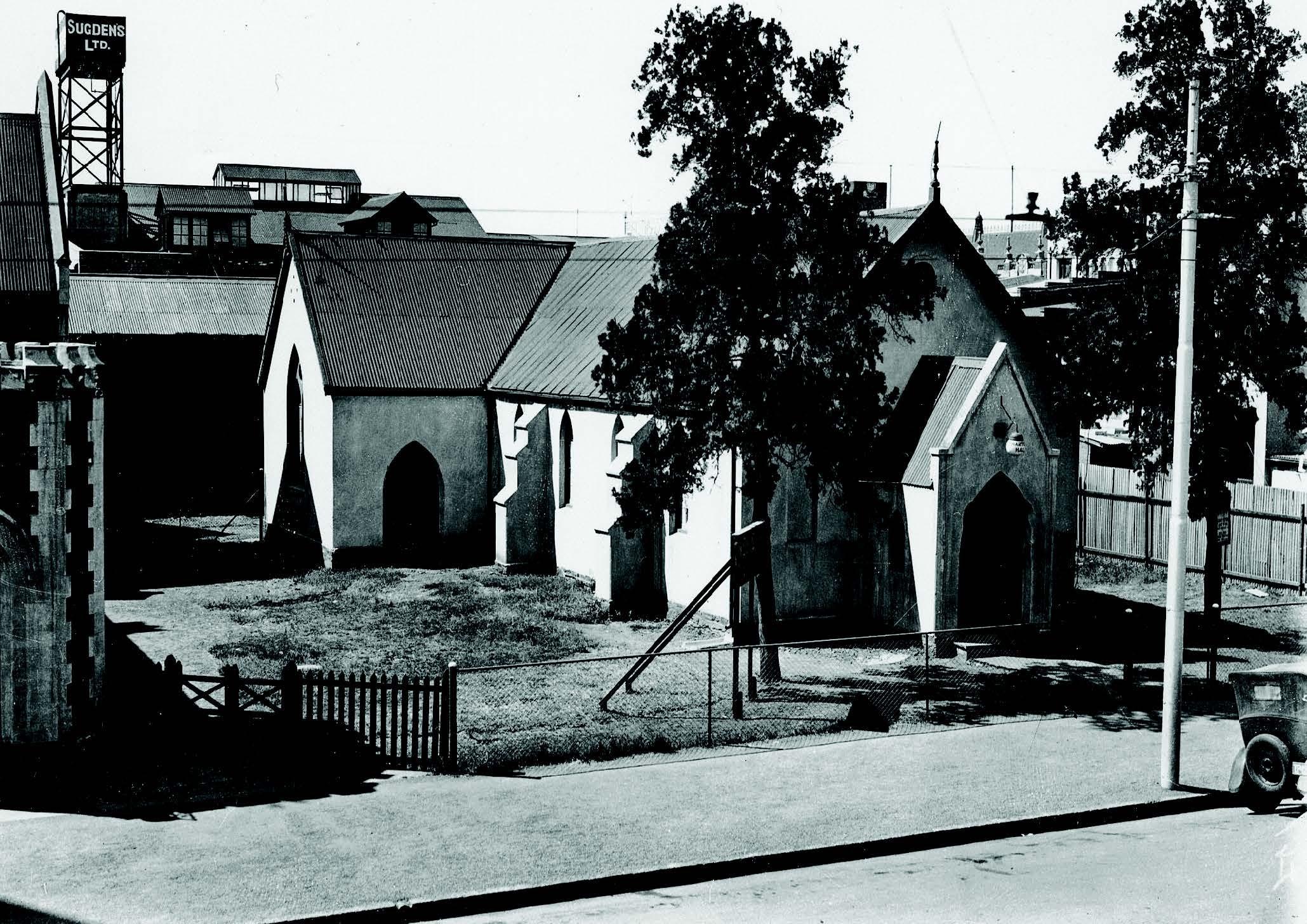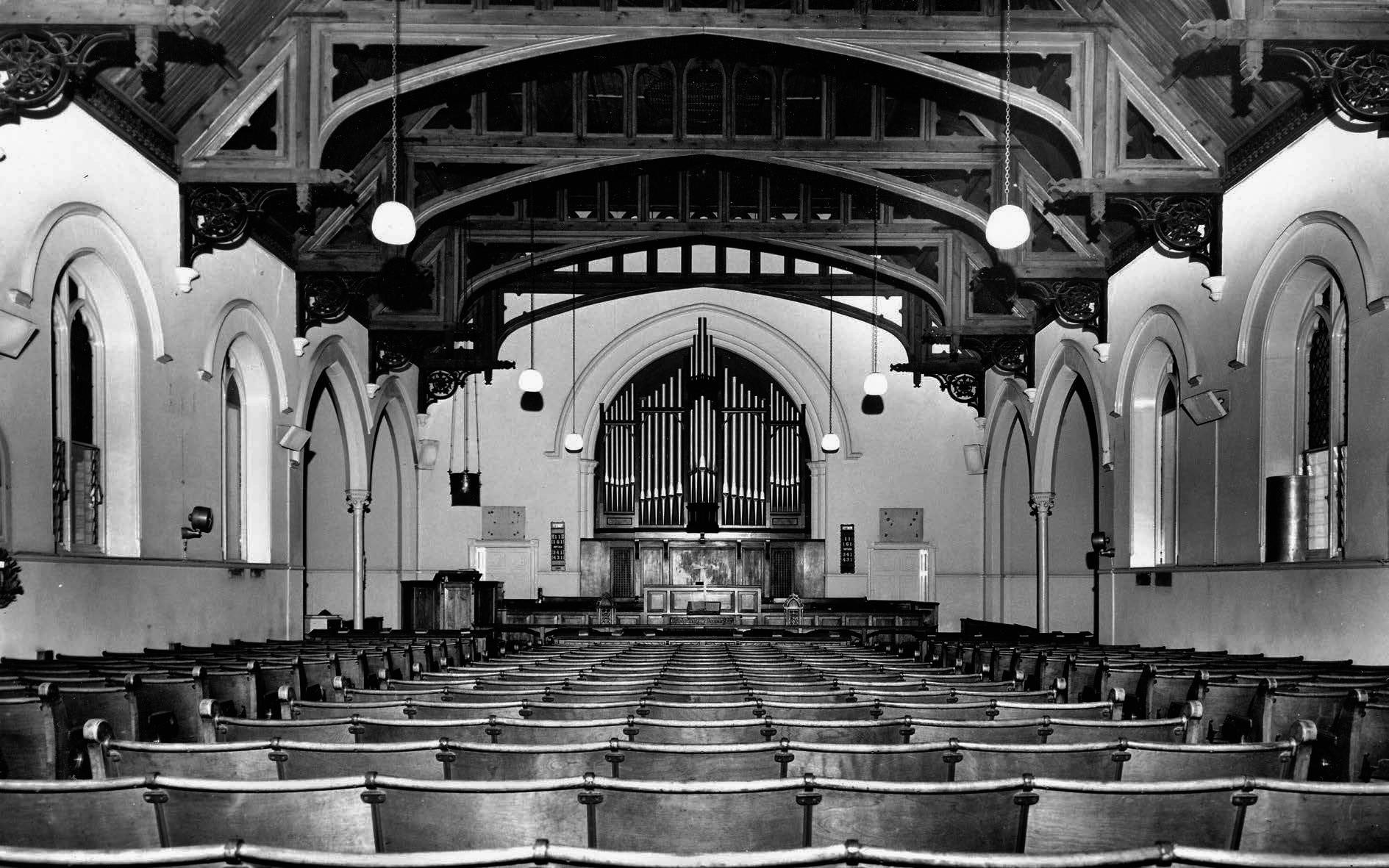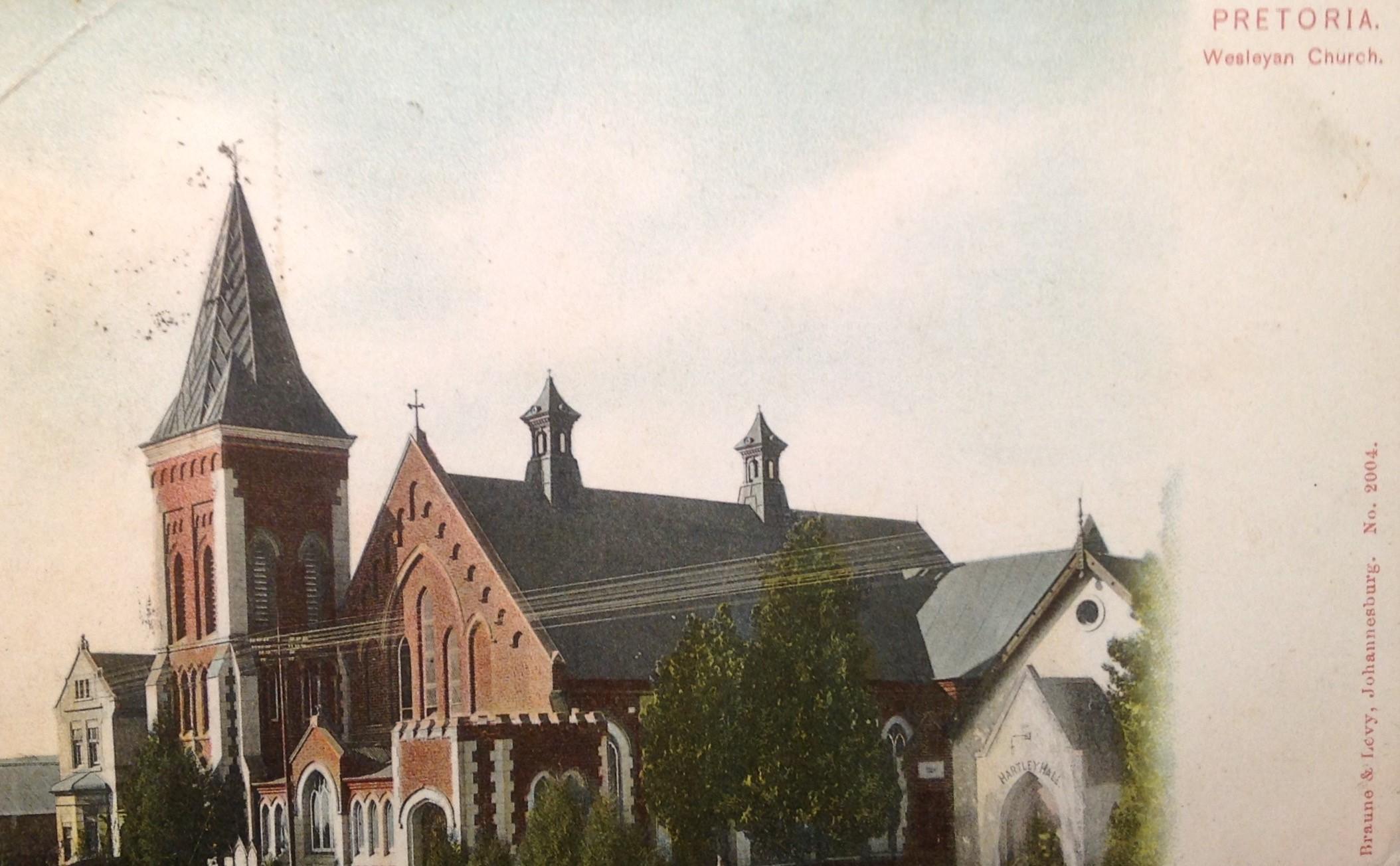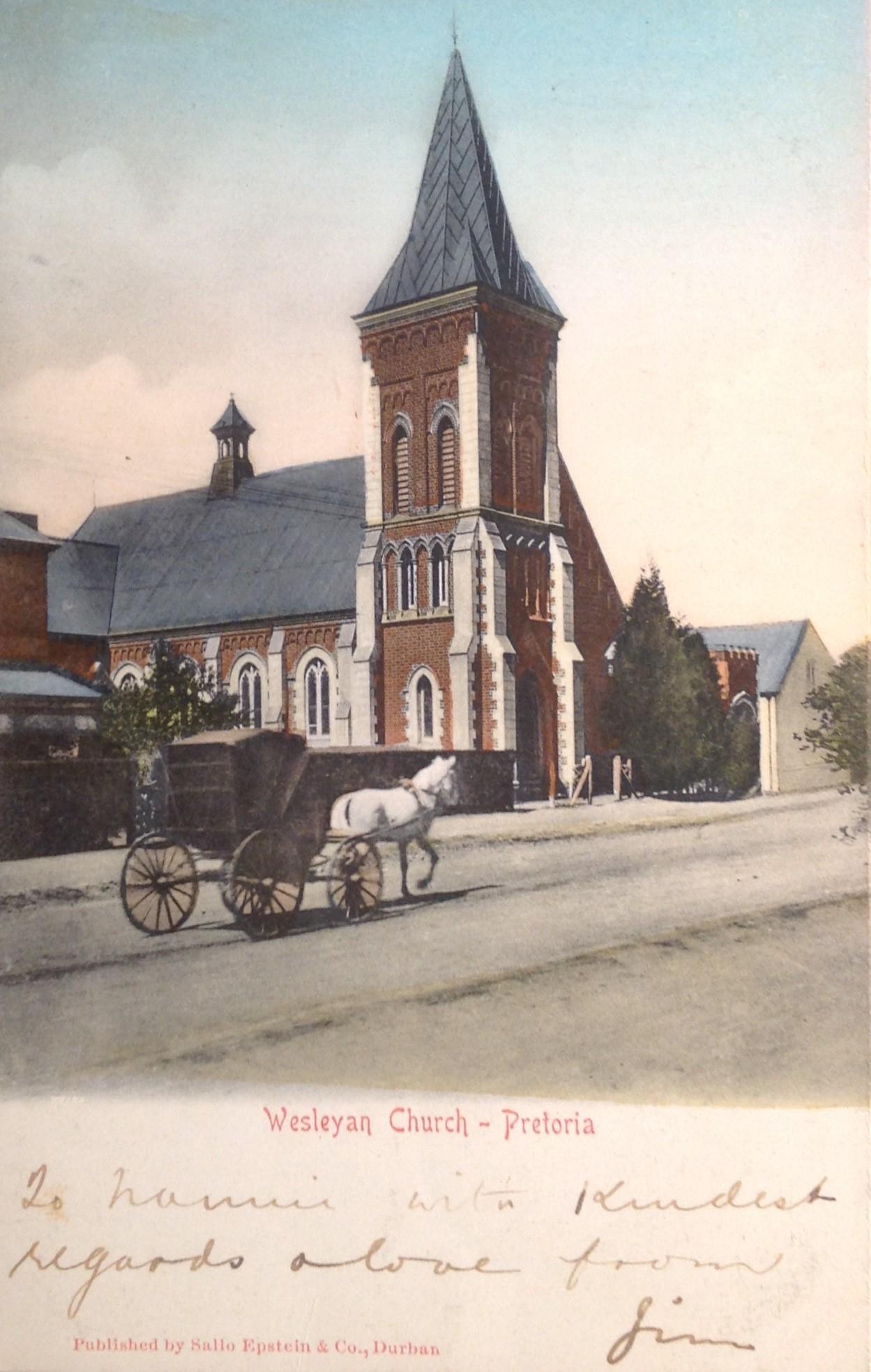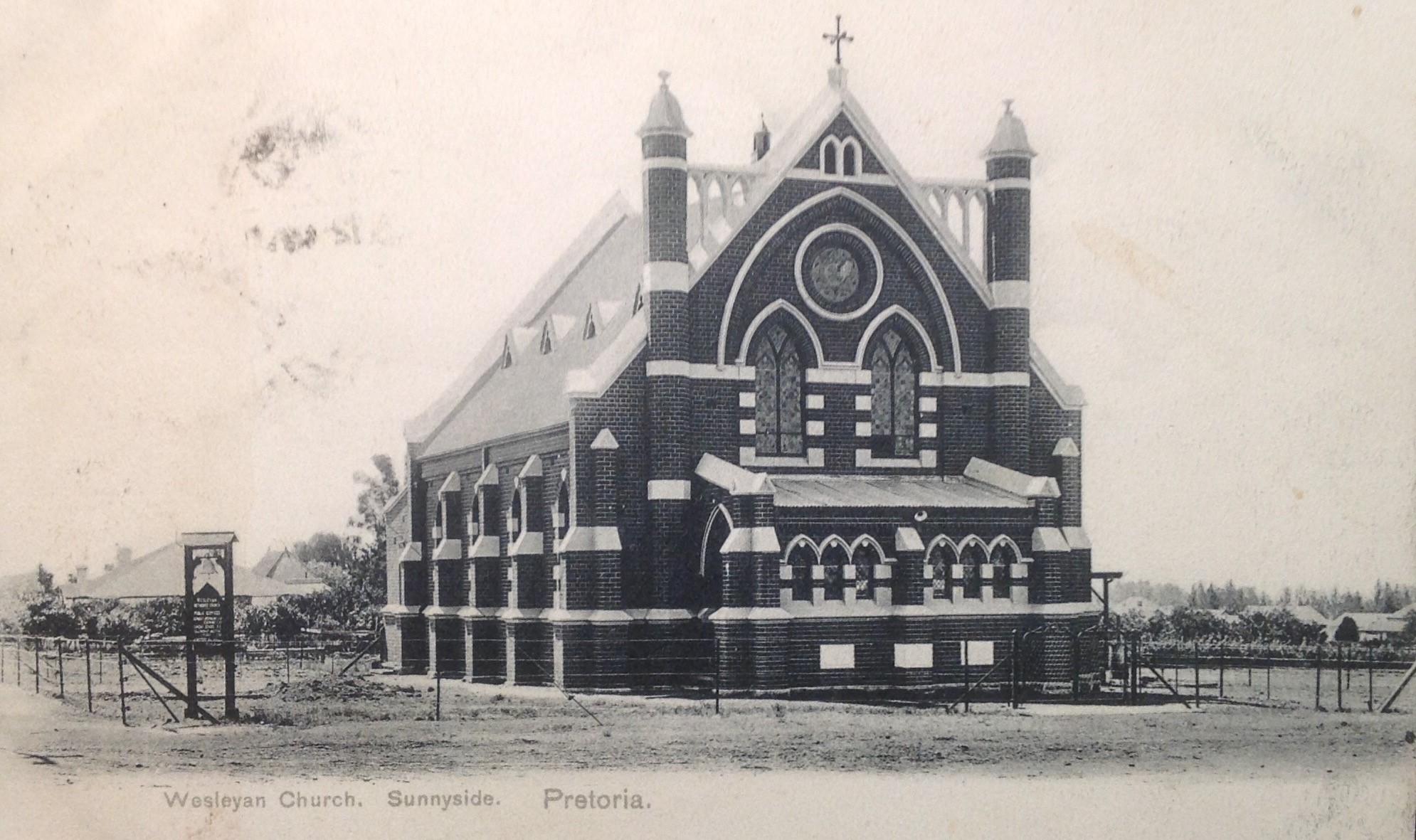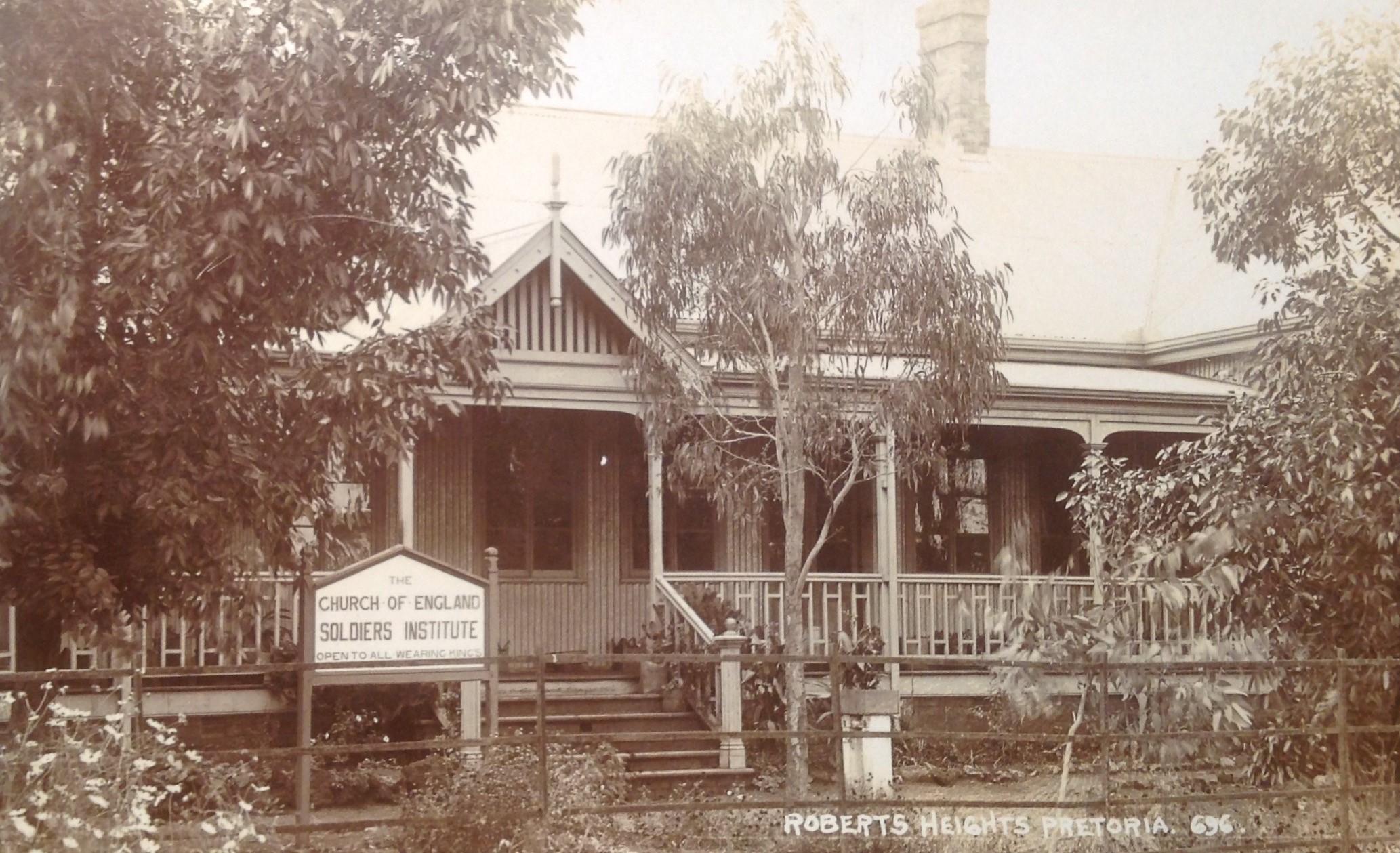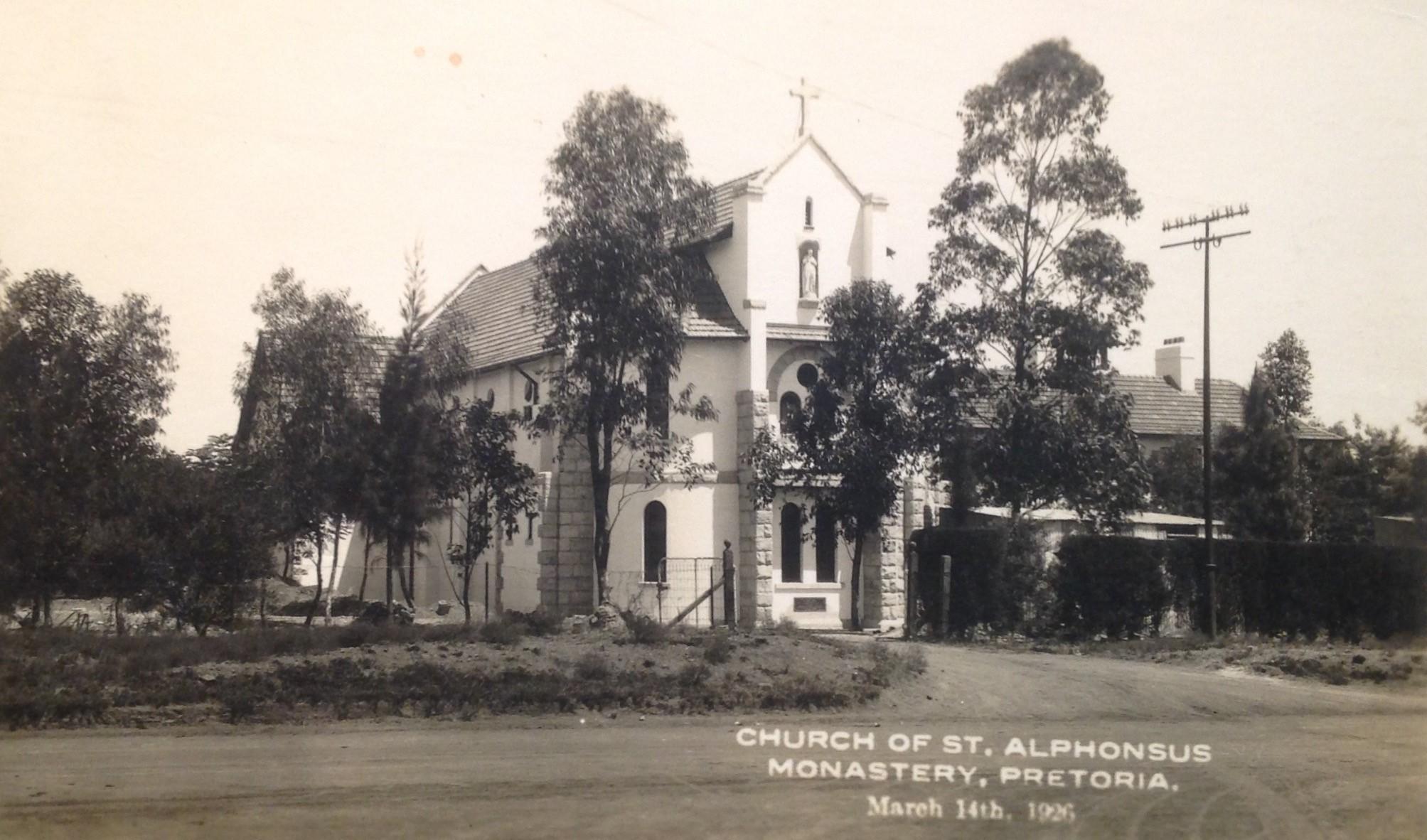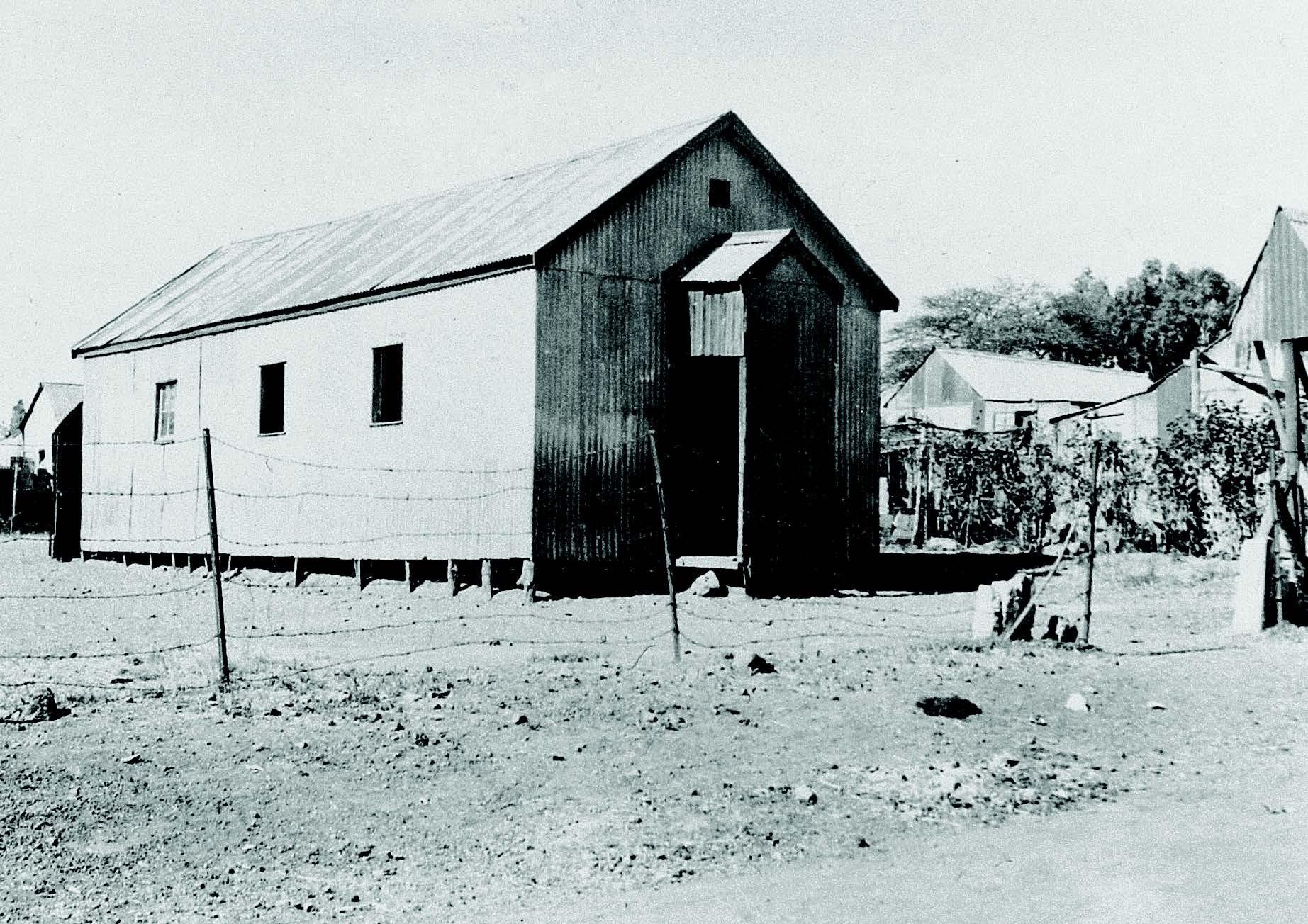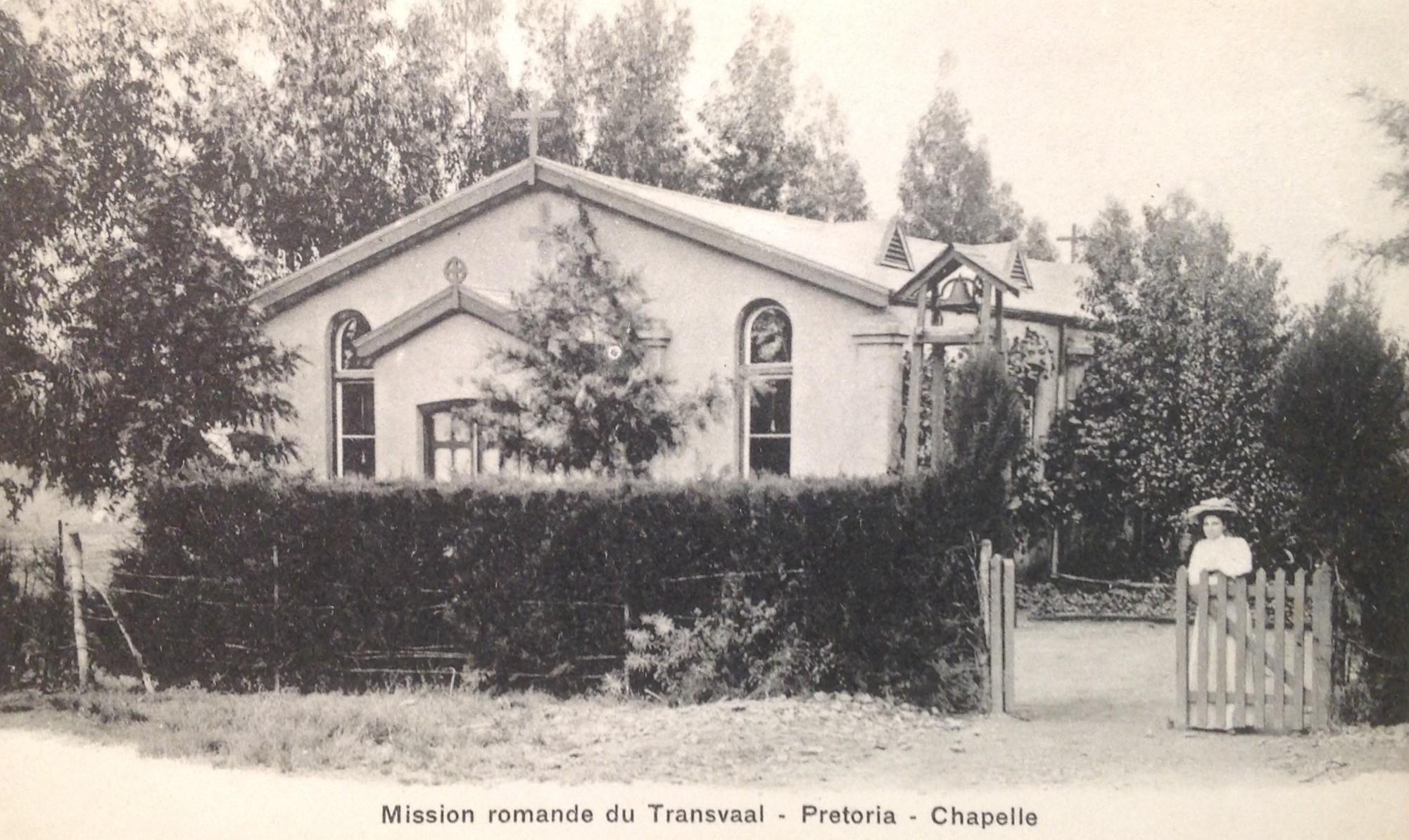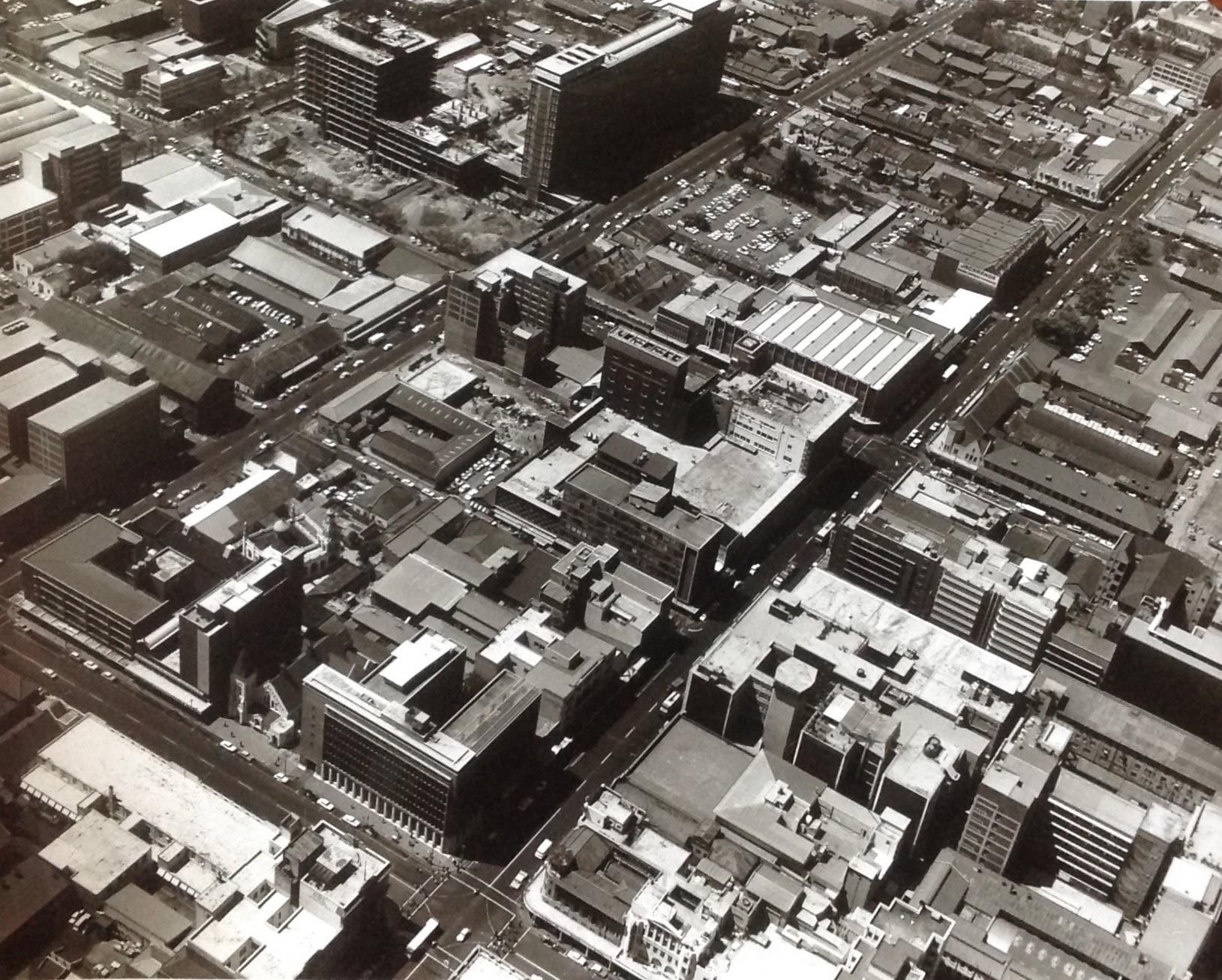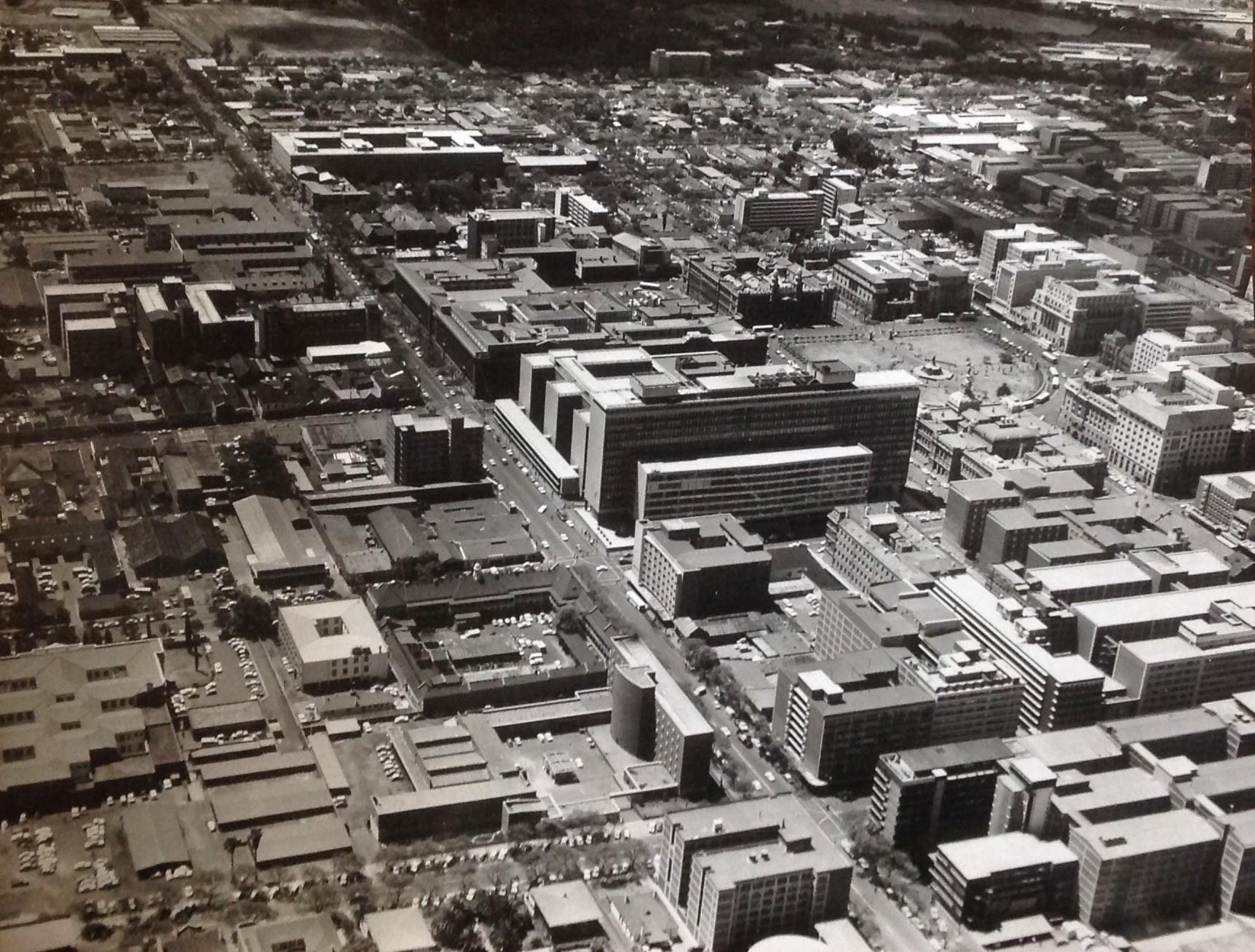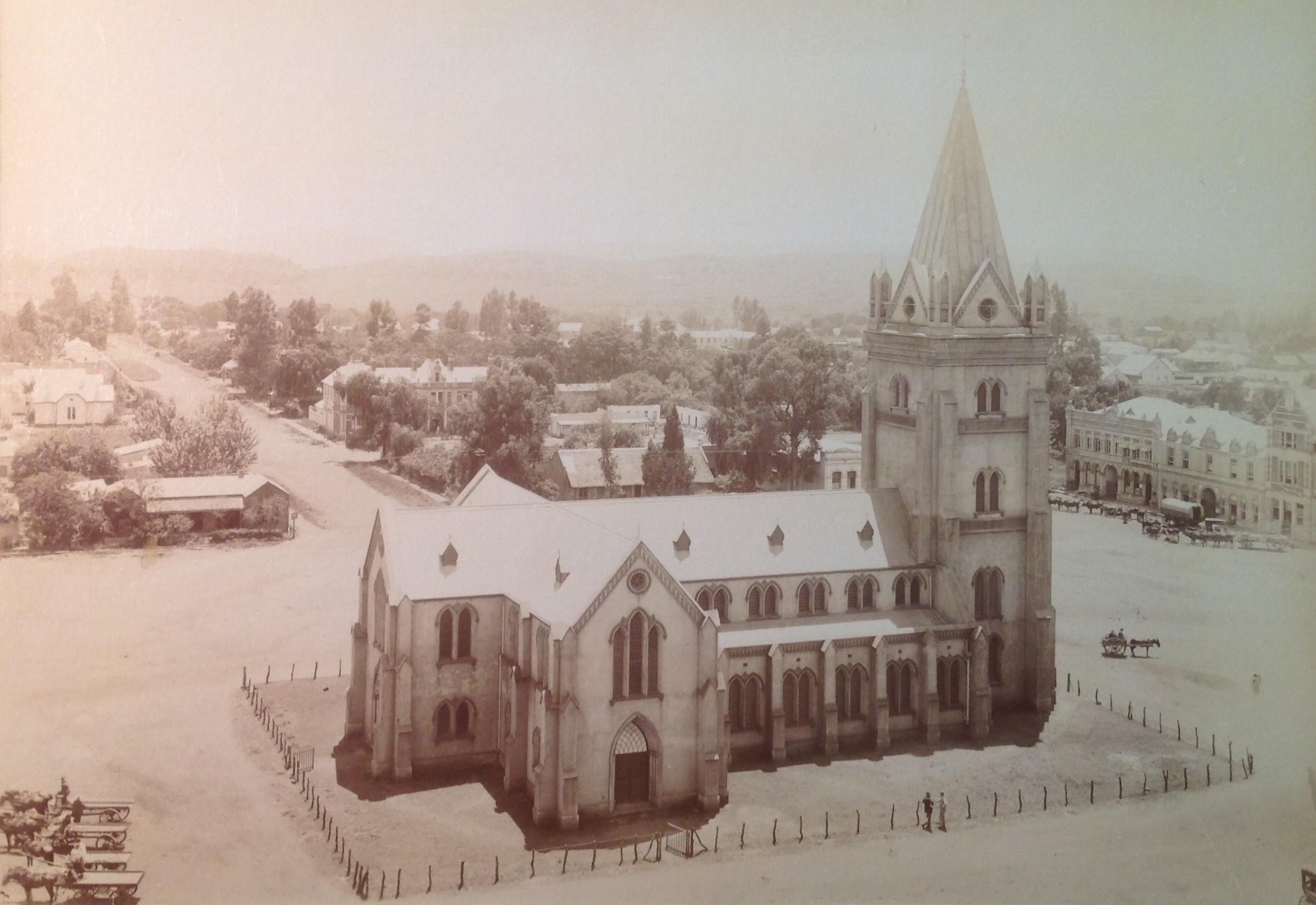
Disclaimer: Any views expressed by individuals and organisations are their own and do not in any way represent the views of The Heritage Portal. If you find any mistakes or historical inaccuracies, please contact the editor.
This article reflects on the early religious establishments in Pretoria, intuited from images as portrayed on picture postcards (mainly between the early 1900s and the late 1920s). The remainder of the images included in this article are standard photographic formats contained in the Hardijzer Photographic Research Collection (HPRC) or obtained from Friedel Hansen and Rosa Swanepoel.
From the dawn of civilization, religion, with its extraordinary and powerful influence, has played a significant role in the broader realm of human existence. Today, religion remains the lifeblood of many societies all over the world.
These living faiths, in turn, provide us with insights into the lives and rituals of those immersed in their particular religion.
In order for society to live out its religious convictions, places to worship and perform religious rituals came into existence, resulting in some of the world’s most intricate and ostentatious architecture.
Compared to the rest of the world, South Africa has a significantly younger religious history.
Some conflicting information seems to exist on the earliest 'western' religious establishments in South Africa. It has been suggested that the first religious complex to be built in South Africa was around 1678 in Cape Town – the cornerstone of which was laid by Willem Adriaan van der Stel.
Pretoria’s first religious building was erected during 1857, resulting in a gap of some 180 years between South Africa and Pretoria’s first religious complex!
In comparison, Pretoria’s religious history seems almost insignificant considering the above, yet early photographic images produced of Pretoria’s places of worship remain significant and of historical interest.
1) Missionary activity in Pretoria – some snippets
It has been suggested that the first missionary to visit the area where Pretoria is situated today was the Wesleyan missionary, the Reverend James William Archbell (1798–1866).
Whilst more missionaries made their way to early Pretoria, the first place of worship to be erected in Pretoria was during 1857, some 14 months after young Pretoria was established – more about this later.
The first German missionary station to be established in Pretoria was established by the Reverend Knothe on 4 August 1866. It is also recorded that Dr. Wangemann, also a German missionary, arrived in Pretoria on 25 April 1867.
Bishop Twells (first Bishop of Bloemfontein) was the first English clergyman to enter the country. He visited the Transvaal during 1864. The Reverend Clulee was the first priest to occasionally visit Pretoria.
The first non-conformist minister that settled in Pretoria appears to have been the Reverend George Weavind, a Wesleyan preacher who was appointed during 1872. Is it possible that Weavind Park, in the north of Pretoria, was named after him?
A number of mission stations went up in and around Pretoria pre-1900. Some of these include Skoolplaats (early 1880s); the Swiss mission in Greeff Street, Trevenna or the Baptist Cuthbert’s mission.
2) Pretoria’s early places of worship
From the outset, it needs to be acknowledged that this article, which includes images of 29 early Pretoria places of worship, does not pretend to be a complete record of these establishments built between 1857 and the late 1920s.
It is very probable that some smaller outlying establishments, which did not attract the attention of early photographers, may well be omitted from the visual records contained in this article.
An exception is also made by reflecting on early Templar activity in Pretoria. Whilst their places of gathering were not intended for worshipping, Templar buildings are briefly described due to their close relationship with religious establishments in Pretoria (more about this later).
I also have to acknowledge that the content may well contain unintended historical imperfections and omissions. Any corrections and relevant additions are invited accordingly.
Whilst this article relies primarily on early picture postcards in order to present a visual narrative, commercial publishing of picture postcards started falling out of fashion post the 1920s. This results in a gap of some 10 years in terms of early photographs of Pretoria’s places of worship (between the early and late 1920s). One such example would be the NG Kerk in Pretoria East (opposite Loftus Versfeld), which was completed during 1928. Personally, I have not come across any photographs of this complex captured during the 1920s or 1930s, be that in picture postcard format or any other photographic format.
Although more contemporary images of the complexes listed below are available and can be used to supplement this article, my approach is more from a purist angle, relying only on photographs taken pre-1930. However, some exceptions had to be made, such as the inclusion of early 1970s aerial photographs by Dotman Pretorius, showing some of the places of worship covered in this article. The photograph of the Pretoria East NG Kerk, referred to above, is also a contemporary photograph extracted from the internet.
Within this article an attempt has been made to be as inclusive as possible of all cultures and religions that may have been active in early Pretoria. Sadly, little is known or recorded about black African religious activity at the time. It also needs to be added that pre-1930, other than mission stations, there were probably no established black churches around Pretoria. This article includes one early photograph of a black African mission church in Marabastad, the date of which is unknown.
Some local churches, more so the English and German faiths, have been recorded as being actively involved in mission work amongst the early Pretoria-based black African community.
Not being a church historian, I found unravelling the history of the various religious denominations somewhat challenging, especially as far as the Afrikaans/Dutch congregations or Templar bodies are concerned. The reader is therefore invited to accept the primary purpose of this article as being the sharing of the visual history of Pretoria’s places of worship and less on actual denominational history.
Where information is available, the year the religious establishment was built, the architects, the builders, as well as building styles are captured. The location, with old and new street names, is also provided for each establishment.
Where an establishment:
- has been replaced by a more modern structure on the same premises; it is recorded as “Replaced”;
- has been demolished without replacement, it is recorded as “Demolished”;
- still stands; it is recorded as “Still stands” (most of these buildings have also subsequently achieved heritage status);
- or “Rebuilt” after the complex burned down or was damaged by storms.
The below list of places of worship, each supported by some photographic evidence, is presented in alphabetical order:
2.1) Anglican churches
The first Anglican service in Pretoria was held during 1863.
Henry Brougham Bousfield, described as a hand-some, strong-built man with a fine speaking voice and an impressive presence, became the first Anglican bishop of Pretoria. He arrived in early January 1879 with his wife, two sons and six daughters.
Bousfield also established two schools, one of which was the Diocesan school for boys, founded originally as St. Birinus School, which was actually a choir school for the cathedral. This school was based in Skinner Street.
The second school was the Diocesan school for girls. At its foundation, it was called St Etheldras’ school (opened 21 January 1879 with no more than 10 girls). The school later moved to Koch Street (as Bosman Street was then called). Due to growth, the school moved to the premises on Skinner Street on 22 April 1889.
- St Albans Cathedral (First and second complex – Demolished/Replaced)
The first St. Albans Church was erected by the Royal Engineers during 1872. This “cathedral” was a little tin-roofed chapel in Church Street West, with the first appointed Rector being Reverend GW Sharley (1874). The corner stone of the second complex was laid on 2 April 1878. The architect was William White.
- St Albans Cathedral (Third complex – Rebuilt)
Originally designed by Sir Herbert Baker, the building of the Chancel (the eastern section) commenced during 1905. The remainder of the building was of timber and steel. The church burned down during the 1960s, after which it was modernised during 1965.
- Location: Schoeman Street east (Francis Baard Street today)
- Year built: Foundation stone of new cathedral was laid in 1908 by the Earl of Selbourne
- Architect: Sir Herbert Baker
- Building style: Early English Architecture
The original St. Alban’s Church which was completed during 1909 (circa 1910). This complex was replaced during 1934 by the existing complex. It only obtained cathedral status in the same year
Interior of the original St. Alban’s Church (circa 1905)
First Anglican church from a different angle (circa 1910)
2.1.1) Other Anglican church structures
- St Michael & All Angles (Still stands)
Little information is available on this Sunnyside-based church in Kotze Street.
It has been suggested that this Anglican church was established by George Bourke, with the first service being held on 27 Sept 1903.
The church is also referred to as the Herbert Baker church, suggesting that he was the architect along with Masey and Sloper – One source suggests this building was completed during 1908. After Baker’s death, during August 1916, a stained-glass window in his memory was placed in the church.
No early photograph of this building has been sourced to date.
- Anglican Christ Church (Still stands)
This is another historic Herbert Baker building – built during 1906. Additions to the complex were made during 1926.
No original early photograph has been sourced to date of this Arcadia-based building (Pretorius Street).
- St Wilfred’s Anglican (Still stands)
This church on Duxbury Road, Hatfield was built during 1923. No original early photograph of this complex could be sourced.
2.2) Afrikaans/Dutch churches
The original Afrikaans church that developed in South Africa has split into three different denominations. They remain Calvinistic Protestant with the English translation of their name remaining “Dutch Reformed”.
In Afrikaans, there are subtle differences in their titles. In order to avoid confusion, the Afrikaans names and abbreviations are therefore used.
The three Dutch Reformed churches in Afrikaans are:
- Nederduitsch Gereformeerde Kerk (NGK) – The oldest of the three-sister-churches;
- Nederduitsch Hervormde Kerk (NHK) – This denomination was responsible for the construction of the first church on the Pretoria square. NHK was the official church to the ZAR resulting in it being the determining authority on spiritual matters. It has been suggested that the NHK was the only one offering spiritual education at the time;
- Gereformeerde Kerke (GK) – colloquially referred to as the “Dopper Kerk” – came into existence on 10 February 1859.
A minister from the Netherlands, Dirk van der Hoff, came to the Transvaal in 1853 and subsequently also became the first appointed minister of the newly established Nederduitsch Hervormde Kerk (NHK) which became the state church of the South African Republic (ZAR) during 1860.
Dirk Postma, also from the Netherlands, was also accepted as a minister into the NHK but after learning that he and his congregation would be required to sing untested hymns, he and his followers elected to break away from the state church to form the Gereformeerde Kerk (GK) as early as 1859. Paul Kruger also happens to have been a founding member of the GK.
Both the NGK and NHK were positive about church unity, resulting in one of the more significant approaches taking place when they decided to combine their efforts.
The two entities combined in Pretoria on 7 December 1885. This resulted in the establishment of the Nederduitsch Hervormde of Gereformeerde Kerk (NH of G Kerk), be it for a short period.
It has been suggested that the main driving force behind this merger was the successful effort by the Afrikaans-speaking population against the British during the 1st Anglo-Boer war (1880-1881). This event resulted in nationalism being awakened amongst the Afrikaans-speaking.
Following the merger between the two entities, the third complex on Pretoria Church Square was erected during 1885. This building therefore became the property of the newly amalgamated church.
The amalgamated entity did however not survive beyond 1892, in that not long after unification, dissention arose between the two groups of the congregation of this church, and it was decided to form two separate congregations again, namely the Nederduitsch Hervormde Kerk (NHK) and the Nederduitsch Gereformeerde Kerk (NGK).
When the third church complex on Pretoria square was eventually sold, £12500 went to the NHK and £37500 to the NGK.
The NGK then used this money to erect what is today known as the Bosman Street Church, whilst the NHK built a new sanctuary in du Toit Street.
2.2.1) Three Churches on Church Square (all three demolished)
The square became known as Church Square due to a succession of three churches that stood at the centre of the square.
- First and second buildings on Church Square
The building of Pretoria’s first church complex during 1856 was initiated by Reverend (Dominee) Dirk van der Hoff as early as 1854, a year prior to Pretoria being officially proclaimed.
The first building was a simple building with thick mud walls, a thatched roof and stepped gables.
The second building (an enlargement of the original during 1866) could seat around 700 people. After being struck by lightning during 1882, the structure burned down (16 years after being built), leading to its replacement by a superior Victorian Gothic structure (see third building below).
- Location: Market Square – later renamed to Church Square
- First complex inaugurated: 22 February 1857 by Dirk van der Hoff
- Architects/Builders: William Skinner and Devereux brothers
- Building style: Cape Dutch
The second church on Pretoria’s Church Square (circa 1880). In the early years, people would come from afar to attend a weekend of church activities resulting in a gathering around the church where church goers would pitch their tents (tentedorp) and interact with each other in between church activities. Photograph by HF Gros
Another community gathering (Nachtmaal) at the church on Pretoria’s Church Square (circa 1880). Photograph by HF Gros
Market Street (later Paul Kruger Street) - Looking south. The second church complex in Pretoria’s Church Square can be seen in the distance (circa 1880). Photograph by HF Gros
Third building on Church Square
This building in itself became the first of any importance in the Transvaal at the time.
Within a relatively short life span of 20-years, the tower however became unsafe, resulting in a decision to pull down the entire building during 1904. President Paul Kruger's state funeral was still conducted at the church building shortly after the demolition commenced.
Just before being pulled down, the then government bought the square and church from the congregation for £50 000 plus 8 stands in town from which the proceeds were divided between the two congregations.
During 1904, just prior to the demolition of the church, the Bible was ceremoniously removed from the church complex and carried to the new church in Kock Street by Reverend Bosman.
Many early photographs of Pretoria were initially taken from this church tower, showing street scenes in all directions, with images of the easterly direction being the more common.
- Location: Market Square – later renamed to Church Square
- Inaugurated: 23 January 1885
- Architects/Builders: Tom Claridge, Leslie Simmonds & H Franken
- Building style: Gothic structure
Another Nachtmaal at the church on Church Square (circa 1885). Photograph by HF Gros
A church complex that stood proudly on Church Square for some 20 years (circa 1904). On the right is the Palace of Justice (Northern side of Church Square). Picture postcard by Sallo Epstein
The interior of the 3rd church complex that stood on Pretoria’s Church Square (circa 1900)
Looking west - Sunday activity around the 3rd church complex on Church Square, Pretoria (Circa 1903). The tower was often used by photographers to capture Pretoria street scenes in mainly the eastern, western and northern directions. Picture postcard by C. Basson. Note the telephone poles and wiring in the foreground. Just left of the church complex, the Netherlands Bank building can be seen.
President Paul Kruger’s funeral service (16 December 1904) at the Church on Pretoria’s Church Square. Although not visible on the photograph, the demolition of the church tower has already started. The formal ceremony therefore took place outside the church on the day. Shortly after this event, the complex was demolished entirely. Picture Postcard published by Sallo Epstein (Card no 1034)
Removing an old landmark. Phase 1 - The 3rd church complex on Pretoria’s Church Square in the process of being demolished during 1904. Note the men on the tower as well as the ox wagons used to remove the rubble
Removing of a landmark – Phase 2 – The church was finally demolished during early 1905 following the funeral of President Paul Kruger on 16 December 1904.
2.2.2) Nederduitsch Gereformeerde Kerk (NGK)
The oldest of the three-sister-churches.
- Bosman church/Groot Kerk (Large church) – Still stands
This church building was named after the Reverend Hermanus Stephanus Bosman, who initiated the fund-raising for the church. This church was built a short distance from the original building, namely behind the post office complex, in a north-westerly direction – one block away.
Bosman, who ministered at this Dutch Reformed Church for just over 40 years, used to repeatedly say that Pretoria between the 1870s and 1890s was but one great family.
- Location: Bosman & Vermeulen Street (Madiba drive today)
- Corner stone and inauguration: General Louis Botha laid the corner stone on 11 May 1903 with the inauguration taking place on 30 September 1904
- Architects/Builders: Klaas van Rijsse, Kraan & Wyers. Built by GJ Dorlas at a cost of £28 000
- Building style: Neo-Renaissance
Reverend Hermanus Stephanus Bosman (1848 – 1933) cabinet photograph by Pretoria based JC Munro (Circa 1900). Bosman served his community for some 40 years. During 1904, just prior to the demolition of the last church standing on Church Square, Bosman ceremoniously removed and carried the Bible from the old complex to the newly built complex on Koch Street (later became Bosman Street). Bosman and his wife, Aletta Hendrina, had 10 children
Groote Kerk in Bosman Street during President Kruger’s funeral
President Kruger’s Funeral at the Groote Kerk in Bosman Street. The crowd here is viewing the Lying-in-State. The Suzanna Zaal hall (named after Kruger’s wife) seen here was built during 1903 whilst the Groote Kerk (next door) was only built after Susanna Zaal during the same year. In the background, between the church and the hall, buildings on Church Square can be seen (circa 1904). Picture postcard published by Sallo Epstein (Card no 1031)
- East Church - Pretoria East (Still stands – declared heritage site)
The bell in the tower of this complex originates from the tower of the third and last church that graced Church Square. The bell was in all probability imported directly from Germany at the time.
- Location: Kirkness Street
- Inauguration: 1928
- Architects: Gerhard Moerdyk
- Building style: Byzantine Revival architecture
The NG Church – Pretoria East (Next to Loftus Versveld) was inaugurated during 1928
- Eloffsdal (Still stands)
The stone-laying of the Les Marais church, described as the oldest church complex in the Moot (to the north of Pretoria), was conducted by Drienie Joubert (widow of Piet Joubert) on 1 June 1905.
This building, today known as the SP Engelbrecht Museum for the NHK, was initially established as an NGK building.
It has been suggested that the Mayville Primary School was also based in this building for a while.
Les Marais Church – the oldest church complex in the Moot (to the north of Pretoria). The stone-laying was conducted by Drienie Joubert (widow of Piet Joubert) on 1 June 1905. The building today acts as the museum for the Hervormde Kerk.
2.2.3) Nederduitsch Hervormde Kerk (NHK) (Still stands – declared heritage site)
It was built in du Toit Street where the town ended at the time and is known as the oldest surviving Nederduitsch Hervormde Kerk (NHK) in Pretoria.
- Location: du Toit Street
- Corner stone: laid on 18 July 1904 by General Louis Botha
- Inaugurated: 24 February 1905 by Prof PJ Muller
- Architects/Builders: JG Kraan & JB Weijers. Built by GJ Dorlas
- Building style: Neo-Flemish/Dutch Renaissance
Nederduitsch Hervormde Kerk (NHK) in du Toit street (circa 1906). Picture postcard by Sallo Epstein (no 1585)
2.2.4) Reformed church (Gereformeerde Kerk – Dopper Kerk)
The church was founded in Pretoria as far back as 1859.
- Church Street west (1st & 2nd structures) – Demolished
During 1863, the congregation obtained six erven from the ZAR – the same property where the third complex stands today.
Following a temporary structure, the first fixed complex, a waenhuiskerk (“wagon-house church” - rectangular shaped complex), was built. To date, no images of this first structure have been identified.
Over the next 30 years, or so, this second structure underwent a number of improvements and extensions. Support pillars were put in place to support the structure, the thatched roof was replaced with corrugated iron. The church could eventually seat some 500 churchgoers.
- Location: Church Street west (today WF Nkomo Street)
- Foundation stone/inauguration: 8 April 1867 – Pres M.W. Pretorius
- Builders: JN Arnoldi, followed by GL Pierneef and H Dijksterhuis
- Building style: Waenhuiskerk (Wagon-house church)
The second Gereformeerde Kerk in Church Street West. Alterations to this building were continuously made from 1863 onwards.
The Old and New – Kruger’s Church in Church Street West. Picture postcard published by Sallo Epstein (circa 1906)
- Church Street west (3rd structure) – Still stands – declared heritage site
This church has been in use since 25 December 1897. The chairs used by Paul Kruger and his wife, together with the hymn book used by them, are still on display in the church.
Kruger often preached the Sunday sermon at this church, which stood directly opposite the presidency. He has been described as an impassioned orator and preacher. He could marshal facts with reason and sound argument and speak most eloquently. On occasions he got so carried away by emotion, resulting in him becoming entangled in a mass of biblical allusions and references so dense it allegedly was impossible to follow him.
The clock in the tower never had any hands, nor was a clock mechanism installed at the time.
Another interesting snippet is that when the original corner stone (revealed by Paul Kruger) of the church building was damaged during around 1992, the restoration project that followed uncovered a steel cylinder – containing two newspapers, namely the Volkstem of 9 October 1896 and Transvaler of 11 August 1951. The second newspaper was included during a restoration project conducted during 1951.
- Location: Church Street (today WF Nkomo Street) – next to original building
- Foundation stone: Laid by Pres Paul Kruger on 10 October 1896 (Kruger’s 71st birthday). Built at a cost of £14 000
- Architects: Klaas van Rijsse
- Building style: Neo-Renaissance
A more modern image (circa 1910) showing the Dopper church. The church on Church Square, as well as the original church next to the new Dopper church have both long been demolished. Picture Postcard produced by Valentine & Sons.
Looking west. Given the amount of activity around the church, this photograph was probably captured on a Sunday or during a funeral (circa 1904). On 25 December 1897, Paul Kruger officially opened the church. Picture postcard published by Sallo Epstein (Card No 1093)
Two churches in Church Street within eyeshot of each other (circa 1904). This photo was taken from the corner of Church and Potgieter Street looking east. Kruger’s house (today a museum) stands on the immediate left. Picture Postcard by P.S. & C (Card number 186)
- Baptist Church (Demolished)
This church was established during 1889 when Reverend Brotherton visited Pretoria to establish contact with English-speaking Free-church members. In the process, he gathered a congregation of Baptists, Congregationalists and Presbyterians.
During April 1891, the Free Baptist Congregational Church bought a site in St. Andries Street (Thabo Sehume Street today) from the Freemasons, on which they erected the first Baptist church. This church stood opposite the Methodist Church.
Soon after the building was erected, dissension amongst church goers as well as financial troubles doomed.
Shortly after the dissension, the Scottish community elected to form their own church (the Presbyterian order - see St. Andrews Presbyterian Church below).
During March 1921 the church building was sold – and later acquired by the government and reserved for public purposes. A portion of the complex was initially incorporated into the public buildings.
- Location: St. Andries Street north – Thabo Sehume today
- Year built: 1891 – foundation stone laid by President Kruger
- Architects: Unknown
- Building style: Unknown
Baptist Congregational Church on St. Andries Street next to the Masonic Hall (circa 1908)
Three religious gathering places in St. Andries Street. Across the road from each other are the Weslyan/Methodist (second complex on left of picture) and Baptist church (second complex on right of picture). The building in front, the Masonic hall, belonged to the Freemasons. Picture postcard by Sallo Epstein (circa 1905)
2.4) Freemasonry/Masonic Hall
It is acknowledged that Freemasonry in itself is not a religion, but the below is included purely due to their close link with religious establishments in Pretoria at the time.
As it is, Freemasonry is not wholly secular and devoid of religious aspects. While many Freemasons are Christians, Freemasonry and Christianity have had a complex, often divisive relationship.
Its members are encouraged to believe in a supreme being, which in the jargon of Masonry is known as the "Grand Architect of the Universe".
Masonic halls were therefore not intended as places of worshipping, but merely as a facility to gather.
The Masonic order of Knights Templar derives its name from the medieval Catholic military order of Knights Templar. It however does not have any direct lineal descent from the original Templar order.
Whilst little information seems to be available on Freemason activity in Pretoria, they were active from early on in Pretoria’s history.
I found it challenging to make sense of differentiating between the various structures built, namely the Temperance hall (which later fell into Methodist ownership) and the Masonic hall just across the road in St. Andries Street.
What is recorded is that the Templars soon owned a large portion of land on St. Andries and Vermeulen Streets. Part of this land was later sold to the Baptist community, on which they built their own church (see above).
To add to the confusion, it is further recorded that a Pretoria Gospel Temperance Mission (referred to as the blue-ribbon army) was established during around 1890. It is not clear how this grouping differs from the initial Freemason activity.
Many well-known early Pretorians belonged to the Freemasons, one of them being the Swiss photographer, Henri Ferdinand Gros, Pretoria’s first permanently based photographer.
- First Hall (1864)
The first Freemasonry lodge in Pretoria, the Aurora Lodge, was established as early as 1862. This lodge was established under the Dutch Constitution. Only Christians could become members of this lodge. Members of this lodge also attended special services conducted by the Reverend Weavind at St. Albans church.
During 1864, a piece of land on the corner of Schoeman and St. Andries Streets was purchased, where the first masonic complex was erected. This complex consisted of a thatched roof. During September 1873 the building was renovated.
De Volkstem reported as follows on this renovation:
The building of the Aurora Lodge has last week been nicely cleaned, plastered and whitewashed, so that it has indeed become an ornament to the own. Honour is due to the Freemasons who have made their Lodge to one of the most beautiful buildings in Pretoria.
During May 1876 members of the Aurora Lodge initiated the building of a new complex on the corner of Schoeman and St. Andries Street which they named the Mutual Hall. The corner stone was laid by President Burgers, a freemason himself, on 27 May 1876. The next day, it was found that the very same cornerstone was damaged by evildoers. Ironically the coins and charters placed with the stone remained untouched.
During April 1878, the Freemason group also established the Prospect Seminary school, intended for girls only (corner Schoeman and van der Walt Streets). This school later became a dual-gender school and was renamed "Eben-Haezer School".
The last gathering at the lodge was around September 1878 whereafter a severe thunderstorm resulted in the total destruction of the complex. Following this event, members of the lodge were totally disheartened and had no intention on starting afresh, mainly due to the British Annexation at the time and also because the Transvaal Lodge had already started their activities under the British constitution, which was initiated on 15 January 1878. The original stand on which the Aurora lodge stood was eventually sold during 1885.
Members of the Pretoria based Transvaal Lodge (1884). This was the English Lodge. The Dutch Aurora Lodge preceded the Transvaal lodge. The photograph was in all probability captured by HF Gros, who was a freemason himself. The sitters are recorded as follows (standing - back row – left to right): Maxted, EG Heather, F Strange, DR Gow, E. Sprawson and W Brown. Middle row (left to right): C Ueckermann, TW Beckett, J Keith and W Henning. Seated (left to right): WE Hollard and W Keet. Thomas William Beckett (1851–1924), second from left in middle, was a successful businessman who founded his business in Pretoria during 1875. This business later expanded at a national level.
- Second Hall (1879) – Façade remains
During May 1878 W. Leathern donated a stand in St. Andries Street. A Pietermaritzburg-based member of the order, who happens to have been an architect, drafted the plans for the new building. Tenders were requested for the building of the complex and on 2 April 1879 the complex was consecrated. The complex was sold to the government during 1918, part of which today has been integrated into the State Library.
The Masonic hall/temple was also hired out for public entertainment events, as many newspaper notifications of that era confirm.
Masonic Hall on the corner of St. Andries and Vermeulen Street next to the Baptist Church (circa 1908)
- Good Templars Hall
The Good Templars’ Hall or Temperance Hall (built during late 1870s) later became the Wesley Hall (attached to the Methodist church).
The Good Templars’ Eureka Lodge was established in Pretoria during 1877. Their mission was to independently enlighten people around the world about a drug free lifestyle, which would lead to a richer, freer and more rewarding life. The Good Templars are modelled on Freemasonry, using similar rituals and regalia.
Tenders to build the Masonic temple were placed during 1878. Larkins and Mackenzie built the temple, with inauguration of the temple taking place during 1879.
- Hindu - Mariammen Temple (still stands – declared heritage site)
As early as the 1860s onwards, groups from India arrived as indentured labourers in the Natal Colony, also settling in the Pretoria region soon thereafter.
The Asiatic Bazaar, after its establishment during the early 1890s, eventually became home to most of Pretoria’s Indian community.
The Tamil-speaking Hindu community founded the Pretoria Tamil League in Pretoria during the early 1900s. This body applies itself to the cultural, religious and educational advancement of the Pretoria Tamil community.
As a result, the Mariammen Temple, the oldest Hindu temple in Pretoria, was established during 1905 and is dedicated to Mariammen, the goddess who controls smallpox and other infectious diseases. The initial temple complex, of wood and iron, was at the heart of their community life.
During 1927, the Tamil Society of Pretoria replaced the early wood-and-iron structure with a small cella (sanctuary) and an assembly hall.
Research has shown that the original designers, followed strict design norms derived from guidelines or precedent. The building can be seen as a textbook example, achieving its intended mathematical harmony with the cosmos.
The temple was built in the South Indian Dravida style, known for its large tiered gopurams (entrance portals). The gopuram, architecturally speaking, and in keeping with tradition, is by far the most important section of the temple where the gopuram is the tallest and most conspicuous structure in a town. The size of the gopuram of the Mariammen Temple is completely out of proportion to the rest of the temple. It was designed according to old principles and proportions laid down in the “Secrets of Temple Plans”, a Tamil guide for the use in temple design.
It has been suggested that this temple is the only Hindu temple in South Africa with a gopuram of this size and design. It is approximately 12.5m high and consists of layer upon layer of cast concrete figures, crowned by the symbolic flames of life. It is suggested the casting moulds for these figures were imported from India and the casts were then made in either Johannesburg or Pretoria.
The Temple was declared a National Monument on 10 September 1982.
During the early 1990s, an academically researched restoration was executed by architects Schalk le Roux and Nico Botes. They worked in close partnership with the Tamil community, who actively contributed to the research and design processes.
- Location: Sixth Street, Asiatic Bazaar (Marabastad)
- Year built: 1905
- Architects/Builder: P. Govender & G. Krishan and built by van Vuuren
- Building style: Tamil temple in South Indian Dravida style
Miriammen Hindu temple in Pretoria (circa 1920)
2.6 Muslim places of worship
Two Muslim places of worship (belonging to two different Muslim denominations) were erected in Pretoria during the same year, namely 1928. Ironically, more information seems to be available on one compared to the other.
- Jumma Masjid Mosque – Queen Street (Still stands – declared national monument)
The Jumah Mosque in Queen Street (known as Queen Street Mosque) is described as Pretoria’s oldest mosque and the first mosque that served as a place for worship for Muslim traders. The initial structure was a corrugated iron structure.
Two versions exist as to how the community obtained the land. One version suggests that the land on which the mosque was built was donated by President Paul Kruger, whilst a second version suggests that it was originally bought by the Pretoria Muslim community on 21 January 1906 for £1240 from David Bower. The latter is the more probable version.
The mosque, having survived the mass removals and demolitions of the Group Areas Act, today stands firm and proud amidst towering Pretoria office blocks. De Bruynpark was designed around the mosque during the early 1980s in order to save this precious building.
This mosque is also aptly referred to as a “Hidden gem of Pretoria” - completely hemmed in between Andries and van der Walt streets (Thabo Sehume and Lillian Ngoyi streets today).
The building was declared a national monument during 1991.
- Location: Queen Street
- Year built: 1928
- Corner stone: Laid by Moulana Sayed Coolam Mohedeen and Moulana Hajee Mahomed Moosamia on 7 October 1928
- Architects/builder: Hajee M Badder
- Building style: Islamic architecture
The Queen Street Mosque behind the filling station (circa 1930). Early photographs of this mosque are not common. On the right of the image the roof and two towers of the Wesleyan church can be seen.
A modern abstract depicting the Queens Street Mosque Tower – a Pretoria News photograph extracted from the internet
- Ismaili Jamatkhana (Still stands – declared national monument)
Whilst no early photographic evidence of this complex (pre-1930) has been identified to date, it is still relevant to record this complex in this article.
- Location: Marabastad (Asiatic Bazaar) – Corner of Boom & Fifth Street
- Year built: 1928
- Corner stone: Unveiled by Velshi Keshavjee – who died in front of the complex during 1954 after being run over by a bus
- Architects/builder: Unknown
- Building style: Islamic architecture
2.7) German Lutheran Church - St. Peter’s Evangelical Church (Replaced)
The original cornerstone of the first church was incorporated into the complex that replaced it during August 1964.
- Location: Corner Van der Walt and Skinner Street (Lilian Ngoyi & Nana Sita Street today)
- Year built: 1890
- Architects: John Frederick Kroll
- Building style: Unknown
As a young boy, I was christened in the original church complex during the early 1960s.
German Lutheran Church on van der Walt and Nina Sita Street (circa 1920)
2.8) Presbyterian Church (St Andrews church)
The Presbyterian Church originates from Scotland, with its history in Pretoria dating as far back as 1889, when the Reverend WJ Hardy of the Durban Presbytery visited the Transvaal capital during the gold mining revolution on the Witwatersrand.
Initially, there was a sense that the tranquil town of Pretoria had sufficient English churches in that Pretoria appeared to be amply served by the Anglicans and Methodists. During October 1889 the inaugural service was held in the Pretoria Masonic Hall by the Reverend James Gray, who took charge of the establishment on 2 March 1890.
- First building (Demolished)
St Andrew’s Hall (a wood and iron building also known as the tin temple) was opened during June 1890. President Paul Kruger laid the foundation stone at a festive ceremony on 12 April 1890.
At the time, this domination was the only church in Pretoria representing the Church of Scotland. Needless to say - the church was mainly dominated by working-class Scots.
- Second building (Still stands)
As a memorial to the Presbyterians who fell during the Anglo-Boer war, the second church complex, a chaste and solid cruciform structure of grey stone and beautiful stained-glass windows, with a seating capacity of 600, was erected during 1906.
During the Anglo-Boer war, when Reverend Grey was refused permission to remain in Pretoria (due to him being an Outlander), he enlisted as a chaplain with the Scots Fusiliers under General RH Buller.
- Location: Schoeman Street (Francis Baard Street today)
- Foundation stone/Year built: During 1906 the foundation stone of the present building was laid by the Earl of Selbourne, Milner’s successor as High Commissioner in South Africa and in December the following year the building was officially opened by the Reverent Dr. JJ McClure of Cape Town. The cost of the building was £12000.
- Architects: John Ralston
- Building style: Early English Architecture
St. Andrew’s Presbyterian Church in Schoeman Street which was inaugurated during December 1906 (circa 1920)
The St. Columbias Presbyterian Church in Hatfield (Hilda Street – still stands) was built during 1923. It has been suggested that this was the first church to be built in the Hatfield area at the time.
No original images of this building have been sourced to date.
2.9) Roman Catholic Church (Replaced)
Until 1870, Roman Catholics were forbidden to practice their faith in the Transvaal, which included Pretoria. As an example, during 1864, Father Hoendervangers was called to visit a sick person in Potchefstroom but was told he would be forcibly placed over the border should he proceed by administering the holy sacraments.
President Pretorius however reversed this stance by indicating his approval by giving the Catholics a piece of ground at the corner of Bloed and Potgieter Street.
After the Annexation of the Transvaal by the British in 1877, Sir Theophilus Shepstone exchanged this ground for better terrain on the corner of Skinner and Bosman Street where the present Cathedral stands today. The first Catholic mass in Pretoria, conducted by the Catholic Bishop of Natal, Charles Constant Jolivet, was held on 8 June 1877. Jolivet was described as brim-full and full of energy in that he talked with cheer and judgement.
The church also secured two properties in Proes Street – one with a thatched cottage, which became the bishop’s residence.
Prior to the completion of the first church, a temporary building – just a summer house – was used for services. It was situated on the spot which later became the front entrance to Loreto Convent, Skinner Street.
The building of a more permanent structure began immediately. The work on this building was directed by the first Parish Priest of Pretoria, Father Andrew Walsh, who was also the architect, builder and contractor.
The first church built during early 1877 soon became inadequate for the needs of the community. The second, was opened by Bishop Jolivet on 7 October 1877. It was the first non-Dutch Reformed church in the Transvaal.
Jolivet’s younger sister (Celine – known as Mother Margaret Mary), a nun at the same church, founded the Diocesan School for girls and opened the Loreto convent on 7 June 1878. Following typhoid, she sadly died on 15 January 1880, at the young age of 35.
Following the 1880/81 war, progress of the church came to a halt. The initial congregation of 600 was reduced to between 60 and 70 members. Out of 10 clergy in the diocese, 3 died (2 from hardships during the war) whilst 2 left for personal reasons.
The complex was described as the most beautiful church in town built during 1877. During 1933, the old church was replaced by the present Catholic Cathedral. It is also referred to as The Cathedral of the Sacred Heart or just Pretoria Catholic Cathedral. The existing building is therefore the third church to be built on this site.
- Location: Corner Bosman & Skinner (Nana Sita Street today)
- Year built: 1877
- Architects: Andrew Walsh (First Parish Priest of Pretoria, who was also the architect, builder and contractor)
- Building style: Gothic Architecture
- New building designed in 1932 by Irish architect, BJ Glinch in New Gothic architectural style.
The original Catholic church building on the corner of Koch Street (later Bosman Street) and Skinner Street, Pretoria (circa 1905). The building of this complex started during 1887. Picture Postcard published by Sallo Epstein (Card no 1588).
The Loreto Convent School was established during 1878 and stood next to the Catholic church on Skinner Street, Pretoria (circa 1905). Picture Postcard published by Sallo Epstein.
Court-yard of a Pretoria monastery (circa 1920)
Post the Anglo-Boer war, parishes were also established in Sunnyside, Arcadia, Gezina, Pretoria North and Silverton (All Saints - St. Anna’s later).
The Pretoria University grounds today also house the Church of Saint Alfons Maria de Liguori (built during 1925).
2.10) Synagogue (Market Street North) – Still stands – declared national heritage site
Prior to the establishment of the synagogue, Jewish settlers worshiped in private houses, hotels or the Good Templars/Caledonian Hall. As there was a bar and a billiard room on the premises of the latter, it was hardly a suitable venue for religious ceremonies.
It is recorded that the first Jewish religious service in Pretoria was held at the house of DM Kisch during 1876.
The stand on which the synagogue currently stands was acquired by the Pretoria Hebrew community on 11 December 1895 from Thomas Paterson for £1500.
The building of the synagogue was largely financed by Sammy Marks. He oversaw the importation of the iron gates, among other things.
The consecration ceremony of the new synagogue was held on 17 May 1898 (another source suggests 17 August) with many government and municipal dignitaries and distinguished churchmen in attendance.
Within a period of 54 years, the synagogue became too small and was replaced by the Synagogue in Pretorius Street.
Limitations placed on the building by its previous trustees has prevented it from being demolished. While the Department of Public Works expropriated the land on which the synagogue stands during 1952, the original 1907 restriction remains in effect today.
Following the expropriation, the old synagogue was converted into a court in which the Treason Trails (1958-1961), Rivonia Trail (1962) and Steve Biko Inquest (1977) took place.
The synagogue was declared a national monument during 1982. Today, this complex sadly stands derelict.
- Location: Market Street North (Paul Kruger Street later)
- Year built: Foundation stone laid on 1 December 1897 by Alderman Harry Solomon, a leading figure and member of the then Volksraad
- Architects: Ibler & Beardwood. Krockel was the building contractor
- Building style: Moorish revival?
Wedding function at Pretoria’s first synagogue on Paul Kruger Street South (circa 1904). The synagogue opened its doors on 20 August 1898. Picture postcard by Braune & Levy (Card no 615)
2.11) Wesleyan Methodist Church - Demolished
The Reverend George Weavind was a well-known person during the first 50 years of Pretoria’s existence. He started the Methodist Church in Pretoria during 1876, where he worked until 1915.
It has been suggested that the initial building in which the Pretoria News settled was possibly the first Methodist church built in Pretoria (prior to 1879). It is recorded that during 1898, this same building was used by the Cape General Mission (use of the complex between 1879 and 1898 is however unknown).
Vermeulen Street. The third building on the left (where the Pretoria News offices eventually went up) is though to have been the original Methodist hall (Circa 1903). Picture postcard published by Sallo Epstein
The complex, which is also thought to have been a Methodist church at first (circa 1890), was later taken over by the Pretoria News (established 1898)
The Wesleyan Methodists were also great pioneers in early black African education in South Africa. It is also recorded that the Wesleyans had a small black mission church in Bloed Street.
The first small Wesleyan chapel was built just south of the current one, which later became the Hartley Hall. This hall was initially named the Temperance Hall.
The larger and more modern Wesleyan church opened for worship during 1894 on the same premises.
- First two buildings
Though the history of the church begins in 1861, the first church was built in Pretoria during 1879.
The initial church complex was situated on the east side of St. Andries Street - north of Church Street. This church was built in the 1870s as a simple barn-like structure, and during the 1880s, two wings were added to the eastern end. In the middle or late 1890s this building was demolished and replaced by the new complex – larger and with a steeple.
The ground between St. Andries and Queen Street initially belonged to the Wesleyan church. One of the two early mosques in Pretoria was built in Queen Street (behind the Wesleyan church).
- Location: St. Andries Street north (Thabo Sehume today)
- Year built: 1879
- Architects: Gordon McIntosh
- Building style: Unknown
The original Wesleyan/Methodist church on St. Andries Street which was completed during 1878. This later became the Hartley hall, which stood next to the larger replacement building
A contemporary photograph of the Wesleyan Methodist Hartley hall (circa 1950)
Interior of the Weslyan/Methodist church just prior to its demolition during 1971
Wesleyan/Methodist church in St. Andries Street, Pretoria showing the Hartley hall next door (circa 1907). Picture postcard by Braune & Levy (Card No 2004).
From a different angle - Wesleyan/Methodist Church in St. Andries Street, Pretoria (circa 1905) with the Hartley hall next door
- Other Methodist churches
During 1913, the existence of the following Methodist church complexes were also recorded:
- Gezina (built after the war) - The Gezina Methodist Church was established during 1904. At first, the congregation met in a marquee and then in a wood and iron building. During December 1907, General Smuts, laid the foundation stone of a new church, on the corner of Frederika Street and 11th Avenue. Unfortunately, the material binding the bricks of this building had a very high lime content, and in the late 1960’s this started to crumble, and the church had to be demolished.
- Pretoria North (small church)
- Hatfield (Grosvenor Street) built during 1923
- Sunnyside
- Brooklyn
- Pretoria West (built during around 1908)
- Villeria (small church) - The Villeria Methodist Church began during 1914. It was located on the corner of Ben Swart Street and 29th Avenue, where the present-day Valley Methodist Church stands.The first church building was a small wood and iron structure, which members nicknamed “The Tin Temple.”
- South End (built in a railway camp)
- Military works
- Bloed Street mission
- Kilnerton Institution (East of Hatfield – Silverton Road).
Wesleyan/Methodist church in Sunnyside, Pretoria (circa 1907). Picture postcard by C. Basson
2.12) Other lesser-known early establishments photographed
- Church of England (Roberts Heights)
The Church of England is considered the original church of the Anglican Communion. Whilst the Church upholds many of the customs of Roman Catholicism, it also embraces fundamental ideas adopted during the Protestant Reformation.
The first Anglican Church in the Heights, as Robert Heights was colloquially referred to (Thaba Tshwane today), was established in what is now the SA Army College. The foundation stone was laid by Lord Kitchener during 1902 and this building served the Imperial Forces until 1914, with the first chaplain being the Reverend EE Day.
The troops made contributions and gave donations from their canteen fund to the church. The building was designed by JC Kerr, a pupil of Sir Herbert Baker. The interior fittings were donated by Lady Methuen, wife of the General Officer Commanding the Imperial forces.
Church of England (Soldiers Institute) on Roberts Heights – military cantonments. Picture Postcard by SAPSCO (circa 1905)
- St. Alphonsus Church
The building forms an additional wing to the Redemptionist Monastery – Based in Brooklyn.
A stone cross surmounts the gable, and in a niche below is a statue of St. Alphonsus, the founder of the Order. The roof is covered with Marseilles tiles.
Seating accommodation is provided for 300 individuals, though double that number attended the opening function. It consists of two chapels, a large sanctuary with an oratory adjoining and opening on to the two sacristies which lead on to the monastery. Above the porch is a choir gallery on reinforced concrete cantilevers with provision for an organ. Most of the materials used originated from South Africa.
- Location: Rissik Road
- Year built: 1926
- Architects/builders: William Shanks. Murdoch & Co with building cost of £8000
- Building style: Romanesque
Church of St. Alphonsus Monastery (Circa 1926). Photographic postcard by G. Laurito attached to Barnett’s Photographic Store in Pretoria
- Marabastad mission church
No information is available on this corrugated iron complex, suggested to have been the first mission station located in Marabastad. It may have been linked to the Methodist church.
First mission church in Marabastad (North West of Pretoria). Circa 1920
- Unknown mission station
The original location of the mission station below is unknown at this point. This station may have been linked to French, Belgian or Swiss missionaries active in Pretoria at the time.
Probably a Belgian mission station in Pretoria – exact location unknown (circa 1905)
2.13) Lesser-known establishment for which early photographs have not been identified
In terms of completeness, the information below is added without any early photographs that have been identified to date.
- Greek Orthodox Church
The Hellenitc community of Pretoria (Greek Orthodox) was founded as early as July 1908.
During 1913, the building of the Holy Community Church commenced in Proes Street. Upon completion of the church building, the council proceeded to erect a building next to the church to house the community hall and office as well as a school.
During 1968 the Proes Street based property was sold, following which a suitable site on Lynnwood and Roper Street (opposite the University of Pretoria), where the church stands today, was purchased.
- Immanuel Congregational Church
The first minister was the Reverend JB Orr who was appointed by the then Colonial Missionary Society. Before 1897, a group of Congregationalists would meet in the home of the Paulse family in Marabastad and on 26 March 1897, the foundation stone was laid for the first church building in Cowie Street. Following the Group Areas Act (1960), the church moved to St. Joseph Avenue in Eersterus during 1964.
- Salvation Army Barracks (Schubart Street hall) – Demolished
The Salvation Army is a Protestant church and an international charitable organisation.
The theology of the Salvation Army is derived from Methodism, although it is distinctive in institution and practice. A distinctive characteristic of the Salvation Army is its use of titles derived from military ranks, such as "lieutenant" or "major".
The Salvation Army has been in existence in Pretoria since around 1888.
Closing
This article primarily relied on vintage photographs in order to present a visual narrative of Pretoria’s places of worship during the first 70 years of its existence.
Whilst a few photographs have been uncovered confirming the existence of smaller mission buildings, I acknowledge that there is a distinct gap as it relates to other places of worship that may have existed, more so on the outskirts of earlier Pretoria. An opportunity therefore exists to expand academically on this article.
The initial intent was only to include available photographs of Pretoria’s early places of worship, but as my research progressed, I realised that other places of worship, for which early photographs have not been identified also needed to be briefly reflected on. That being said, I accept that this will still not present a complete list of Pretoria’s places of worship during the first 70 years of Pretoria’s existence.
As indicated earlier, religious history is not my forte, resulting on me having to reflect on why this article even became a consideration. The obvious answer is that I am a photo-historian first and foremost, who has the need to share early South African photographs.
However, whilst travelling Europe, I have been intrigued by the beautiful architecture of the majority of the century-old buildings. These awe-inspiring buildings elicit some emotional, spiritual response from within – yet, I do not have any religious convictions. That says quite something.
Here is an interesting experience to reflect on.
In preparing for this article, I elected to go and do an “in loco” inspection of some of the buildings. At two of the establishments, I made enquiries about the history or asked whether I could see the inside of the relevant place of worship. I was met with total disinterest in both these. At one of them, I was informed that the inside of the church can only be viewed if I want to pray – sad, very sad.
This experience was in such a juxtaposition to that I have with a group of biking friends - we do regular motorcycle journeys, stopping over in small towns making a point of viewing places of worship. At each town where we stopped, without fail, there has always been a local resident who has been keen to show us around or share the history of their local place of worship – be that in Fouriesburg, Rosendal, Senekal, Kestell or even the little mosque in Wakkerstroom.
Three Churches – This 1960/70s arial photograph of Pretoria by Dotman Pretorius shows the Wesleyan Church (white complex between larger complexes - bottom left of the image), the Queen Street Mosque (behind the Wesleyan Church) and the Reformed Church (NHK) in du Toit Street (top right of image)
Two Churches – This 1960/70s arial photograph of Pretoria by Dotman Pretorius shows the Bosman Church just behind the post office (left of Church Square) and the Synagogue in Paul Kruger Street (centre of photograph)
Main image: Looking south – The completed church (circa 1887) which was known as the Verenigde Kerk (United Church) for a short while. Note the fencing around the church. The fence did not remain too long in that this is the only photograph known where the fence is seen.
About the author: Carol is passionate about South African Photographica – anything and everything to do with the history of photography. He not only collects anything relating to photography, but also extensively conducts research in this field. He has published a variety of articles on this topic and assisted a publisher and fellow researchers in the field. Of particular interest to Carol are historical South African photographs. He is conducting research on South African based photographers from before 1910. Carol has one of the largest private photographic collections in South Africa.
Sources
- Allen, V. (1971). Kruger’s Pretoria. Buildings and personalities of the city in the nineteenth century. Balkema. Cape Town
- Andrews, T. (1983). Mariammen Temple Asiatic Bazaar. Pretoria Historical Society newsletter (February No. 60)
- Blotter year book (1934). Pretoria Circuit. The Methodist Church of South Africa. Ecclesiastical publishing. Johannesburg
- Bolsmann, E. (2000). Dr Wangemann’s view of Pretoria on 27 April 1867. Be my Guest. March 2000
- Bolsmann, E. (2002). The Loreto convent in Pretoria. Be my Guest. October 2002
- Botha, E. (1998). A gem that survived the onslaught of modern times. Centurion News 19 June 1998
- Clarke, P.B. (Ed) (1993). The world’s religions – Understanding the living faith. Marshall Editions Limited. USA
- Cuthbertson, G. (1990). Presbyterians in Pretoria. St Andrews Presbyterian Church: Pretoria
- De Bruin, J. (2019). Gaan ons museum oorleef (nhka.org)
- Doman, E. (1997). Die ‘goeie’ gevolg van vandalisme. Record – Centurion. 7 November 1997
- Dunston, L. (1975). Young Pretoria. Heer Printing. Pretoria
- Else, P.J. (2012). Chronicles of “The Heights”. PelsA Books. Valhalla
- Engelbrecht, S.P, Agar-Hamilton, J.A.I, Pelzer, A.N. & Behrens (Eds) (1955). Pretoria (1855 – 1955). History of Pretoria
- Espag, K. (Red) (2006). Pretoria 150. Capital media. Pretoria
- Goldstone, T. (2003). For the glory of God – A look at some of the churches in Pretoria’s city centre. Pretoria News – 31 December 2003
- Hansen, F. (2016). Pretoria – ‘n Fotoreis – A Photo Journey. Friedel Hansen. Hatfield
- Hansen, F. (2018). Nostalgic Pretoria
- Hoevers, J. (2005). Van Kerke en Dorpe – Historiese vertellinge oor die oudste kerke en dorpe in Suid-Afrika. Publiself. Garsfontein
- Hofmeyer, G. (Ed) (2002). NG Kerk – 350. Eenhonderd bakens in die geskiedenis van die Nederduitse Gereformeerde Kerk (1652 – 2002). Lux Verbi.BM, Wellington
- Keppler, V. (1997). In praise of a centenary. Pretoria News 7 October 1997
- Lochhead (1980). Lochhead’s guide, handbook and directory of Pretoria – 1913 (Reprint). State Library. Pretoria
- Lombard, J.A. (1957). Vryemesselary in die oud dae in Pretoria. Pretoriana Newsletter (No 024). Digitised by Pretoria University Library.
- Longland (1979). Longland’s Pretoria directory for 1899 (Reprint). State Library. Pretoria
- Menache, P. & Wolff, H. (2021). Die NG Kerk – Ons Erfenis. ‘n Fotoversameling van die argitektoniese skate van 139 NG kerke in SA. Remata Communications and Printers. Midrand
- Ndhlovu, L. (Unknown). Historical churches of Pretoria (www.showe.co.za/pretoria/lifestyle)
- Ngwezi, P. (1999). City residents unaware of building’s history – Stage for special trials. Pretoria News 19 May 1999
- Nowosenetz, N. (1996). The old Synagogue in Paul Kruger Street. Be my Guest. March 1996
- Sentle, S. (1997). The Sacred Heart’s mission. Pretoria News. 25 June 1997
- Swart, J. (2020). The story of a remarkable Hindu Temple in Pretoria’s inner city (theconversation.com)
- Theron, J & de Wit, J. (2010). The relationship between the state and the church during the early history of Pretoria. University of South Africa
- Unknown (2002). The Queen Street Mosque. Be my Guest. April 2002
- Unknown (1997). William Skinner – Profile of a Pretoria Pioneer. Be my Guest. January 1997
- Unknown (1998). The story of the Church bell. Be my Guest. May 1998
- Unknown (2016). History – First Ismaili Jamatkhana in South Africa in Marabastad, Pretoria (ismailimail.blog)
- Unknown (Extracted August 2022). The Hellenic Community of Pretoria (behellenic.co.za/about-us)
- Valleymethodistchurch.co.za
- Wikipedia (extracted July 2021). Sacred Heart Cathedral – Pretoria (Wikipedia.org)
- Wikipedia (extracted July 2021). Church Square – Pretoria (Wikipedia.org)
- Wikipedia (extracted July 2022). The Salvation Army (Wikipedia.org)
- Wikipedia (extracted July 2021). Sacred Heart Cathedral, Pretoria (Wikipedia.org)
- Wikipedia (extracted July 2021). Church Square, Pretoria (Wikipedia.org)
- Wikipedia (extracted August 2022). Knights Templar (Freemasonry)
- Wikipedia (extracted September 2022). Freemasonry
Comments will load below. If for any reason none appear click here for some troubleshooting tips. If you would like to post a comment and need instructions click here.

